2023 Shikukai Winter Course
We invite you to join us.
11th and 12th February 2023
Sugasawa Sensei & Shikukai Senior Instructors
Danbury Sports Centre, Danbury CM3 4NQ
Must be booked and paid in advance
Saturday 11th Feb 11:00 Registration
11:30am – 3:00pm (3:00pm-3:30pm) personal practice
Sunday 12th February 10:30 Registration
11:00am – 2:30pm (2.30pm -3.00pm) personal practice
An additional children’s course will take place upstairs.
Kyu Gradings – Sunday after training.
Dan Grading – Sunday after Kyu grading.
Additional Dojo time
Thursday 9th – Shouwa Jyuku regular dojo session. 7.30 to 9 at Woodham Walter. £10
Friday 10th – A special session. Please bring a Tanto. 7.00 to 9 at Woodham Walter. £5
2 Day Rate
Adult member – £60
Adult Non-member – £70
Junior (11-17yrs) member – £35
Junior (11-17yrs) Non-member – £45
1 Day Rate
Adult member £35
Adult Non-member £40
Junior (11-17yrs) member £20
Junior (11-17yrs) Non-member £25
Grading Fee
Kyu Grading Fee £14.00
Dan Grading Fee £25.00
Social. We hope to have a group meal on Saturday evening in Maldon.
Martial Arts Movies.
I have avoided this one so far, but was recently tempted by a friend issuing me the challenge.
I was inclined to just supply a list of personal favourites, but I think there is more to say.
I have to start by mentioning that martial art movies, TV series, Box Sets have always been a massive let down for me. I think that why they are so much of a disappointment is because I genuinely believe that there are some amazing untold stories and narratives that have never been explored.
But, never mind the stories, what about the action? Is it actually possible to portray martial arts as it really is? Maybe with new technology and ever more adventurous camera angles it can be done, the problem is, could we wean ourselves off the overblown, exaggerated action? There is some evidence that the silly extremes have become a little passé, nobody has the appetite any more for the ‘Wire-Fu’ antics of the type seen in ‘Crouching Tiger Hidden Dragon’, I think the public have called it out as too much of a stretch on their credulity.
What the public seem to want now is the crude, rough and violent approach of John Wick or Daniel Craig’s Bond in his opening salvo in ‘Casino Royale’ (that washroom scene, all those broken tiles and ceramics!) I am convinced that the fight choreographers took a huge cue from Jason Bourne, and later was to come ‘Atomic Blonde’ (Charlize Theron) with its famous ten-minute single take fight scene, that is about as rough as it can get.
By dialling it back could we perhaps reach something with more integrity without losing the drama?
I assume most people reading this have a Wado background; Wado is about as anti-drama as you could get, despite the efforts of some senior Sensei to play to the gallery; all for very good reasons I’m sure. I once asked a very senior Japanese Wado Sensei about one of the Tanto Dori he would perform as part of his regular demonstration techniques; he said he performed it in an exaggerated manner, not a ’true’ manner, so the people in the cheap seats could see what was going on. Well, in the movies there are no ‘cheap seats’, we are all up-close and personal, in fact some cinematography of fight scenes has even gone so far as to CGI rib-breaking, organ-busting x-ray images, to give the audience the closest of closest visualisation (seen in ‘Romeo must Die’ and other movies).
Audiences are much more sophisticated now. People used to think that the concentration span of the average audience member was continually shrinking, but really the trend seems to be going the opposite way; two examples; boxsets tell a story over ten episodes of an hour each and people enjoy the full depth of character and interwoven plot lines. Also, podcasts, like Joe Rogan’s, are sometimes three hours in length – they might not be consumed in one sitting but there is an appetite for it. This is where the recent Cobra Kai for me got it wrong. Clearly, they traded off the 80’s nostalgia thing (everybody is doing that now) but the plot line was basically the same that you could tell in a two hour movie, and then repeated; compare that with something like Breaking Bad and there’s a world of difference (BB is like Homer’s Iliad). Cobra Kai was like watching a loop of the typical High School teen movie – Boy meets girl, boy loses girl, boy wins girl back, a bit of revenge etc. etc.… and repeat.
Who needs a plot anyway?
Two words… ‘The Raid’, for me a totally enjoyable kick-ass movie with the most minimal of plot. (okay so ‘The Raid’ and the ‘Judge Dredd’ movie were filmed almost at the same time, but who cares, both of them did a good job of working the same story).
There’s more than one type of Martial Arts movie.
Let me try to construct some categories here, with some suggestions:
- Kung Fu movies, going way back. Initially for the Chinese audience and then westerners started to find them cool, with a big spike during the Kung Fu boom.
- Art House style ‘wire-fu’ movies, like ‘House of Flying Daggers’ (interestingly ‘The Matrix’ is classified as ‘wire-fu’ because of its similar use of wires, pulleys and harnesses).
- Samurai movies. Similar to the above but, for my mind, given a major Art House boost by Kurosawa. Do yourself a favour and binge on the Kurosawa classics. And his career did not end with the beginning of colour film. Later favourites, spectacular, amazing use of colour; ‘Kagemusha’ (Shadow Warrior) 1980 and ‘Ran’, King Lear in armour 1985.
- Western-based martial arts movies – It is very easy for some good movies to slip under the radar here; example ‘Red Belt’ 2008, great cast, great director David Mamet, starring Chiwetel Ejiofor, a modern and relevant movie.
- Movies where clearly the stars have martial arts skills; Recent James Bond movies, John Wick, Jason Bourne etc. More like thrillers with a lot of choreographed moves. But for me, a special shout-out for the ‘Blade’ trilogy. ‘Blade 2’ particularly, martial arts with vampires a terrific director, Guillermo del Toro, what’s not to like?
Martial Arts Novels.
This will be very short because there is absolutely nothing I can recommend, despite my best efforts. There are numerous thrillers with a loose martial arts connection – usually about ‘assassins’ which don’t really float my boat. Decades ago, I read the Eric Van Lustbader stuff and found it really lightweight.
I recently read a novel that initially got me excited, ‘The Gift of Rain’ by Tan Twang Eng, there was an element about a Japanese Aikido master, but it was never really fleshed out and the story just tried to do too much. I stayed with it till the end, but it could have been so much better.
After writing all of this I realise that I am perhaps too demanding an audience. It’s like commenting on music; so easy to talk about what you don’t like, almost impossible to persuade someone of the merits of what you do like.
Tim Shaw
Follow my developing Substack project; a weekly blogpost/newsletter published every Tuesday, with writings on martial arts, Wado karate and all things related. To support this project, please subscribe; that way I can promote all things ‘Wado’ and everything in-between. You can find this at Substack
Image credit: https://www.furiouscinema.com/ Still from ‘Invincible Armor’ 1977. Director, Dir: See Yuen Ng.
Is Wado really a style of Karate?
I am publishing this post on here as an example of the more focussed articles I have lined up for the Substack project. My postings on Substack will eventually be on two levels; free content that comes out every week and content that can be accessed by a small paid monthly subscription, believe me, it will be worth it. If you haven’t already, sign up free for the project at, https://budojourneyman.substack.com/
Btw. If you are signed up and on Gmail, be wary that it has a habit of dropping Substack posts into the ‘Promotions’ folder.
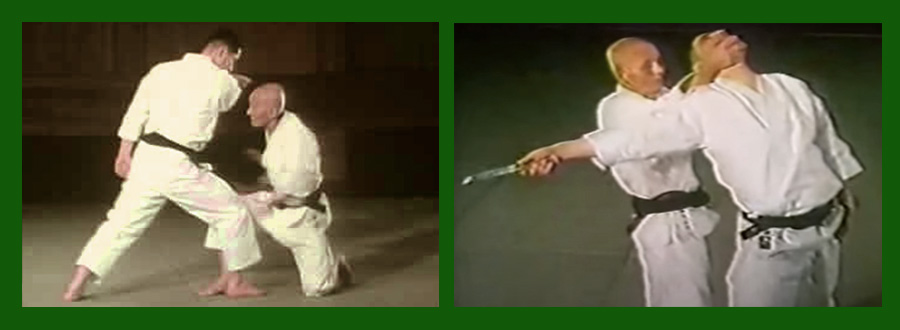
On with the theme.
Everything has to fit into some kind of category; labels must be attached and pigeonholes have to be filled – otherwise how do we know what we are describing. It is a quick way to make sense of things, particularly if we want to communicate to other people what we are talking about.
The quick shorthand operates largely because we are in a hurry – someone asks, “What do you do with your evenings?”, answer, “I go to my karate class”. The conversation could end at that point, or the questioner might ask for more information, out of politeness or maybe they are genuinely interested. And that is your opportunity to volunteer more detail.
Do we want Wado to be called ‘karate’?
But we Wado people are likely to be entirely happy to allow what we do to be identified as ‘karate’. But, is Wado Ryu/Kai etc really karate? Maybe it is something else which has not been truly pinned down, like a newly discovered genus; a wild critter that is neither ‘dog’ nor ‘cat’, a kind of Tasmanian Tiger, but still kicking around, possibly even thriving? [1]
It is entirely possible that Wado sails under a flag of convenience? I have cousins who hold both US and UK citizenship and I can’t help noticing that when they are in the UK they fly the US flag and when in the USA they fly the British flag when it suits them (really noticeable when the accents change). With Wado it very much the same; being identified as ‘karate’ has opened many doors for them, but what about its other possible identifying qualities, what are the competing factions?
Let me try and lay out the case… with some provisos, I am not Japanese and I run the risk of looking at this from a very western viewpoint, so everything here is conjecture and opinion.
Let me start with the easy one:
Wado as Japanese Budo.
This is where we apply the national pride and cultural credentials to Wado. It has such deep roots that to explain it would be like trying to untangle spaghetti. This is the bigger ‘identity’ issue. ‘But Wado was only recognised as an entity in 1938’! – I hear you say. Maybe, but, as we will see, the complexity of the history of Japan’s own indigenous martial systems is not to be taken lightly, particularly as it applies to Wado.
Personally, I quite like the ‘Wado is a distinct form of very Japanese Budo’ angle; it ties it neatly to the unquestioning high cultural and moral characteristics of anything that falls into the category ‘Budo’. But, as we know ‘Budo’ is a broad grouping and can be annoyingly difficult to pin down, especially when it uses high-minded and sometimes vague terms in which to describe itself.
But the subtext here should not be skipped over too quickly – ‘distinctly Japanese’, we are now talking about Budo as a kind of cultural artefact, one that has to be wrapped in the flag. But ‘distinct from’ what?
Historically, indigenous Japanese arts have had their heyday, and since Japan took to embracing all things western, these ‘arts’ slipped in the category of anachronisms; they were considered out of step with the direction Japan saw itself going in. For industrial Japan there was no going back, and, it has to be said, the Japanese performed economic and technical miracles; certainly, pre WW2, where things then went more than a little sideways.
Then came a time when these ancient arts needed to either be rescued from decline or completely resurrected, and, in the marketplace for oriental martial arts they had to stand up for themselves and proclaim who they were. This ‘claiming of the national identity’ came a lot earlier than most people think; it could be said that ‘karate’ was the first skirmish in a culture war that was yet to happen.
To keep this brief; Karate was from Okinawa, with very strong cultural ties to China, one of the earlier incarnations of the characters used to write ‘karate’ was actually ‘Chinese Hand’, so effectively this was an imported system and, considering the rocky historical relationship between China and Japan (which was to get a whole lot worse before it got better), this was not a welcome import in conservative eyes. (This all happened around 1922 and, if you’d asked someone in a Tokyo street prior to that date about ‘karate’, they’d say they’d never heard of it, it only existed in the Okinawan islands [2])
‘Karate’ had to have an image make-over to make it palatable. Otsuka Hironori, founder of Wado, was a key mover in this area. He (and others) helped to make the necessary adjustments and secure karate in Japan as something the establishment would welcome.
Otsuka Hironori Sensei managed to eventually unshackle himself from the Okinawan karate system that he had previously been so eager to embrace (whether by accident, fortune or design is open to speculation) and from that base and his martial cultural roots in Shindo Yoshin Ryu Jujutsu, he was able to craft something new, something distinctive, and was entirely happy to describe it as ‘Japanese Budo’ (while still holding on to the ‘karate’ moniker).
Ducks and Zebras.
‘If it walks like a duck, quacks like a duck and looks like a duck…it’s a duck’. Take a quick look at the qualities that the casual observer would see in Wado karate, a kind of comparative checklist; what is it you find in most styles of karate?
- An emphasis on punching, kicking and striking; which lends itself well to a sport format.
- A training regime which includes solo kata, which all follow a similar external structure and hold on to original names which define their Okinawan origins.
- A training uniform that would not be out of place in any karate Dojo in any style in the world.
Bear with me on this one; the saying, ‘When you hear hoofbeats, think horses not zebras’. This is told to trainee doctors, reminding them to think when diagnosing, of the most common, hence the most obvious answer. But I recently heard a doctor explaining how this idea was of limited use and how she had once misdiagnosed a patient suffering from a rare condition. Is Wado perhaps the zebra?
Take another look at the above checklist; all but the second point can be explained away; firstly, striking and kicking are not unique to karate. Secondly, it was Otsuka who was one of the main movers in pushing towards a sport format [3]. And thirdly; the uniform (Keikogi) was just a convenient design development that happened over decades, which was inevitable really.
Point 2 has been chewed over a lot by karate people, both Wado and non-Wado, but I will offer my view in a nutshell. Otsuka saw something in the karate kata that he could use. What he wanted was a framework, no need to reinvent the wheel. What was really clever was that he transposed his own ideas on top of that framework, which, interestingly, was hugely at odds with how the other karate schools/styles used it.
Wado as Jujutsu.
Why would that even be considered?
Evidence?
The second grandmaster of Wado Ryu Otsuka Hironori II at some point decided to re-register the name of his school with the authorities (probably the Dai Nippon Butokukai) and call it ‘Wado Ryu Jujutsu Kempo’. So ‘karate’ was dropped completely and ‘Jujutsu’ was added. I am not going to second guess or explain the reason for this, I am not Japanese and I am not versed in the Japanese martial arts political world, but I will speculatively introduce a few thoughts from a very western perspective (always dangerous).
Firstly, apply a similar checklist to the one above, but for Jujutsu, and, from a casual lazy western perspective, nothing stacks up.
The first grandmaster and creator did indeed add a catalogue of standard Judo/Jujutsu techniques to the original list he had to present to the Dai Nippon Butokukai in 1938, but these were largely dropped (the exceptions being the Idori and the Tanto Dori). But, my observations tell me that it would be a mistake to assume that this is all there is to traditional Japanese Jujutsu, the complexity goes much further than Jujutsu tricks [4].
What about the word ‘Kempo’ (or ‘Kenpo’). Actually, this has a long history in Japanese martial arts.
The term Jujutsu did not really exist as a distinct entity in Japan until the early 17th century, before that a whole bunch of other terms were used; kumiuchi, yawara, taijutsu, kogusoku and kempo. ‘Kempo’ is just the Japanese version of the Chinese Chuan Fa, or ‘Fist Way’. This does not mean that Kempo is from Chinese boxing, that is a rabbit hole not worth going down. There is however a strong link with the striking aspect of Old School Japanese martial traditions, often associated with Atemi Waza, the art of attacking anatomical weak points with both hand and foot. There is a suggestion that Otsuka Sensei was really skilled at this prior to his first exposure to Okinawan karate and that his first Shindo Yoshin Ryu Jujutsu teacher, Nakayama Tatsusaburo was somewhat of on an expert in this field.
A conversation with someone closer to the source also suggested that the word ‘Kempo’ had been around earlier in the history of the formulation of the distinct identity of Wado, but I have been unable to verify this with documented evidence.
All of this tips the scales in favour of the inclusion of the word ‘Kempo’, but, this is just my opinion, there has to be more to it than that, there always is.
One more piece of evidence to muddy the water.
When master Otsuka had to register his school with the Dai Nippon Butokukai in 1938 he officially recognised one Akiyama Shirobei Yoshitoki the semi-mythical founder of Yoshin Ryu Jujutsu as the founder of Wado Ryu, rather than himself. This might not be as unusual or controversial as it sounds. Firstly, there is the Okinawan/Japanese problem, so this is a smart political way of painting Wado in the right colour to be accepted in the highly conservative establishment of the Butokukai. But, Otsuka Sensei himself explained this point; saying that, because the actual ‘founder’ of karate was unknown, his best option was to name Akiyama. [5] The suggestion being, I suppose, that the Yoshin Ryu (SYR) component of Otsuka’s new synthesis was significant enough to make this entirely permissible.
There is also an historical precedent, well in theory anyway, this is to do with one of the early branches of Yoshin Ryu Jujutsu, not so very far removed from Otsuka Sensei’s root art of Shindo Yoshin Ryu Jujutsu.
In the 1700’s one Oi Senbei Hirotomi seems to have picked up the reins of what was established as ‘Aikiyama Yoshin Ryu’; a theory goes that in his efforts to claim a direct lineage for his curriculum he also used the Akiyama Shirobei Yoshitoki name in a more blatant way than just applying it to the signboard of his school, he used his name as official founder. This may have been to deflect attention away from any thoughts that his own teachings were a blend of other influences by actually saying that Akiyama was the real founder of the Ryu not Oi Senbei! Was this done out of modesty or deception? Was it even true? Who knows. It is one those mysteries that will never be answered.
Ellis Amdur puts other theories forward, suggesting that by placing a semi-mythical person as figurehead you create space to allow your new development/style/school to stand on its own feet and to become established without the glare of unnecessary criticism or accusations of immodesty. Is this perhaps in part, what Otsuka Sensei was doing. [6]
In conclusion, just what is Wado? New species, sub species, synthesis or something that defies categorisation? And, the final question; does it even matter?
Tim Shaw
[1] Tasmanian Tiger (extinct 1936), it looks like a skinny wolf, but it has stripes down its back like a tiger; in fact it was a kind of carnivorous marsupial.
[2] If you said ‘Kempo’ you might get a glimmer of recognition.
[3] Wado wants to play in the ‘sport/competition’ sandpit? Call it ‘karate’ and the door opens, it’s all very clever politically.
[4] At the time many of the listed techniques were common knowledge, even to schoolchildren, but that doesn’t make them any less difficult.
[5] Source; ‘Karate Wadoryu – from Japan to the West’ Ben Pollock 2020. An excellent resource. Who in turn drew his reference from, ‘Karate-Do Volume 1’ Hironori Otsuka 1970.
[6] Source ‘Old School’ Ellis Amdur and further commentary from Mr Amdur at https://kogenbudo.org/how-many-generations-does-it-take-to-create-a-ryuha/
Substack Project.

I have been thinking about this for a very long time, looking for a platform that works as an extension to all the effort put into this blog, and after much research it seemed that the best fit was Substack.
What is Substack?
Substack refers to itself as a subscription ‘newsletter’ but really, it’s a blogging platform which has a built-in email function that allows subscribers to opt for the cost-free content or the paid content (the latter is for chunkier items that are only available behind a paywall).
Some very big celebrity artists, writers and political thinkers are using the Substack platform; to name a few; Salman Rushdie, Garrison Keillor, Patti Smith, Michael Moore (Bowling for Columbine), Chuck Palahniuk (Fight Club), Dominic Cummings, etc.
Why?
This started a long time ago when I was researching and writing articles for the earlier incarnation of my website. I would spend months researching and writing articles like ‘The Naihanchi Enigma’ and ‘Wado and Jujutsu’, publish them on the site and later find that they’d been ripped off without permission or acknowledgement. I initially staged a fight back, but realised that everything on the Internet is up for grabs, it was futile. But the worst of it was that it put me off ever venturing into longer meatier writing projects again. However, I just couldn’t resist writing and I really relished the research and the contacts I had made along the way [1].
I have so much stuff in my back pocket.
As an example; years ago, I penned longer studies on themes like ‘Martial Arts and Meditation’, also a personal angle on what I’d observed in the development of Wado in the UK over the last 40 years (which was big enough to warrant a book on its own). During lockdown I typed many thousands of words on recollections of my own training experiences (snippets of which I have published on here as a taster). In addition, the ‘Naihanchi’ piece is in serious need of an update, as my understanding of both Naihanchi and Seishan has changed considerably. Similar with the ‘Wado and Jujutsu’ piece, which is way out of date, despite my recent efforts – my thoughts have changed yet again!
What’s the Plan?
First of all, I am concentrating on the free subscription material – shorter pieces not dissimilar in length and content from the posts on this platform. I will not be duplicating the posts on here – it would be so easy to just link the two together but the Substack posts will be more technical and theoretical in nature. My thinking is that by running the two separately this will expand the audience. It might be that the two blog platforms will take on different identities through themes etc.
I am hopeful for this new venture, but equally, if it doesn’t work out at least it was worth a go.
Link to the Substack site: https://budojourneyman.substack.com/
Tim Shaw
[1] I had useful information from such renowned martial artists and researchers like Meik Skoss, William Bodiford, Toby Threadgill and others, all of whom put me straight and extended my understanding.
I am grateful to Steve Thain for the suggestion of the name for the Substack project. I agonised over that for a very long time but ‘Journeyman’ chimed with me, as it relates to the ideas found in the medieval guild system. A Journeyman is a middle rank artisan, no longer an apprentice and some considerable way from being a master craftsman.
Humbled Daily.
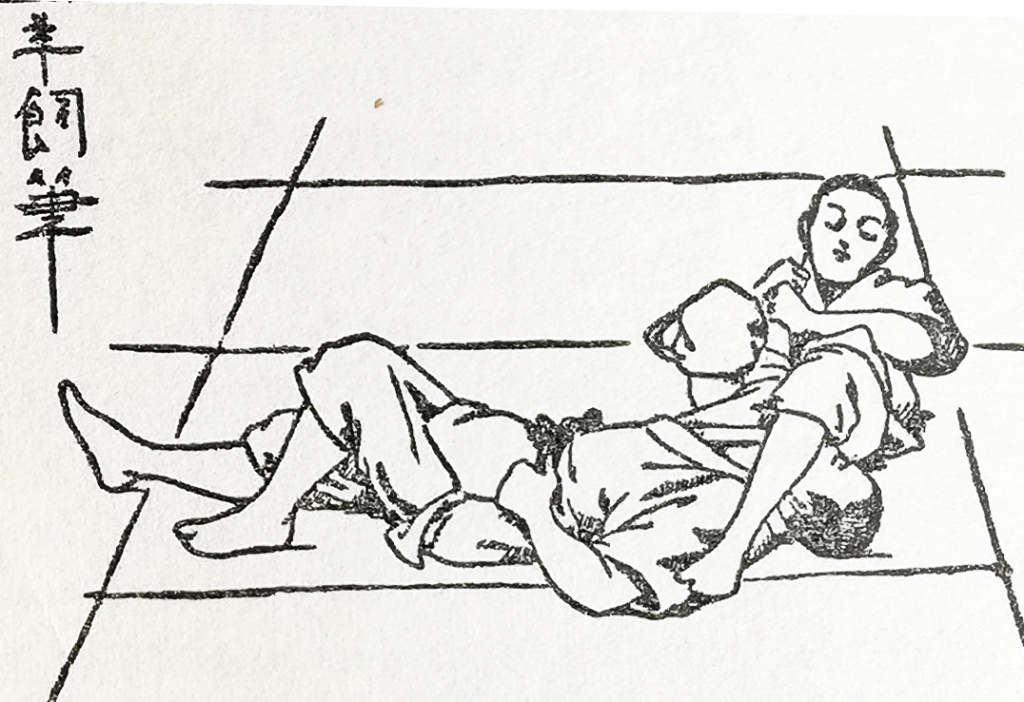
Before I launch into this latest blog theme, just a quick word about a new development.
I wanted to extend this writing project into something bigger and so have set up on Substack, a subscription service which is really taking off. I will write a following blog post to outline my plans, but basically it is already up and running. Please support this new project. It can be found at: https://budojourneyman.substack.com/
On with the theme…
In a recent interview with movement guru Ido Portal he mentioned that grapplers and wrestlers get humbled daily, and it was a healthy thing. They roll on the mat with people of different abilities and frequently experience the challenges that such opportunities present. Often, they fail in their intentions; frequently someone else’s intentions win over theirs and they experience failure. In fact, an intense session may well involve a rolling series of mini-victories and mini-defeats. These are all valuable growth experiences. [1]
Portal says that this seldom happens in traditional martial arts, and he’s right. While not being entirely absent, it certainly doesn’t happen to that intensity.
In traditional martial arts very often the training scenario is so tightly directed that there is little space for this type of training; or, in some cases ‘loss’ is too high a price to pay that it is actually demonised, or only seen for its negative attributes.
What are the real obstacles for us as traditional martial artists to engage in parallel ‘humbling’ interchanges? Here is a list of the potential problems:
- Attitude, this might be related to ego, rank, status etc. I find it ironic that ‘humility’ in Budo is seen as a positive attribute, yet the aforementioned attitude problems are allowed space in the Dojo.
- Avoidance. We know the phrase ‘risk averse’, if you don’t willingly embrace challenge it’s going to be very difficult to improve. [2]
- The constrictions of the training format. We know that our training in traditional martial arts is limited by having to fit so much into a limited time; our priority has to be the syllabus as this is the framework upon which everything depends. How to overcome these limitations often falls on the creativity of the Sensei. Some are good at this, others not so.
- The absence of ‘Play’. Often derided, but, if we think about it, some of our most powerful learning experiences have come to us through play – we only have to think of the physical challenges of our childhood.
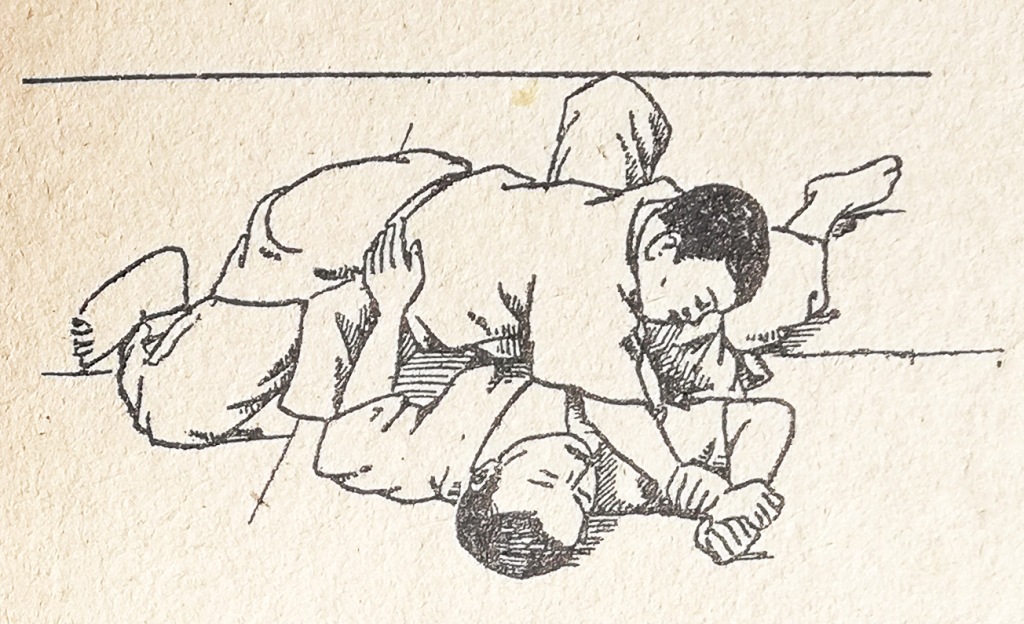
And what about competition and sport?
The demonisation of ‘loss’ is perhaps amplified when martial arts become sports. Although, today there is a trend where everybody has to be a winner, it’s an illogical formula. I will counter this with the pro-hierarchy viewpoint. If there is no ladder-like hierarchy to climb then there is no value system. When everything becomes the same worth there’s nothing to aspire to, no striving, no reaching, the whole enterprise becomes meaningless.
In a karate competition the winner’s position becomes of value because of everyone who pitched in and competed on that day. The winner should feel genuine gratitude towards all of those who competed against him or her, it was their efforts that elevated the champion to that top position. And, although all of those people don’t get the trophy or the accolades, they gain so much in the experience of just competing. This is the true ‘everybody is a winner’ approach.
In a healthy Dojo environment instructors are beholden to devise ever more creative ways of training to allow students to experience lots of free-flowing exchanges, where mistakes are seen as learning experiences. A while back, I shamelessly stole a phrase from an ex-training buddy who was from another system. He called this stuff ‘flight time’, as in, how trainee pilots clock up their hours of developing experience. If you get the balance right nothing is wasted in well designed ‘flight time’ in the Dojo. Over the last ten years or so I have been working on different methods of creating condensed ‘flight time’ experiences. When it’s going well there are continually unfolding successes and failures, and the best part of it is that during training everybody gets it wrong sometimes and therefore has to learn to savour the taste of Humble Pie.
Bon Appetit.
Tim Shaw
[1] I have heard similar things from the early days of Kodokan Judo, hours and hours of rolling and scrambling with opponent after opponent.
[2] ‘Invest in loss’ is a phrase often heard among Tai Chi people. It describes the lessons learned from failure. The late Reg Kear told a story about his experiences with the first grandmaster of Wado Ryu, who said something similar to, ‘when thrown to the floor, pick up change’ and then, with a smile, mimed biting into a coin.
Featured images from ‘The Manual of Judo’, E. J. Harrison 1952.
Books for martial artists. Part 2. East meets West, and West meets itself.

In this second part I want to dip a toe into the way ideas originating in the far eastern martial arts migrated to the west and then morphed into something else.
Also, whether the current brands of ‘self-help’ publications may or may not have something to offer us as martial artists.
Sun Tzu – The Art of War.
If anything can be clearly categorised as being a ‘martial arts’ book it has to be Sun Tzu’s The Art of War. Said to have been written around 500 BCE, this short text contains a wealth of martial knowledge and strategy. [1] The beauty of the book is that it is broad in its application and scope, yet detailed enough to pick out examples for reflection; and it plays with the conceit of being applicable to individual combat and battles involving large numbers.
People in the west have been aware of this book for as long as there has been an interest in orientalism, and inevitably it has been appropriated by the business world. So many spin-offs telling us how Sun Tzu’s book can be applied to the cut and thrust of the high-powered boardroom -everyone is looking for an edge. Titles appeared like, ‘Art of War for Executives’, ‘Sun Tzu – Strategies for Marketing’, etc, etc.
Musashi Miyamoto – ‘The Book of Five Rings’.
Musashi’s terse book on strategy and fighting suffered a similar fate to Sun Tzu. I have mixed feelings about the Book of Five Rings. At least one Japanese Sensei I have spoken to has been puzzled about Musashi’s status, as in, ‘why this guy?’, ‘Why does this dubious character deserve so much attention, when there are so many more elevated examples… Katsu Kaishu was an amazing model, yet nobody talks about him?’.
I have seen ‘the entrepreneurs guide to the Book of Five Rings’ and others have tried to piggyback on this book of ‘wisdom’.
Musashi was a product of his age, and in terms of Darwinian principles, managed to stay alive through sheer cunning and an unorthodox approach (though, what was orthodoxy in that age is very fluid. 16th century Japan was like the wild west). Again, you have to understand the context.
A quick note on the ‘Warrior’ mentality.
Excuse me for my cynicism here but nothing grinds my gears like the overuse and appropriation of the word ‘warrior’.
As a ‘meme’ on the Internet all these ‘warrior quotes’ are guaranteed to cause me to gnash my teeth in anger and frustration.
Musashi ‘quotes’ abound (which end up as not ‘quotes’ at all, just some made up cobblers nicked from another source). [2]
Just what do people mean when they refer to ‘Warriors’ anyway? Are we talking about the modern context; the professional soldier? If so, the gulf between that model and the model presented by someone like Homer when he introduced us to Achilles and Hector, or, in Japan the stories told about Tsukahara Bokuden (1489 – 1571) [3] is just too huge a gulf to be bridged; different worlds, different mentality, different technology. Unfortunately, the romantic appeal of BEING a ‘warrior’ attracts precisely the same people who lack all the idealised and fictional attributes of so-called warriordom, a domain for fantasists and keyboard heroes. Sad, but true.
To return to books.
‘Bushido – The Soul of Japan’
I know that I have mentioned in a blog post previously about Inazo Nitobe’s ‘Bushido – The Soul of Japan’ book. Essentially it is a confection running an agenda, in that Nitobe wanted to build a cultural bridge between Japan and the west with a distinctly Christian bias (he was a Quaker). He created an overblown link between the romanticised ideal of medieval chivalry and an equally fictionalised picture of the ‘code of the Samurai’; as such, in a nutshell, ‘Bushido’ was a modern invention. I’m sorry, but somebody had to say it.
‘Zen in the Art of Archery’.
Although this book has been influential for some time it also suffers criticism not dissimilar to Nitobe’s book. Eugen Herrigel, wrote the book after his experiences with a Japanese Kyudo (archery) teacher, Awa Kenzo. Herrigel was teaching philosophy in Japan between 1924 to 1929, the book was published in Germany in 1948. My view is that Herrigel’s achievement in writing this very short book was that he introduced the element of spirituality linked to Japanese martial training to western thinking. Although I feel a need to offer a disclaimer here… Herrigel has taken some flak (posthumously, he died in 1955); intellectual big guns like Arthur Koestler and Gershom Scholem pointed out that in the book Herrigel was spouting ideas that came from his connections with the Nazi party.
Yamada Shoji in his book ‘Shots in the Dark’ suggests that Herrigel had got it all wrong and that the ‘Zen’ element was embroidered into the story. Yamada also tells us that conversations Herrigel had with Awa Sensei were either misunderstood or simply didn’t happen.
The title alone spawned homages to Herrigel’s book – ‘Zen and the Art of Motocycle Maintenance’ comes to mind. Also, in a previous post I mentioned ‘The Inner Game of Tennis’ by Gallwey; it was Herrigel’s book that inspired Gallwey’s thinking; so, let’s not give Eugen Herrigel too hard a time.
Western books that may be relevant.
Rick Fields books are quite interesting, one in particular. Don’t be mislead by the title (based on what I’ve said above) but ‘The Code of the Warrior – in History, Myth and Everyday Life’ is a really engaging read. Fields gives us a potted history of the urge to take up arms, from the prehistoric times through to Native American culture and even a chapter on ‘The Warrior and the Businessperson’, looking at Japanese business methods and their link to samurai mentality.
Rick Fields other books have a more spiritual dimension and tend to look dated and New Age in their outlook, (written in the 1980’s); ‘Chop Wood, Carry Water’ has a clearly Buddhist vibe with a touch of the ‘Iron John’ about it. [4]
Self Help books.
Although not specific to martial arts training the so-called ‘Self Help’ book explosion may have some useful cross-overs. I had previously written a book review for ‘The Power of Chowa – Finding Your Balance using the Japanese Wisdom of Chowa’ by Akemi Tanaka. There are other books encouraging us to lead better lives that have a base in Japanese thinking, but Tanaka’s book has a clear objective of helping people to restore a meaningful balance in their lives.
I know other martial artists I have spoken to have found certain authors useful in contributing to the spiritual side of their martial arts experience. To mention a few:
- Stephen Covey, author of ‘Seven Habits of Highly Effective People’. I haven’t read it but I did read his book, ‘Principle Centred Leadership’. My takeaway from that was how much Covey was borrowing from other sources – some stand-out examples seem to come from Taoism; but useful nevertheless.
- A raspberry from me for Richard Bandler, I am suspicious of anything from him and his followers; he is one of the originators of Neuro-linguistic programming (NLP). It is, essentially pseudoscience and latest neurological research suggests that Bandler is barking up the wrong tree.
- Following a Zenic direction, Eckhart Tolle’s descriptions of the benefits of ‘living in the Now’ are worth taking a look at (though avoid the audiobook version of ‘The Power of Now’, unless you suffer from insomnia; his voice is one continuous flat drone).
- Followers of this blog will perhaps have realised that I have a lot of time for Jordan B. Peterson; however, only three books have been published [5], but the online lectures are solid gold. Peterson has some interesting thoughts on serious martial artists, who he talks about in his references to the Jungian concept of the Shadow.
The Dark Arts.
This post would not be complete without mentioning what I have called ‘the Dark Arts’. These are almost exclusively western in origin. I am not really sure where I stand on the efficacy or even the morality of these publications, but here is a list:
- ‘The Prince’, Niccolo Machiavelli 1532. The vulpine nature of Machiavelli just oozes off every page. He was a master of deception and treachery, a minor diplomat in the Florentine Republic. ‘The Prince’ is a masterwork for anyone who wants to succeed at any cost. But you might want to wash your hands afterwards.
- ‘The Art of Worldly Wisdom’ Baltasar Gracian 1647. Similar in nature to ‘The Prince’. Gracian was a Spanish Jesuit priest. Winston Churchill was said to be inspired by this book. It is dedicated to the arts of ingratiation, deception and the cunning climb to power. Just as apt today as it was then.
- Contemporary writer Robert Greene is perhaps the inheritor of Machiavelli and Gracian; in fact, he borrows heavily and unashamedly from these sources. He initially shot to fame with his 1998 book ‘The 48 Laws of Power’. The titles of his books always suggest to me as a mandate for roguery and look to all intent and purposes like a villain’s charter, as an example; ‘The Art of Seduction’ 2001 and ‘The Laws of Human Nature’ 2018. This put me off, that, and a conversation with my barber who seemed to enjoy the salacious nature of Greene’s ‘words of wisdom’. But I listened to Greene interviewed on a podcast and my view changed. Having now read ‘The 48 Laws of Power’ I realised that Greene wrote this almost from a victim’s perspective and I saw in it mistakes I had made in my past and have since bitterly regretted. A useful and humbling experience. There is more humanity in this book than I initially assumed – but also a good measure of naked ambition and dirty dealings, if you like that sort of thing.
Clearly this is not a comprehensive list of everything out there, just things I wanted to share. I think there are many martial arts people who want to look beyond the physicality of their discipline and have an urge to find a wider meaning to their efforts – which is entirely in line with the broader scope of Budo, as envisioned by Japanese masters like Otsuka Hironori, Kano Jigoro and Ueshiba Morihei.
Follow your curiosity and enjoy your reading.
Tim Shaw
[1] The Penguin ‘Great Ideas’ edition is a mere 100 pages in length, with each page consisting of very short stanzas – a very simple read.
[2] The only time I felt inclined to use a ‘warrior based’ quote was a very apt one that I quite liked, “The nation that will insist on drawing a broad line of demarcation between the fighting man and the thinking man is liable to find its fighting done by fools and its thinking done by cowards”. Thucydides.
[3] Bruce Lee’s ‘Fighting without fighting’ scene in ‘Enter the Dragon’ was stolen straight from stories about Tsukahara Bokuden.
[4] ‘Iron John – A Book About Men’ by Robert Bly. The author attempted to rescue the soul of masculinity, this was intended as an antidote to the excesses of feminism (well this was 1990!) but it was ridiculed and derided in all quarters as it became associated with all the ‘sweat lodge’, ‘male bonding’ razzamatazz, that might have been quite benign, although misguided, but quickly turned into something darker.
[5]. Jordan B. Peterson books; ‘Maps and Meaning’ (a demanding read), ‘Twelve Rules for Life’, (much easier to read and really relevant) and the latest book, ‘Beyond Order’, also good.
Image: ‘St Jerome in his study’ by Albrecht Dürer 1514. Metropolitan Museum of Art.
Books for martial artists. Part 1. Lost in translation.
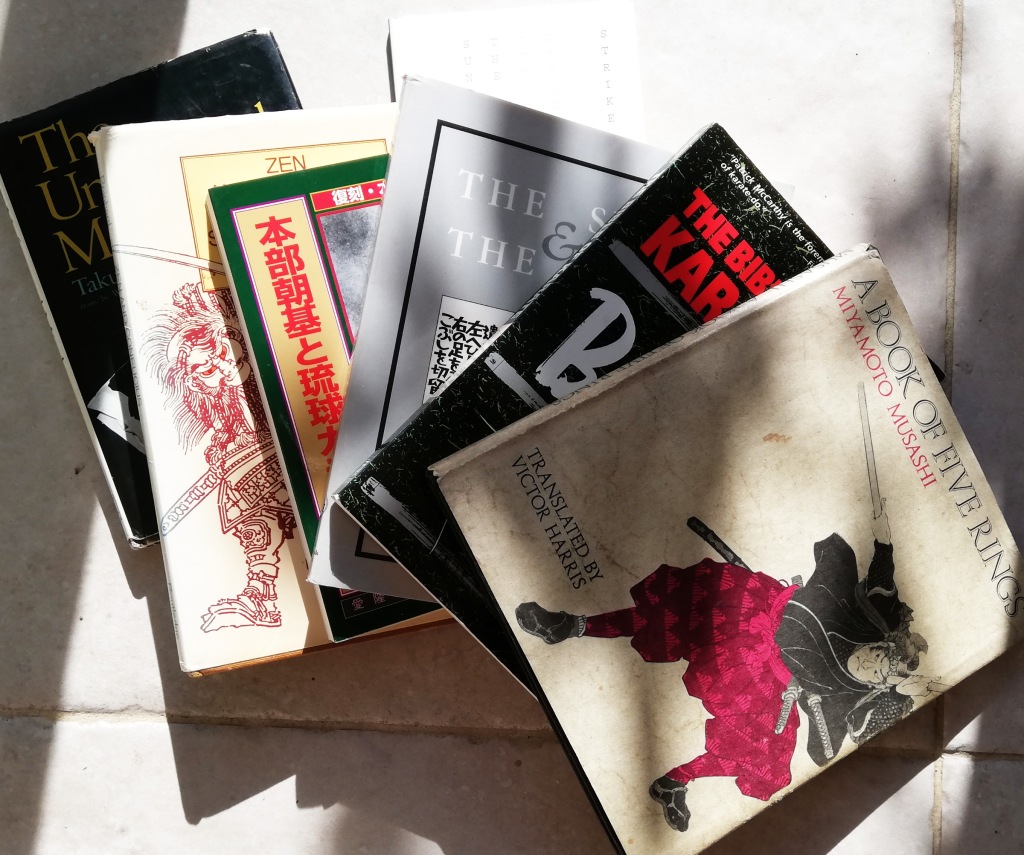
A two-part martial arts journey into where ‘extra reading’ can take you.
It’s only natural for us to want to boost our martial arts learning by reading around the subject, or tracking down published material that in some way gives us hints as to how to focus and direct our lives in a manner worthy of the Budo ideal.
In a previous blog post (‘Why are there so few books on Wado karate?’) I was puzzling over the fact that there are very few written sources specifically dedicated to Wado. But what about the general reader who might want to dig into history, culture or how things operate in other systems?
Publications originating in the far east.
Like everyone else, I have found myself drawn towards written material from Japan or China, with a particular fascination with the really early stuff. But of course, I have had to make do with English translations.
However, experience has taught me to be wary of these translations, as so much can be lost or completely twisted out of shape.
Here are the main problems:
- Bad translations either written with the translator’s bias, a political agenda, the translator’s preconceived ideas, the translator looking at the text through modern lenses, the translator being a non-martial artist, thus not understanding specialised language, etc.
- Misunderstandings; e.g. kanji or old style Chinese characters being badly copied [1], or so outdated as to be almost unintelligible without HIGHLY specialised knowledge.
- Things taken out of context, e.g. their historical context, or cultural context.
- Deliberate obfuscation – text written in a way that only the initiated can understand them.
Of all of the above I think it is the ‘taken out of context’ that is the biggest error. The further back in history you go the more you encounter cultural and historical contexts that are so alien they are almost undecipherable. As a comparison, think how difficult some phrases from Shakespeare are to understand. [2]
Pictures speak louder than words.
You might imagine that pictorial references, even in antiquated texts have more to offer than translations? But that also can be hugely problematic.
Here are two early martial arts examples that come to mind:
The Heiho Okugisho.
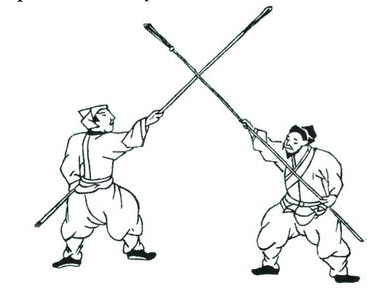
The earliest origin of parts of this martial arts book might go back as far as 1546, but really, who knows? Studies on this suggest it’s a chop-together of mostly Chinese sources that found their way to Japan and became really popular among martial arts enthusiasts in the Edo Period. It included, descriptions and drawings of techniques of spear and halberd, as well as empty-handed techniques and was eagerly devoured by aficionados and dilettantes alike and, according to one commentator, was passed around like porn mags or chicken soup recipes, with a hopeful belief that it was the real McCoy. But even with its enticing line drawings of men in antiquated Chinese dress, just about everything in it is bogus. Not to put too fine a point on it, it’s like a modern-day Photoshop fake. And still people studied it trying to tease out the ‘secrets’ hidden within and looking for the missing link of a Chinese connection to Japanese martial arts. [3]
The ‘Bible of Karate – the Bubishi’.
This particular publication has a strikingly similar backstory to the Heiho Okugisho. The structure follows a comparable pattern and with the same maddening obscurities. Here is a book that was ‘kept hidden’ until around 1934 when parts of it were published in Japan. It emerged from Okinawa and so people inevitably connected it to Okinawan karate. It’s a book comprised of Chinese self-defence moves (line drawings and brief descriptions), various sections connected to herbalism and a questionable set of visual diagrams relating to ‘vital point’ striking. Much of it is written in flowery ancient Chinese characters that only the initiated have a hope of understanding.
When it was released as an English translation in 1995, I was eager to get my hands on it. Yes, it was intriguing and I studied it closely, trying to extract some kind of meaning from it. The drawings I could relate to, but any techniques I could find in them were quite basic; but really, what did I expect to find in line drawings with no meaningful accompanying text? Essentially, as a ‘how to do it manual’ it was (for me at least) a failure.
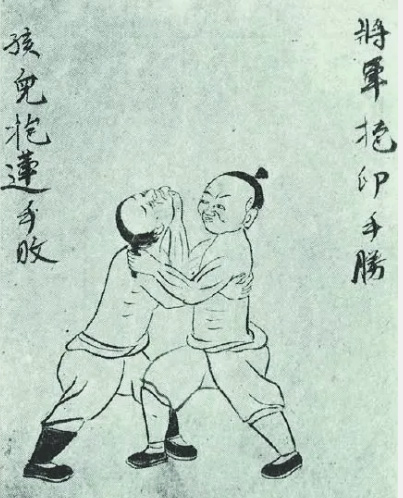
Over the last twenty-seven years more critical and well-informed eyes have examined the Bubishi and in some areas it is just not stacking up. Take for example its claim that it related to White Crane Chinese Gung Fu, and thus suggesting a clear link with Okinawan karate to a Chinese root. Apparently, according to experts in the field, White Crane has so much more to it than that, AND the ‘vital point’ diagrams look more and more like pure fantasy. [4] [5]
Here’s another one; not a book but a document:
“Itosu said…” well, did he really? And if so, what did he actually mean?
Some karate enthusiasts have eagerly brought their gaze towards an obscure, very short letter written by Okinawan karate master Itosu Anko (1832 – 1915) [6]. The letter was written to an Okinawan school board in 1902 and its intention was to explain in ten bullet points the virtues of karate training in the education system and a few basic guidelines as to how to approach training – to keep you on the right track. The letter has value by virtue of the fact it survived. In Okinawa so little was written and most of what was ended up in ashes as in 1945 the American forces had to pretty much raze large sections of the Okinawan islands to root out the resistant forces. But, as a cultural artefact Itosu’s letter is a hell of a rarity and really that is where its value comes from.
Some enthusiasts have rightly acknowledged the translation issue but have found themselves chasing after the wrong rabbit and have suggested that it is better to have a non-martial artist, non-specialist do the translation. Actually, it is that very problem that ruined Otsuka Sensei’s book for western audiences, because the English translation done by a non-martial art specialist misses out the nuances and implications of Otsuka Sensei’s carefully chosen characters.
With Itosu’s letter it is incredibly difficult to tease out anything beyond platitudes and generalisations, it’s not ‘The Da Vinci Code’ or the ‘Mayan Prophesies’, it’s a letter with a clearly defined audience in mind (the school board) and it pretty much does the job. For some people it has become a kind of manifesto, but if that is the case it is thin gruel. Yes, it is interesting, particularly as a snapshot in time and place, we can learn a lot from it as a cultural icon and there is much to gain from this window into a world long gone.
There are too many books and publications to go into in this post but I would like to put in some recommendations that particularly chimed with me and that I am prone to go back to time and time again.
- ‘The Unfettered Mind’ Takuan Soho. I have always loved this book, written some time in the 1630’s by monk/scholar Takuan Soho as a series of essays directed as guidance to the famous Yagyu clan of swords masters, teachers to the Shogun. The suggestion has always been that it was a Zen text but contemporary expert William Bodiford puts a good case that it is really a Neo-Confucian work (to me it fits far better than the contemplative approach of the Zen school of thinking).
- ‘The Tengu-Geijutsu-ron’ of Chozan Shissai (translation by Reinhard Kammer, published as ‘Zen and Confucius in the Art of Swordsmanship’). Written around 1728. Shissai expresses his ideas in a novel format and has harsh words for the swordsmen of his generation. The philosophical content and mindset come to life once you realise what he means by ‘Heart’, ‘Mind’ and ‘Life Force’ as it relates to Japanese martial culture. But there are some clever models and ideas scattered throughout the text.
- ‘The Sword and the Mind’ ‘Heiho Kaden Sho’, translation by Hiroaki Sato. The core essays date from the mid 1600’s and comprise practical guidance by the above mentioned Yagyu family. A great history section, but there is considerable content on the Mind and strategic outlook for the professional swordsman.
It won’t have escaped your attention that the above examples are all from swordsmanship, but it is my feeling that Japanese Budo/Bujutsu is well represented through the refinement of the art of the sword; particularly as it relates to the high level of psychospiritual culture that developed over many centuries and probably reached its zenith in the 17th century. The relevance of this is still present in our approach to training in modern martial arts, particularly Wado; weapon or no weapon, we carry a technical legacy that should still be with us, and we should always be trying to identify and reach towards those rarefied goals.
Conclusion.
Ultimately, reading any reliable material in and around your pet subject has to be a good thing. Understanding context, in particular, is crucial to getting under the skin and really understanding what you are doing. Many systems have depth and history and have gone through refinement and transformative processes to get where they are today. Generally speaking, reading is one of the most sure-fire ways of journeying into the cultural lineage of your system.
My view is that reading gives you glimpses of a mindset that is so very different from our own, whether it is the Itosu Letter or master Otsuka’s terse poetic axioms [7] it is clear that the time, the place and the culture inevitably wired-in ways of thinking and looking at the world that have entirely different priorities to the ones we have today. Yes, there are universal principles like justice and a desire for peace, but the societies were structured on pre-industrial almost feudal models (or were in the process of struggling to break free of those models) so it would be a mistake to simply project our views on to their writings.
In part two I intend to take a brief look at more modern examples (that may or may not be written with martial artists in mind) and look at how the west chooses to utilise eastern examples.
Tim Shaw
[1] Early text were hand copied, often generation after generation, remember, printing presses only worked well with European alphabets. Errors occurred, and then were magnified (Chinese Whispers).
[2] I have a particular fascination with the I-Ching, (said to be over 5000 years old). On my bookshelves I have five versions which I tend to compare against each other, the differences are quite startling.
[3] Reference; Ellis Amdur, ‘Hidden in Plain Sight’.
[4] See, https://whitecranegongfu.wordpress.com/2014/12/02/the-bubishi-myth/
[5] Consider the story of how Doshin So the founder of Shorinji Kempo was inspired to create his system after observing a mural painted on the wall of the Shaolin Temple, when he visited in the 1920’s and 30’s, showing Chinese and Indian monks training together. Although Shorinji Kempo history states that it was actually the spirit of training together that inspired Doshin So, not necessarily the technique. But it goes to show how pictorial imagery can inspire ideas.
[6] Itosu Anko is a very important figure in the more recent story of Okinawan karate and features at the point just before karate jumped from the islands to mainland Japan in the form of Itosu’s student Funakoshi Gichin, who was incidentally the first karate teacher of Otsuka Hironori, founder of Wado Ryu. So, in some ways Itosu can be seen as the ‘grandfather’ of the Okinawan karate element contained within Wado.
[7] Master Otsuka composed short poems to express his ideas of how martial arts should function in the world. An example, “On the martial path simple brutality is not a consideration, seek rather an intense pursuit of the way that describes peace”. Source, article by Dave Lowry, ‘A Ryu by any other name’. Black Belt magazine, May 1986.
Bubishi Image credit: ‘Sepai no Kenkyu’ Mabuni Kenwa.
How detailed is your Wado map?
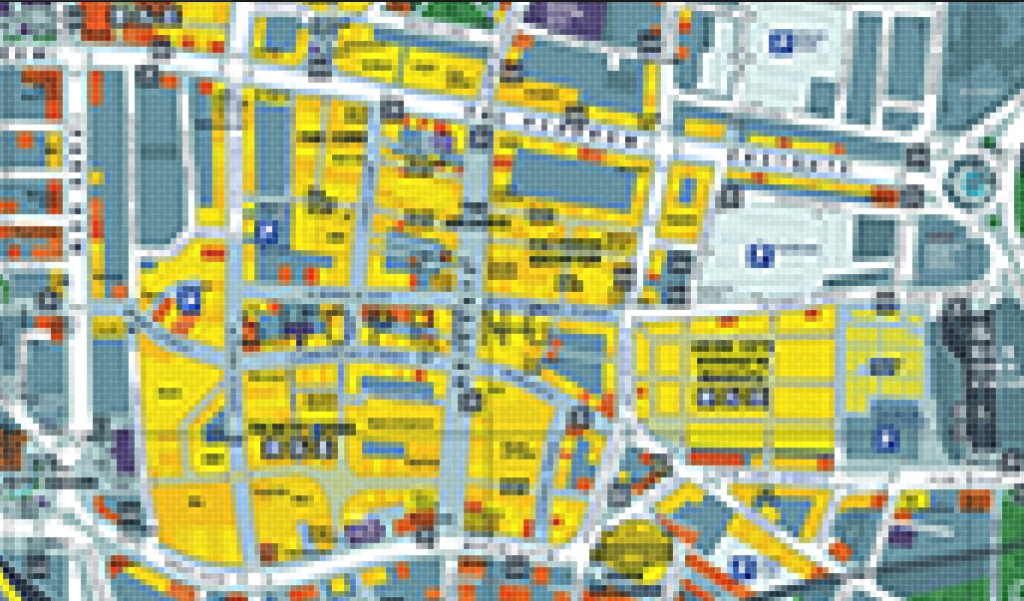
How confident are you about what you know of your system, the discipline you have chosen to study? Are you comfortable with the information you currently have to hand? Do you think you understand the roadmap of that developing knowledge, and is its trajectory obvious and predictable?
Okay, so, I accept that any Wado practitioner reading this might well be at very different points in their journey; some may be just beginning their study, others might be senior practitioners with many years behind them, but the ideas I am going to put forward I am fairly sure would benefit all – or at least stop and make you think. That’s the plan anyway.
Maps.
I am going to start with the broader idea, something I heard a little while ago. There is a theory that we all keep a complete map of the world within our own heads – a personal hardwired version like Google Satellite, Street View and Maps. When I first heard this, I was sceptical.
While I am fully aware that the human brain is perhaps the most complex thing on the planet but really this seemed a bit too far-fetched. But, it is true. That mess of grey matter that sits between our ears that has no awareness of itself outside of its own input devices – our senses, can really do all that, and more!
This amazing mapping, navigation device does not just include places, it also acts as our own personal encyclopaedia, with just about everything there is to be referenced. I use the word ‘referenced’ in a very deliberate way because the reality is that ‘references’ are about all we get.
To explain; while we have this map/encyclopaedia in our head most of this information is patchy and, in many cases, extremely low-resolution. The truth is, we have low-resolution representations of the majority of things we think we know.
Examples:
- Ask yourself about a random country in the world; say, Vietnam? Can you point to it on a map? Probably, but what else can your personalised encyclopaedia tell you? History, culture, language, currency? Unless you know the country very well through direct experience your knowledge will be sketchy, very low-resolution.
- Another couple of words; ‘Steam Train’. To communicate your understanding of this mode of transport, you might draw me a picture of a steam train, complete with funnel and wheels and a cab, all very ‘Thomas the Tank Engine’ – but unless you are an insanely enthusiastic trainspotter with qualifications in engineering and skills in mechanical draughtsmanship, I am not going to be convinced that you really understand a steam train, it will be extremely low-resolution.
Okay, so there are things we might be VERY knowledgeable about (or THINK we are), but the reality of our ‘wired-in’ intelligence and retrieval system (brain) is that it is in a state of constant update, or at least it should be. The truth is that (hopefully) more depth of information is being added and redundant (false) files are being deleted or replaced and new entries or categories are being added.
In some areas, people actually choose not to update their maps and files, this is often found when people become entrenched in areas like politics. Clearly, individuals can be so profoundly tribal in their political beliefs that even in the face of irrefutable evidence they will argue that black is white. But that’s their problem.
How about Wado (or any martial arts system)?
All of the above can be applied to our understanding of Wado karate.
I think it’s a case of being totally honest with yourself; particularly those who have been on this pathway a long time. Come on, do you really believe the same things that you did twenty years ago? How have your files been updated?
An example:
I came to the conclusion a long time back that just about everyone I knew in the martial arts continued their training for completely different reasons than those they started with. It might have been that they initially wanted to build confidence; they were fearful about their ability to protect themselves; but then, over time, their maps changed, their references became more sophisticated, more nuanced and they found something new, something of substance. I can’t get into describing what that is in this post, I don’t have the space; (in some ways I explored this idea in my blog post ‘Martial Arts training and the value of finding your Tribe.’).
Your Wado map.
For every student of Wado karate your initial ‘map’ is usually found in the pages of your syllabus book. This map expands as you move through the grades. Although, I must say, the reality is, it’s not an easily accessible map because it is mostly written in a different language.
But it would be naïve to assume that when we have completed the book we have mastered the system, it doesn’t work like that. The syllabus is a very low-resolution representation of the system; really, it’s a loose framework designed for convenience. In addition, ‘knowing’ the book, with its Kihon, Kata and Kumite doesn’t guarantee you can actually do it; and doing it doesn’t mean you can apply it. Imagine a musician who can read sheet music but can’t play an instrument, or who can play the music accurately but cannot improvise!
The downside of the syllabus book.
In Wado I don’t think reliance on the syllabus book is particularly helpful; it’s a pretty poor map. For me it’s too linear. For systems other than Wado it might easily describe the structure in a straightforward and accurate way, but within Wado karate it only takes you so far in understanding the true nature of this very unique Japanese Budo system. In fact, I would go so far as to say that if the book is the only model/access route, it will ultimately lead you down a dead end. [1]
A different map.
In some of my more recent teaching seminars I have presented a completely different map; a pictorial diagram that I think enables Wado students to navigate a more useful and meaningful way of understanding Wado – but a blog post like this is not the place to share this idea; besides, it is still a work in progress, as it should be. [2]
Expanding the map or increasing the resolution?
I think it is too easy to misread what I mean by developing or expanding the map. I don’t think that the Wado map should be seen as a kind of growing, territorial colonialisation, similar to a video game like ‘The Settlers’ or ‘Minecraft’ where from a tiny localised centre you keep occupying new territory and building new structures; that would be like adding extra pages on the end of the syllabus book.
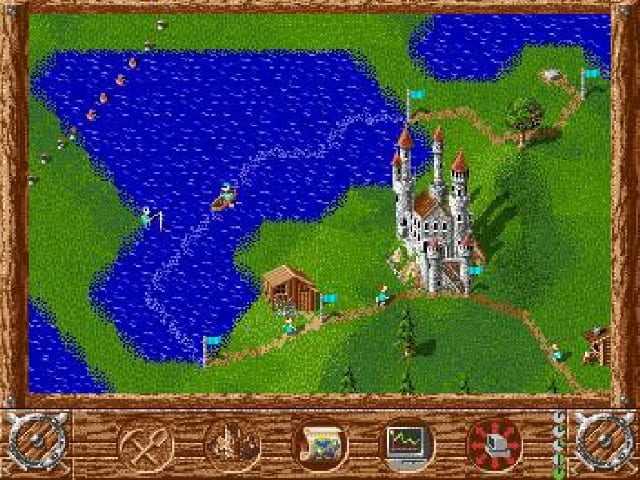
To give a concrete example: Otsuka Sensei was quite content with the idea of nine core solo kata, anything beyond the apex kata of Chinto was classified as ‘extra’. [3]
Paired kata are perhaps another story. If you take them on face value, they are legion! But to focus on their bewildering number is perhaps missing the point.
I speculate that with the paired kata there is a hidden map lurking beneath the seemingly complicated map which features, for example; the ten Kihon Gumite, the thirty-six Kumite Gata, twenty-four Ura no Kumite and all the rest. The clue is when you acknowledge the reality that none of these paired kata contradict the core principles, and it is these core principles that are the real map, the one skulking underneath, and, in content, the ‘Principle Map’ is not such a huge numerical challenge.
The most valuable approach is not necessarily to expand the territory, but to increase the resolution. The territory might well push beyond its boundaries but only in a natural, unforced way, an organic by-product of more defined and focussed examination. The real payback is in the more granular exploration of areas you already think you know.
‘Low-resolution’ has its uses.
Low-resolution thinking is natural to us, it’s the very basic of what we needed to survive and has been with us for tens of thousands of years. But what might have been paramount for hunter-gatherers has now slipped down our list of priorities – I mean who needs to clutter up their thinking about what they might have had for breakfast when they are being chased by a sabre-tooth cat? A boost of adrenalin and the most basic info about an escape route should be enough!
What does ‘increasing the resolution’ mean for your Wado?
Let me start with what it does NOT mean:
- It does not mean knowing more and more about less and less.
- It does not mean you become a slave to detail, which, if taken to its extreme can result in you looking like an obsessive dilettante, all ‘head knowledge’ and no practical/physical skills. [4]
- It does not limit your thinking by allowing you to assume you have it all pinned down. Actually, the reverse should happen; your mind continues to expand.
What it DOES mean is:
- The more granular your understanding the more you appreciate the relationships between the various parts of your Wado map, the underpinning logic.
- This increased resolution enhances your creativity.
- If approached with humility, you begin to realise how little you know, or how things you thought you knew might have been wrong.
How to adopt a ‘granular’ approach to something you thought you knew.
As an example; never, never, never underestimate or dismiss Kihon, I say that because if you take something like the action of Junzuki, this single technique taught at the beginning of your training reveals so much more depth. Why do you think that no matter how many years you have been training you never leave Junzuki behind, you never transcend it? It’s always a work in progress.
But I guess you expected me to say that.
Another example: Take something like the role of ‘Uke’ in paired kata… it took me far too long to realise that Uke is not a mere stooge for the person performing the prescribed technique. Uke has more say in the conversational process and this ‘conversation’ continues all the way to the end of the kata.
The double-edged sword.
I left this part till the end, but it is incredibly important. Essentially, having knowledge in your head is no good on its own. For it to be given any form of concrete real-world potency, the other form of ‘knowledge’ must accompany it; that is the absorption of the technique into your body, to borrow someone else’s rather excellent description; it must be so deeply engrained that it stains your very bones!
Tim Shaw
[1] Yes, we have a syllabus book in Shikukai, and yes it has its uses as an outline, a catalogue of techniques and requirements for grading, but that’s it.
[2] I have been toying with the idea of sharing this type of material through a subscription service like Substack, but I haven’t made my mind up yet.
[3] Notice how the kata Suparinpei dropped off Otsuka Sensei’s map very early on. Also consider Otsuka’s early development of Wado and look at the list of techniques produced for the official registration in the 1930’s; it’s a kind of map, but what was its objective? Who was the map really for?
[4] ‘Dilettante’, I like this much underused word. Definition; ‘A dilettante was a mere lover of art as opposed to one who did it professionally.’
Photo credit: The Settlers screen image courtesy of: https://www.sockscap64.com/games/game/the-settlers-2/
Competition karate – Is this really the way it’s going?
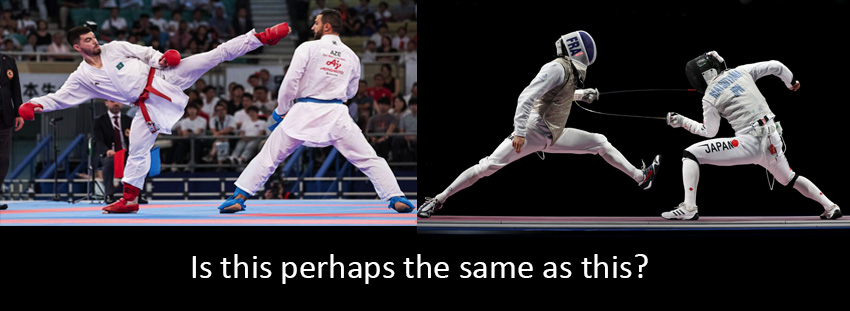
Looking at the latest manifestation of karate as a competitive entity I honestly wonder where the current trends are taking us?
This is a genuine question; I’m not saying I have answers, but I am going to try and unpack my own thoughts through the process of writing.
First; examine my image at the top of this post. Is there any truth in this view? Is competition karate turning into an empty-handed version of Olympic fencing?
For me this came out of a conversation I had while teaching in Europe. An instructor, who is much more engaged with the modern competition scene than I am, proposed this comparison to me, and I was quite shocked really. Since then, my Instagram feed of seemingly endless competition karate training drills, contest clips etc, have all taken on a different guise – once the thought hit me I couldn’t un-see it, this looked like fencing!
Maybe others have come to the same conclusions?
In the process of writing this post I discovered that ‘Karate Nerd’ Jesse Enkamp had also dipped into this area, and, in part, came up with a similar comparison [1]. In this mini-documentary, as an interviewee, he presented an interesting comparison between competition karate from the 1980’s and 90’s and the most modern version. At one point he said that the 1980’s/90’s example featured competitors who were ‘determined to win’, while modern competitors are ‘determined not to lose’. The point he seemed to be making acted as a reinforcement of an observation that modern day karate competitors are so wired that they seem to be perpetually on a knife edge; with the suggestion that perhaps those historical competitors, in their crudity and aggression, could somehow disregard this necessity? I have my doubts.
Perhaps it’s more complex than that?
Maybe it is the pressure of the modern competitor to ‘not lose’ by points alone; whereas his historical counterpart would perhaps ‘lose’ in more than just one way? For example, he might experience loss by, sheer domination or aggression, or just being purely physically overpowered by strength or prolonged staying power AND lose on points? [2]
Mindgames.
The modern competitor surely must be developing a mindset similar to that of a top seed tennis player? I would refer anyone interested in this to Timothy Gallwey’s ground-breaking 1974 book ‘The Inner Game of Tennis’. This book launched a whole industry of peak performance sports psychology, focussing on cultivating a mental state which enabled the highest level of sporting achievement. Interestingly Gallwey ‘discovered’ these techniques through exposure to meditation back in the 1970’s; now where does that sound familiar?
Specialisms.
The modern karate competitor is a specialist; the concept of the ‘all-rounder’ (the person who wins both the kata and the kumite) probably died in the 1980’s, and in those days, they had to prove themselves through huge, continual rounds of eliminations, not in some minor domestic contest.
You can’t take it away from them, as a specialist the modern karate contestant has developed superb athleticism, clearly the domain of the very young. Remember, what the Olympic fencer does with one hand (albeit with a 110cm extension) the karate athlete has to do with all four limbs; that is a heck of a lot to have to look out for!
‘Karate Combat’.
A final word on ‘Karate Combat’, a new franchise/business/media phenomena developed in 2018. An unashamed crossover between sport and showbiz, whose founders credit the emergence of ‘Cobra Kai’ as contributing to their ‘timely’ success.
My view is that if you stick around long enough the same ideas roll round time after time. This same idea was happening in the 1970’s; the American version at that time made stars of Benny ‘the Jet’ Urquidez and Bill ‘Superfoot’ Wallace. This is almost the same, only packaged for the ‘Mortal Kombat’ generation, with all the modern digital glitz.
It is interesting what COO/President of Karate Combat Adam Kovacs has to say about his product: “This is something that karate itself has been kind of crying out for in a way, because anyone with a background in karate beforehand would have only had the option to switch to mixed martial arts, whereas now if they want to fight full contact they can put their years of training to the test at the highest level….We think we are not only doing a favour to karate but also to the entire martial arts community who have grown tired of the copycats because pretty much every single one of these other promotions are trying to copy what the UFC is doing”. [3]
Bear in mind that Kovacs was a successful Hungarian sport karate competitor from 1998 to 2010. I have watched a little of the Karate Combat output, but always come away with the same nagging doubts; particularly, why is it that the fighters have to compromise their technical karate base (if we assume that’s where they came from) to be successful? Even the great modern karate competitor Rafael Aghayev has to depend on the wildest haymaker punches to make it work, to generate the power? [4]. To my mind Aghayev is a full-on class act, but my guess is that in this particular arena he has to resort to the common mode. Maybe it’s not so much a reflection of Karate Combat or Aghayev and the other competitors; perhaps it’s a reflection on the current mode of sports karate?
Like I said at the beginning, I am still working this out, all I can come up with is observations and questions, but no conclusions. But, just where are we going with this? After all, the Olympic karate pony never really got to the starting gate – good thing or bad thing? You can make your own mind up.
Tim Shaw
[1] ‘Martial Arts Journey’. Old school karate link
https://www.youtube.com/watch?v=SYp3BLXYBsk
[2] What is interesting about the examples of ‘old school karate competition’ is that they seem to be mainly from the UK. Look out for Alfie ‘the animal’ Lewis in that very interesting foray where, then karate England manager, Ticky Donovan decided to field a freestyle ‘star’ of his age, as a karate competitor. It didn’t work because Alfie operated in a very different format – I think you can see that in the footage (those of you who can recognise Alfie Lewis).
Also watch, Elwyn Hall, Shotokan KUGB supremo.
https://www.youtube.com/watch?v=E7KYvluiN-k
Fencing photo credit: https://www.reuters.com/lifestyle/sports/fencing-france-roc-face-off-mens-team-foil-gold-2021-08-01/
Karate photo credit: https://www.ispo.com/en/markets/everything-about-karate-premiere-olympic-games-tokyo-2021
[3] Karate Combat Interview Adam Kovacs quote: https://www.givemesport.com/1719277-karate-combat-is-carving-out-its-own-path-in-the-crowded-space-of-combat-sports
[4] Watch Aghayev’s Karate Combat bouts on YouTube slowed down and you will see what I mean.
Sample – Part 23, Foreign Parts.
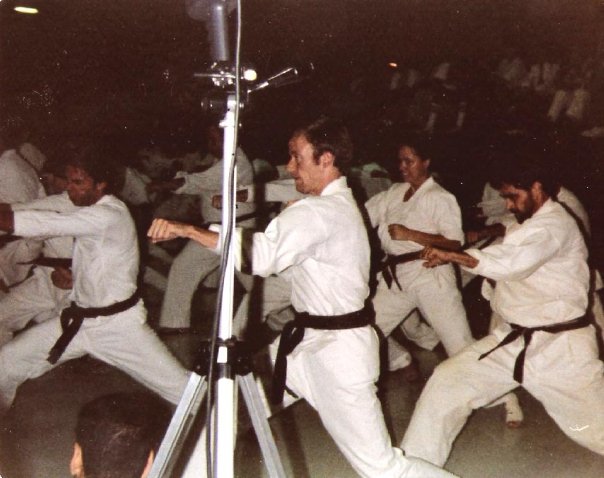
Memories of far-flung locations – have Gi, will travel.
I had always had a longing to travel and explore the world beyond the UK. As evidence for this; during 1981 while I was still wondering what I was going to do in the future and still in Leeds, as a long shot I applied for teaching positions in Tokyo, but with no success. I mention this because I was very flexible in my outlook and prospects and was pretty much prepared to do anything at that time.
Fast forward to later in the year; I sat in a bar in New Orleans chatting with a guy who was on furlough from a Gulf oil rig who told me there was money and travel to be had in the oil industry, though the work was tough. With a wink, he told me that the real adventure and good life was to be found in South America. On the back of that, while I was in Louisiana, I actually went for an interview for a job as an off-shore roustabout on a rig in the Gulf of Mexico. The process stumbled at the last minute when I realised that I needed a Green Card – no Green Card, no job. If that had gone through, any plans I had put in place previously would have just gone out of the window. I suspect that my life would have taken a very different turn if I had gone into the oil business.
But I am getting ahead of myself.
To return to the timeline.
Back in Leeds.
I’d previously hedged my bets by applying to get a Post Graduate teaching qualification. At the time I referred to it as ‘just another string to my bow’, something I could fall back on and dip in and dip out of. But it didn’t quite work out like that.
I got on to the PGCE course in Leeds because I had excellent references and the prospect of a good Honours degree. I also wasn’t quite prepared to abandon my life in Leeds; I had too much invested in it and was reluctant to say goodbye to a city I had loved so much.
But travelling was still on the agenda.
There was a plan that Mark Harland and I were going to do the States in the August of 1981. He and I had travelled abroad together before.
France.
Previously, back in 1979, Mark and I took the boat train to Paris and, once we’d exhausted the capital, we decided we’d explore France. Paris was fun, though I have an abiding sickly memory of trying to shake off the grandmother of all hangovers in the Louvre.
The day we finally chose to leave Paris we had a plan and our logic told us to travel to the furthest end of the Metro system heading for a motorway slip road where we could hitch a lift. But the day we picked was the same day as a rail strike; so, when we got to the slipway ramp we were faced with a queue of about twenty other people all with the same idea. We didn’t help ourselves; we set a target of the town of Chartres; it must have been the A11 as our real target was Le Mans. We wrote the word ‘Chartres’ on a piece of cardboard, but we spelled it wrong!
Against all the odds we got a lift from a young woman in a blue Citroen. At first I couldn’t understand why a woman on her own would pick up two male hitch-hikers, but, whether by accident or design, she gave us the message that she wasn’t the type to be intimidated by two young English guys, this was when she reached forward to where I was sitting in the front and flipped open the glove compartment and there was a revolver just sitting there. Nothing was said, no explanation; I still struggle to make sense of it today.
I mention this because it was on this hitch-hiking adventure that I discovered that Mark and I were compatible travel companions, and, out of this, the American plan was hatched.
However, fate stepped in and the whole project was thrown up in the air (literally) a couple of weeks before we were due to fly out to New York, when Mark rang me and told me he’d had a motorcycle accident and broken his collar bone. I thought about cancelling the trip but the belligerent side of me thought ‘what the hell’ and I went on my own. This went down badly with my then girlfriend as she thought she could ride in on that ticket, but I thought differently. Although she wasn’t happy, later on she typically got her revenge. But that is another story.
New York.
I flew over to New York from London on one of the first no-frills budget airlines, Laker Airways, owned by entrepreneur Sir Freddie Laker. Freddie was actually on the trip himself and went round shaking hands with the passengers. Laker Airways went bankrupt a year later, a victim of the early 80’s recession. The flight was cheap because I bought a ‘standby’ ticket, basically you went on spec.
Apart from the trip to France I’d never travelled abroad before; family holidays were limited to typical UK holiday resorts.
I had relatives in the States and hooked up with a cousin who was married to a Coastguard officer. I stayed some of the time with her and the rest travelling around on my own.
I initially took the Greyhound bus from New York to Buffalo with a brief stop off at Niagara Falls. Then went down the length of the country through Cincinnati and all the way down to Baton Rouge and to New Orleans.
Hitch hiking.
Solo travelling is not without its risks. While travelling I had more than one brush with religious cults who were keen to prey on lone foreign travellers, particularly the Unification Church AKA the Moonies. I didn’t fall for it.
At that time I had a lot of confidence, verging on the reckless and naïve. I had so much belief in my ‘magic thumb’, (the hitch-hiking thumb that did Mark and I so well in France with). I reckoned on using the same technique in the USA.
In the time I was travelling around on my own I chose to stay in the Southern States. I used the Greyhound bus for some journeys; it was cheaper to sleep on an overnight trip on the bus and wake up in a new city, but it was sometimes arctic cold with the intensity of the air-conditioning. I hadn’t packed much in the way of clothing; in fact, I hadn’t packed much at all. I had a shoulder bag, like a two handled Adidas sports bag in which the bulkiest item was my Keikogi. I was living a bit like a tramp.
Generally, the hitch-hiking worked out well for me. I had stitched a Union Jack onto my bag and, while it was useful for the lifts it singled me out too much as a tourist in the cities, it was more useful to just blend in; so, I ended up ripping it off.
I tended to get lifts from pick-up truck drivers, almost always old boys who had been in the military during the war, some asked me if I knew Mrs Brown who lived in Southampton (I guess it was better than asking me if I knew the Queen!). The natural assumption was that the UK was so very small compared to the USA, so everybody knew everybody else.
I had no idea that hitch-hiking was illegal in some states and found this out the hard way.
At some point I fell in with another young guy also hitching. We planted ourselves on the open verge of a rural highway near the Alabama Florida border with our thumbs hanging out. Nobody had been along for a while. I was looking one way up the highway and when I glanced back, he had just vanished into thin air! I later found out that he’d seen what I hadn’t; a cop’s cruiser came up alongside with its lights on. The cop got out, hands on hip (and gun), “Don’t you know that it is illegal in this state to hitch-hike along the highway?”! I reached for the only two cards I had available; I played dumb and I played foreign. When he asked me for ID all I had was my British passport – that did the trick; he let me off with a warning. The guy travelling with me had dived into the ditch, he only reappeared when the cop had gone.
Wado in New Orleans?
I spent quite a lot of time in New Orleans. Amazingly, by browsing the Yellow Pages I found a Wado Dojo in Metairie New Orleans, and one run by a Japanese Sensei, Takizawa Sensei 6th Dan. This was so rare in the USA; Wado is very much a minority style. If you want Shotokan there are so many karate schools to choose from, one on every street corner, but Wado is as rare as hen’s teeth.
When I met Takizawa Sensei I realised that he was so very different from Suzuki Sensei; very westernised, very… American. Suzuki had been over in New Orleans two years previous. The American’s impression of him was that he was very strict and that he ‘liked a drink’. (When I got back to the UK I spoke to Suzuki Sensei, told him where I had been and that Takizawa Sensei sent his regards; Suzuki was really sniffy about the quality of Wado in New Orleans; he had very high standards).
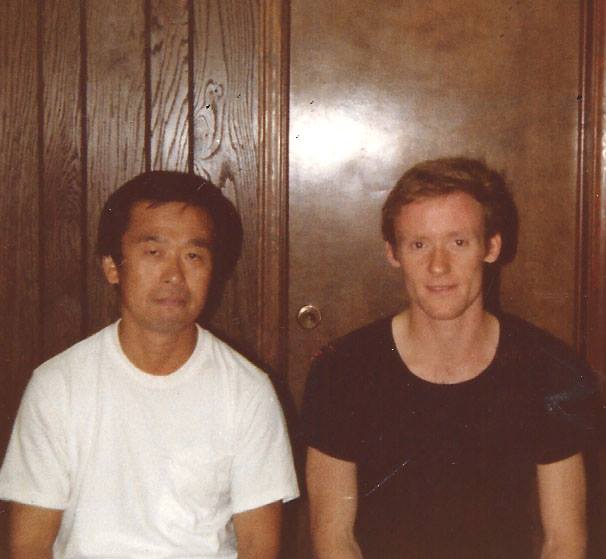
This was my first experience of Wado outside of the UK. I suppose I expected that standards and practices would be universal… wrong. I had the same experience years later training in Japan. The lesson to learn; don’t make assumptions.
When I turned up in Metairie, despite the fact that they had air-conditioning and the Dojo was so swish and modern, the training was really sedate. They had different ways of performing techniques and their pairs work were limited. They were intrigued by Suzuki’s Ohyo Gumite and Takizawa openly told me he only knew Kihon Gumite one to five and had forgotten the rest (??) He asked me to show them to the Dan grades assembled – I was happy to oblige.

University of New Orleans and a familiar face.
I trained there a few times and also at the downtown YMCA, hosted by Takizawa’s then right-hand man, Larry Hoyle and Dojo instructor Van Robichaux, this was in a handball court. But crucially this contact allowed me access to a unique event at the University of New Orleans; a visit by a team of over forty Japanese Shotokan students hosted by resident Japanese Shotokan Sensei Mikami Takayuki, ex of Hosei University and a contemporary of the famous Kanazawa Hirokazu. There were also some other respected Japanese Sensei there, including a familiar face; Tanaka Masahiko, the same guy on the poster we had over the fireplace at 43 Bexley Grove. A bull neck and a distinctive swagger; he had an injury on his forehead right between his eyes. Later, when we had chance to speak, he said he’d had an accident with a shotgun, where he hadn’t secured the weapon and lost control of the recoil and got whacked between the eyes.
He fought two exhibition bouts. The first against one of the Japanese students, it was a massacre; Tanaka disdainfully brushed aside the timid attacks of the student; he was clearly in awe of the master; then Tanaka chased him with an aggressive run of combinations designed to close the distance, he clearly had a plan, wanting to finish with a bang. And he did; he got close enough to grapple, grabbed his opponent by the lapels put his foot in his stomach and flew backwards and launched him over the top; a perfect Tomoe-nage (stomach throw), he held on to the guy, but the momentum was so powerful that the pair of them, on landing, skidded across the floor, where Tanaka executed the coup de grace.
Tanaka was then put up against one of the best American students, there was some joshing, friendly banter and then the match started. Clearly the American was more than a little intimidated by what he had seen; what followed was a good natured, friendly match, a bit of a come-down from the previous show of superiority. I had the feeling that Tanaka held back for diplomatic reasons. He’d also roughed his own student up… because he could.
Afterwards we all went for a drink at Mikami Sensei’s Dojo. Mikami was avuncular and really chilled, we spoke briefly, he asked me to convey his respects to Suzuki Sensei.
A canvas was laid out over the Dojo floor and what I can only describe as a bathtub full of ice and beer cans was dragged into the Dojo. We certainly needed it after the training at the university, where the air-conditioning was barely working.
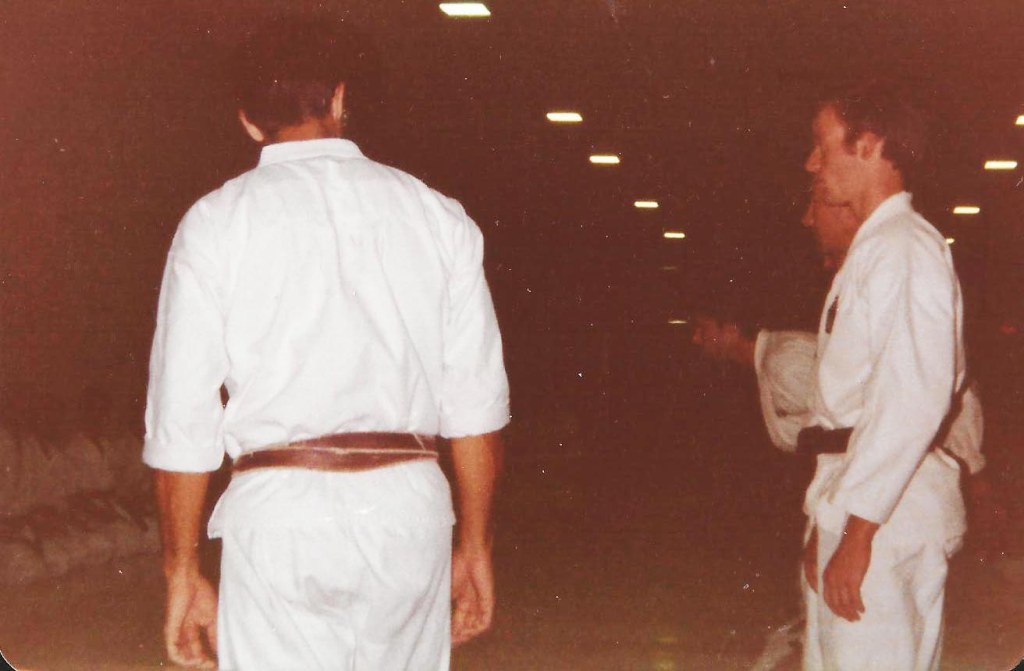
Alabama.
It was at this training session that I met Jimmy Lucky and his wife Virginia. Jimmy was a Shotokan teacher from Mobile Alabama, he was so friendly and he gave me his contact details. He said that if ever I was over that way look him up. It just so happened that I was intending to head east along the coast towards Alabama and Florida so I was able to hook up with them for training. I rang them from the bus station in Mobile when I got there and together we all went along to training. This was another first for me; I had never trained with Shotokan students (outside of UNO). But for them, they had never experienced Wado before either.
I remember we did some ‘one step’ sparring; a pre-arranged single attack with a set response; maegeri, which then had to be countered with a gedan barai, gyakuzuki, for me it was all very basic and against the grain. I think they picked up and that and said, “Why don’t you just do what you would do?”, which I did. I used the body evasions that are the bread and butter techniques of Wado; just enough of the turn of the body for their technique to miss by a fraction, executed with a direct counter. They were intrigued and kept asking me to do it again, they had never come across this style of Taisabaki (body management) before. Shotokan had something they called ‘Taisabaki’ but it seemed to involve a big movement off line or a step out of the way before moving back in again to counter. They couldn’t figure it out, they remarked how one moment I was there and then I was gone!
When the training opened out the fun began and I remember some very spirited exchanges.
After training there was a beery night in a nearby bar, where we ordered pitchers of beer (another first) and turkey subs.
Afterwards, as they knew I had nowhere to stay for the night, one of the Dan grades offered me a bed in his spare room. Later on I found out that he was originally from Liverpool. As I went to bed, he told me that by the time I get up he’d have gone to work; there was plenty for breakfast in the icebox and to slam the door on my way out. Very trusting, I never saw him again.
More adventures in the southern states.
I travelled around that southern edge for a while, sometimes hitching, sometimes on the Greyhound, often sleeping on the bus, at times paying for a room in a cheap motel, I needed the shower I was beginning to smell like a tramp. I had plans for a fuller exploration of Florida but the arrival at a place called Panama City put me off entirely. I ended up in the wrong side of town, on a Sunday, luckily there was nobody around. I fell in with a bunch of old guys, derelicts; I remember sitting with them underneath a pier, a kind of jetty, drinking whiskey out of a bottle passed around in a brown paper bag. They warned me that it would be in my best interests to make my way back to the bus station (bus stations always seemed to be near the seedier parts of town, that was why I ended up where I did).
After that experience I decided to head up into Georgia, overnight. I witnessed some of the most spectacular thunderstorms I had ever seen.
I remember being entertained on the bus by a kid who can’t have been more than eight years old; his dad and the other passengers encouraged him to give full voice to the Kenny Rogers song ‘Lucille’, he knew most of the verses but really let rip on the chorus, “You picked a fine time to leave me Lucille, with four hungry children and a crop in the field…”, everyone clapped and grinned.
I spent a little time bumming round Atlanta and then went as far up as St. Louis, Missouri. I met some colourful people, including a guy who told me he was a hitman for the CIA…yeah.
But I eventually had enough of wandering and returned to New Orleans. To round it all off I travelled across to Houston, Texas, from where I flew back to the UK.
I don’t think I really got the best out of the trip. I had no trouble being on my own, but I think Mark and I together would have really been able to push the boat out.
I came back to Leeds sun-browned from so much time on the open road and invigorated. The experience gave me a boost, I knew more about the wider world.
In some ways it was a bit of a bump coming back to Leeds. I was about to start a new course but we’d let Bexley Grove go; Mark, Steve and Chris had all left. I bit the bullet and, only out of convenience, I returned to halls of residence.
I was temporarily billeted in one of the halls tucked at the back at Beckett Park, this time in the Big House on the Hill, Carnegie Hall, with all the PE students. And, I had to deal with the blow-back from my girlfriend.
Tim Shaw
Image at the top of this post; myself at the University of New Orleans (far right, Jimmy Lucky).
Book Review – ‘The Way of Judo, a Portrait of Jigoro Kano and his Students’ John Stevens.
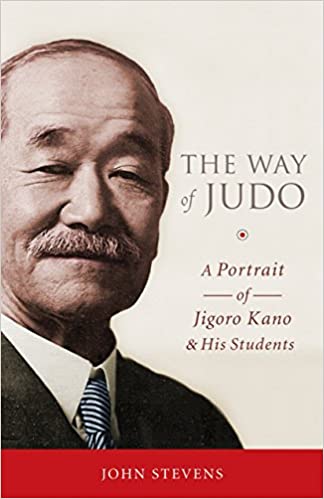
A biography of the founder of Judo and what his life tells us about Japanese martial arts and modernisation.
You might ask what a book about the originator of Japanese Judo is doing appearing on a blog about Wado karate? To explain this, I don’t think it’s too bold a statement to say that Kano Jigoro was instrumental in creating the martial arts eco-culture that the founder of Wado Ryu, Otsuka Hironori, was brought up in. Kano was a moderniser and an iconoclast and so was Otsuka, although Kano was senior to Otsuka by nearly thirty years. Otsuka may have known of Kano but I doubt there was any close connection (Kano died in 1938, the same year that Otsuka founded Wado Ryu as a separate entity – Otsuka lived on until 1982). I will put forward a few observations and speculations about master Otsuka later.
The book itself.
There were so many things about John Stevens biography of Kano that surprised me. I already knew that he was the early model for Japanese modernisation and instrumental in the survival of the cultural legacy of the Old School Japanese Jujutsu, albeit packaged into a new form (how successful he was is too big a subject to go into here), but there was so much more to the man.
Here are some intriguing facts about Kano (to me anyway):
- Kano came from the higher tiers of society, so, financially and socially he already had a leg-up the ladder. Otsuka and his good friend Konishi (1) also came from more than secure backgrounds. These advantages allowed scope for freedom and exploration, as much as Japanese society allowed at the end of the 19th century, beginning of the 20th century. Add to that a fanatical desire to dig really deeply in their chosen field and something truly special emerges with all three men.
- Kano was a traditionalist in martial arts (jujutsu) terms, but also a moderniser who was able to get a significant number of the old school hardened jujutsu masters on-board to synthesise their teachings into modern judo… how was he able to do that?
- Kano suffered considerable set-backs as he struggled to formulate, promote and develop Kodokan Judo, however, his tenacity seemed almost super-human. Clearly the man had charisma and amazing persuasive powers, and, in the early days, led from the front – he could walk the walk!
- Amazingly, he looked towards western culture to find models that would work for the Japanese people. He admired the philosophical ideas behind western physical education but hated the modern concept of ‘sport’, which to him trivialised and subverted the purer objectives of the physical culture of the martial arts (ironic when you think of his legacy today). Interestingly, it was open contests that boosted the status of Kodokan judo in the early days (2). A real shock to me was that although Kano was actively involved in the Olympic movement (particularly the failed bid for the 1940 Olympic games in Tokyo) he was actually reluctant to suggest that judo should be included, for fear that the appetite for medals and glory would be the opposite of how he saw the reality of judo.
- Stevens says that in technical judo Kano was not a fan of groundwork, but understood it as a necessity if he was to make his point. For Kano it was 70% stand-up and 30% groundwork, Stevens quotes a saying, “To learn throwing techniques well, it takes three years; to learn effective groundwork, it takes three months”. (Stevens does not give the origin of the quote).
- It seems clear that even within his own lifetime Kano’s judo was being subverted into something he was desperate to avoid. Everything that he frowned upon in modern sporting culture was acting as a magnet to the coaches and youngsters they taught. Kano was clear in his mind what the model for judo should be and he explained it in language of high ideals, but perhaps these ideals were too abstract and contradicted where the world was actually going? Kano was swimming against the tide.
- In his working life Kano was a model professional educator. His whole career was in education, he genuinely cared about people. As a scholar and a life-long learner he was a wonderful example of an insatiable and a genuine polymath. E.g. it is known that he wrote all his early training notes in English to keep them secret from his fellow trainees. What also surprised me was that Kano is considered the father of music education in Japanese schools, being instrumental in making music compulsory for all middle and high school students.
- He was without a doubt a rebellious figure, in that he kicked back against Japanese conservative views on education and he resisted the militarisation and appropriation of Japanese martial arts to fuel war and expansionism. This would have surely ruffled a few feathers at the time. Some of his political contemporaries were actually assassinated for holding opinions similar to his.
- His successes came at a price, in that he acted as a lodestone for various martial arts crazies, obsessives and prodigies (positive and negative). Too many to choose from, but to name two; Saigo Shiro and Mifune Kyuzo (3).
- Kano died at the age of 77 on board ship on his way back to Japan. It’s just my opinion but I suspect he was just burnt out.
Otsuka Hironori and Judo.
I think it is important to explain that the terms ‘Jujutsu’ and ‘Judo’ were loose descriptions that had been interchangeable for a long time, even before Kano’s ‘ownership’ of the term as a handle for Kodokan Judo.
Regarding Otsuka Sensei; even before he reached his teens Kano’s Kodokan was becoming a major force in Tokyo and beyond, how could he fail to be influenced by it?
In 1906 Kano had opened a huge 207 mat Dojo and the standard Judo Keikogi (uniform) had been established by this time. Coincidentally, one of the earliest pictures of Otskuka Ko (as he was then named) is of him in a group photo of ‘Judo’ students at middle school wearing this new keokogi, this was 1909 and he was in his late teens. While at school he was heavily involved in judo as it was evolving and working its way into the education system. He is also in the school records of 1909 as taking part in the school’s winter training and earmarked as one of the most promising judo students. (Apparently had some particularly strong throwing techniques).
In 1908 the government decreed that all middle school students should be doing either judo or kendo. We know from Otsuka family anecdotes that Otsuka Ko’s mother discouraged her son from kendo, and he had some background training from his mother’s uncle in old school jujutsu and on top of that Otsuka was to come under the influence and tutelage of Nakayama Tatsusaburo, the middle school’s hired coach, who clearly taught him judo and opened the door to him learning Shindo Yoshin Ryu Jujutsu which is largely recognised as being one of the base-arts of Wado Ryu.
In his book, ‘Karate Wadoryu – from Japan to the West’ Ben Pollock mentions that “There is the possibility Otsuka was practicing judo at the Kodokan at some point in the period prior to him starting his study of karate-jutsu”. Clearly this possibility is not beyond the bounds of credibility, it is known that Otsuka was well connected with some of the leading lights of the Kodokan, including Mifune.
Is there any surprise that Otsuka’s concocted curriculum he submitted to the Butokukai in 1939 to register the name and the style ‘Wado Ryu’ was padded out with techniques from the established judo canon? Look at it from this angle; a huge percentage of those who went through the Japanese middle school would have a pretty good idea of what those throws were, they weren’t unique to Wado, they were common techniques. In the same way if you asked an English schoolboy the basic mechanics of manoeuvres in football, he’d be able to tell you; it is part of the system and the way physical education is taught. This is not to take anything away from Otsuka, as it is known that his grappling skill was at a very high level.
But what intrigues me the most was not the technical base of the influence of judo and Kano on Wado, but the philosophical and organisational approach Otsuka later took. Did Kano’s example act as a beacon of influence for Otsuka?
Japan was breaking the traditionalist mould and Kano’s example may have showed Otsuka that this can be done, and that the climate was right.
As an example; Kano is said to have originated the basic idea of the belt system (although the many coloured belts is rumoured to have originated as a later development in Europe). The way we work today, our hierarchies, ladders of promotion, syllabus developments all relate to how things are done in the education system – some people say it is more closely related to military systems, but that argument becomes very ‘chicken and egg’. Remember, Kano was the educationalist with a vision for the whole of Japan and the wider world (hence his involvement with the Olympic movement and the ideas of Baron de Coubertin).
Wado, like other systems rejected the long-established certification system of the Koryu (Old School) Japanese martial arts and adopted another, modernised, system; Kyu/Dan ranking. It was workable, particularly as Dojo branches then became sub-branches, then regional branches, followed by national branches etc. At some stage, somebody must have thought this was the way to go. It has a certain convenience to it. Committees sprang up like mushrooms and seniors became ‘officials’ and then, I suppose ‘suits’ (4). The move towards factoryfication became inevitable, and in many of the larger Wado organisations continues today.
Personally, I don’t look at the Kano story as just something that belonged in its historical time, there are lessons and parallels to be drawn that are just as relevant today. John Stevens did an amazing job with the book and tried to strip away any hint of propaganda and in doing so presented Kano as a formidable figure, but with human flaws. It would be a huge loss for the example set by Kano to be buried in the history books.
Tim Shaw
1 Konishi Yasuhiro, 1893 – 1983 founder of Shindo Jinen Ryu karate, an early pioneer along with Otsuka. As with Otsuka Konishi started out as a traditional jujutsu practitioner, they had a lot in common.
2 The ‘contests were billed as ‘exchanges of techniques’ or ‘exhibition bouts’ and unashamedly pitched school against school; the aim was for Kodokan judo to come out on top, and many times they did. ‘Exchange’ training also happened in the early days of Wado, as Suzuki Tatsuo recounts in his autobiography. So, this was definitely part of the culture.
3. Saigo Shiro 1866 – 1922, was a prodigy of Kano’s judo and elevated the status of the art in early contests, but he was hot-headed and his bad behaviour forced Kano to expel him from the Kodokan.
Mifune Kyuzo 1883 – 1965, another prodigious talent, sometimes referred to as ‘the god of judo’ Mifune was only 5 foot 2 inches and weighed only 100 lb but he was unstoppable and took over the Kodokan after Kano’s death.
4. A phrase that came to suggest; those who no longer actively trained but their authority came from association with Otsuka Sensei way back when.
Cover photo source Amazon Link.
Technical notes from the March 2022 Holland Course.
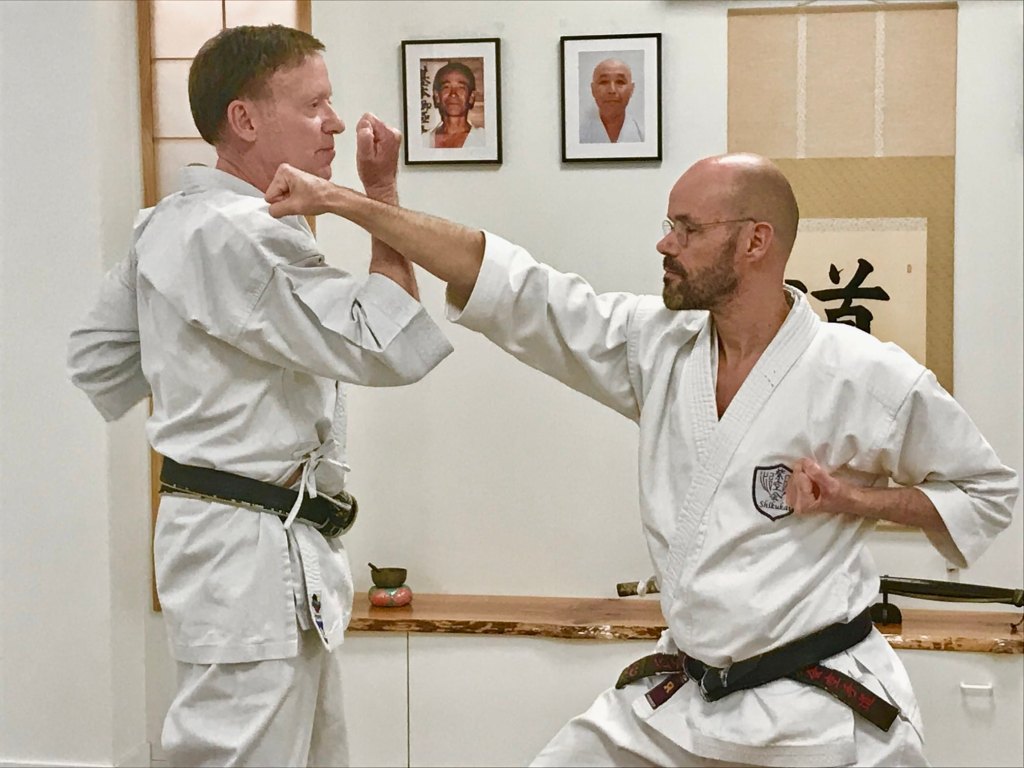
The notes are mostly intended for the students who attended the three-day weekend course but I will present them in a way that others may benefit. I will also steer clear of overly-complicated Japanese concepts that may take a whole blog post to themselves.
Underpinning Themes.
Some of the warm-up exercises were designed to encourage the students to actually map the lines of movement and tension throughout their body, this was done in a static (but dynamic) way, but also tracking these tensions and connections within movement, looking for an orchestrated and efficient whole-body movement.
I also wanted to encourage an attitude of ‘why are we doing this?’ to specific aspects of our training. This is something that Sugasawa Sensei has often spoken about, although Sensei has always stressed that an intellectual understanding alone is not enough; these things must be explored through training and sweat.
How to develop an integrated dynamic to your technique.
This was addressed initially through examining the non-blocking, non-punching hand, what I sometimes tongue in cheek call the ‘non-operative side’. Of course the pulling/retracting hand is not really exclusively about the movement of the hand/arm, it is actually working as a result of what is happening deep within your own body, it is an extended reflection of the orchestrated work of the pelvis, the spine and the deeper abdominal muscles, this combination of factors energises the limbs and the energy that originates in those areas ripples and spirals outwards to create what appears as effortless energy all firing off with the right timing – well, that’s the objective anyway.
Some movements are designed to challenge your relationship with your centre.
This was where we focussed on Pinan Sandan, which seems to pack so much in. Of course, it exists in all movement, Otsuka Sensei’s intentions for Junzuki and Gyakuzuki no Tsukomi are yet another more extreme example. As in Pinan Sandan, you can be extended and stretched to such a degree that you have to acknowledge how close you may be to losing your centre and easily destabilised.
A technical challenge!
How many different ways in Wado movement are we demanding of the various sections of our body to either move in contradictory directions, or to lock-up one section while allowing free movement in another? A clue…It’s all over the place.
Destabilising your opponent.
In this one I asked that we really try to think three-dimensionally (if not four-dimensionally, if we include a ‘time’ factor). We want to destabilise our opponent in ever more sophisticated ways – one-dimension is not enough for a finely-honed instrument such as Wado. We can tip, tilt, crush, nudge, we can even use gravity (amplified through our own body movement), we can also take energy from the floor; all of these are part of our toolkit (on the Saturday we did this through what can usefully be described as a ‘shunt’ into our partner’s weak line).
What do our ‘wider’ stances give us?
Side-facing cat stance is the widest stretched stance you will ever be asked to make (a major demand on the flexibility of the pelvis) with Shikodachi as a slightly lesser challenge, but why? What does it give us? Of course, with all of these things there are a number of actual ‘benefits’ but our focus was on the dynamics of opening the hips out to the maximum. Not in a static way; but instead as an empowered dynamic, the body operating like a spring whose tensions wind and unwind supported by the energisation of the entire body. It’s easy to see and feel when it’s not working as it should, but you just have to put the work in.
Of course, over the weekend we strayed into many other areas, but I wanted these to be our take-aways.
Tim Shaw
Martial Arts training and the value of finding your Tribe.
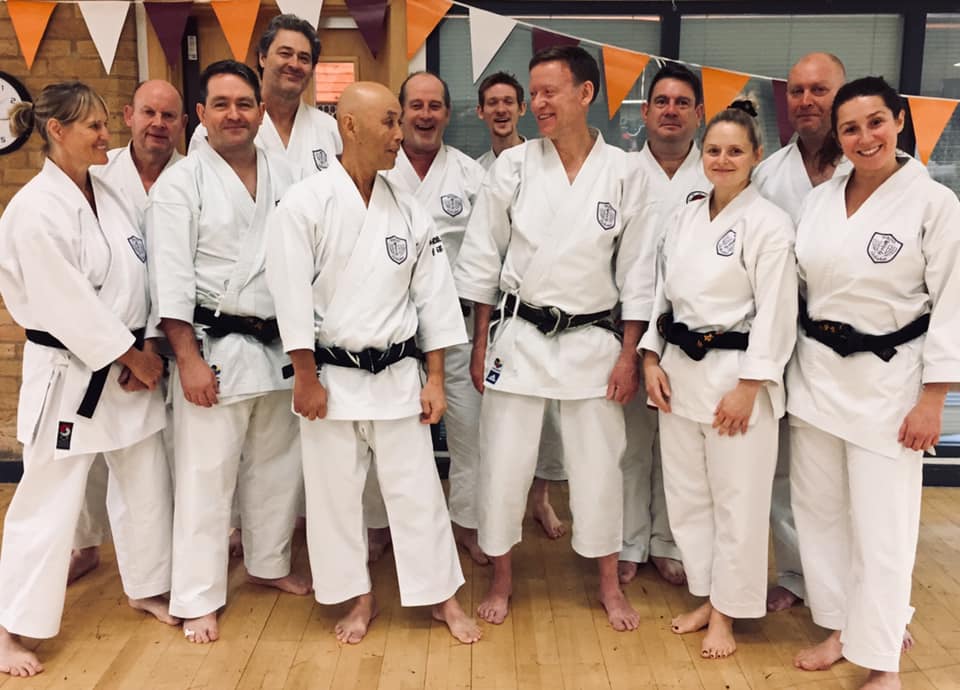
I think everybody has heard the saying, “The whole is greater than the sum of its parts” [1] attributed to Aristotle. It is a useful phrase when applied to the accumulated value we get from our martial arts training, and particularly when we look at the way our various organisations endeavour to support us in our ambitions and travels along the Martial Way.
I want to look at this contribution from the individual martial artist’s memberships and loyalties to their organisations, as well as to the allegiances and bonds they feel towards their fellow trainees who accompany them on their journey – this I will call the ‘Tribe’.
Your Tribe (sources and references).
It is not an original idea, it’s certainly not my idea. For this I am indebted to the book, ‘The Element – How Finding Your Passion Changes Everything’ by the late Sir Ken Robinson (with Lou Aronica) [2].
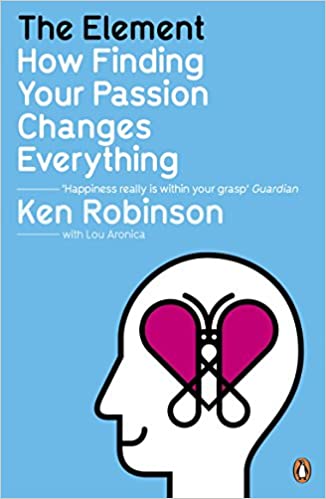
There are so many interesting and inspirational parts to this book, but I will just focus on just this one, as I feel it is maybe something we should make a conscious effort to appreciate and understand, and, if you are in the upper hierarchy of your martial arts organisation, it is worth taking this seriously, as it applies not just to you, but also to every one of your students no matter what their age or level.
In this book Ken Robinson makes a huge thing about the importance of ‘Tribes’ for enabling human growth through finding what he calls ‘your Element’, as in, ‘being in your Element’ and finding the true passion in your life. This could be through anything; through sports, through the arts or the sciences, but, although it is possible, you might struggle to thrive and develop in total isolation, the energy you get from being part of a Tribe of people all working towards the same thing is truly empowering.
Here are some of a huge list of benefits.
You could start with what it means to share your passions and connect with others; the common ground and the bonding has a power all of its own.
Antagonists – the grit in the oyster.
Within the Tribe you meet people who see the world as you do, they don’t have to totally agree with you, but you are in the same zone. In fact, disagreeing with you can create a useful friction and even challenge your established views, which in itself promotes growth.
Collaborators and Competitors.
Robinson says that in the Tribe you are liable to meet collaborators and competitors; a competitor isn’t an enemy, it is someone you are vying with to race towards the same goal, and as such that type of tension can energise you, and the heat of battle (competition) inspires further growth, it’s a win-win.
Also, if your competitor has a different vision, this vision can help to validate your personal goals and either justify or revise your overall views.
Inspirational models.
Tribe members can act as motivators, their acts and sacrifices can inspire you, and remember, the positive relationships don’t have to be vertical, as in looking up to your seniors; but also horizontal, seeking inspiration from your peers. Of course, it is entirely possible that your tribal inspirational models might include people who are no longer around, I include past martial arts masters and not necessarily the ones you have been lucky enough to meet.
Speaking the same language.
Being in the same tribe means that you have to engage in a common vocabulary, but you also have to develop that language to explore ideas.
Your tribe members may perhaps force you to extend your vocabulary, to deal with more complex or nuanced aspects of what you are doing – very obvious in the martial arts, as some of these concepts might be outside of your own cultural models. I can think of many times when talking with fellow martial artists that my descriptions seem to fail me, and then someone will come up with a metaphor I’d never thought of, an inspired comparison or natty aphorism which just sums it up so neatly, and, of course, I will shamelessly steal it. You couldn’t do that on your own, you have to have the sounding boards, the heated debates, or even the physical examples (because, not everything happens at the verbal level, in fact we thrive on the physicality of what we do!).
Validation.
This is something that the martial arts have the potential to do particularly well. I say ‘potential to’ because it seems to almost be taken for granted. I believe that the frameworks used, particularly in karate organisations, are a good example of how to support, validate and acknowledge the individual student’s dedication to their training.
Done properly, this happens in two ways; the first being the official recognition of achievement, an example might be, gradings, which act as a rubber stamp and are generally accepted across the wider martial arts community. In individual or group achievements we are respectful and genuine in applauding our fellow students, which adds real value and meaning to all the blood, sweat and tears and makes it all feel worthwhile.
The second way is more subtle though not lesser in value, and that is related to the softer skills, the buzz of being shoulder to shoulder, the unspoken nod from your instructor or your fellow trainees, the respectful bow, all of these send signals that validate and add value to your membership of the Tribe.
Being in the right Tribe.
Of course, it is entirely possible that you might find you are in the wrong Tribe. There might be something about it that is just doesn’t work for you. If that’s the case then a great deal of soul-searching may have to take place. I suspect that in the past this same ‘soul-searching’ for some people can take far too long; as the saying goes, ‘What a tragedy it is that you’ve spent so long getting to the top of your ladder only to find that it’s propped against the wrong wall’.
You will know that you are in the right Tribe when it ticks all the boxes; not just the above points, but also you will notice that your creativity is boosted, your life feels energised and given meaning.
The Tribe is the fertile soil of personal growth. Robinson says that “Finding your Tribe can have transformative effects on your sense of identity and purpose. This is because of three powerful tribal dynamics:
- Validation.
- Inspiration.
- ‘The alchemy of synergy’.”
I write this at a time when tribes are just beginning to re-emerge after the pandemic. There has never been a more apposite time to appreciate the value of your tribe – just look for the smiles the first time the whole tribe truly gets together.
Tim Shaw
[1] For anyone interested, it is a key aspect of those who support the Gestalt theory in psychology and the concept of ‘Synergy’ (definition: ‘the interaction or cooperation of two or more organizations, substances, or other agents to produce a combined effect greater than the sum of their separate effects’. Oxford Languages definition).
[2] ‘The Element – How Finding Your Passion Changes Everything’ by the late Sir Ken Robinson (with Lou Aronica) https://www.amazon.co.uk/Element-Finding-Passion-Changes-Everything-ebook/dp/B002XHNMVM
Shikukai – Fresh initiatives. New Approaches to Fight Training.
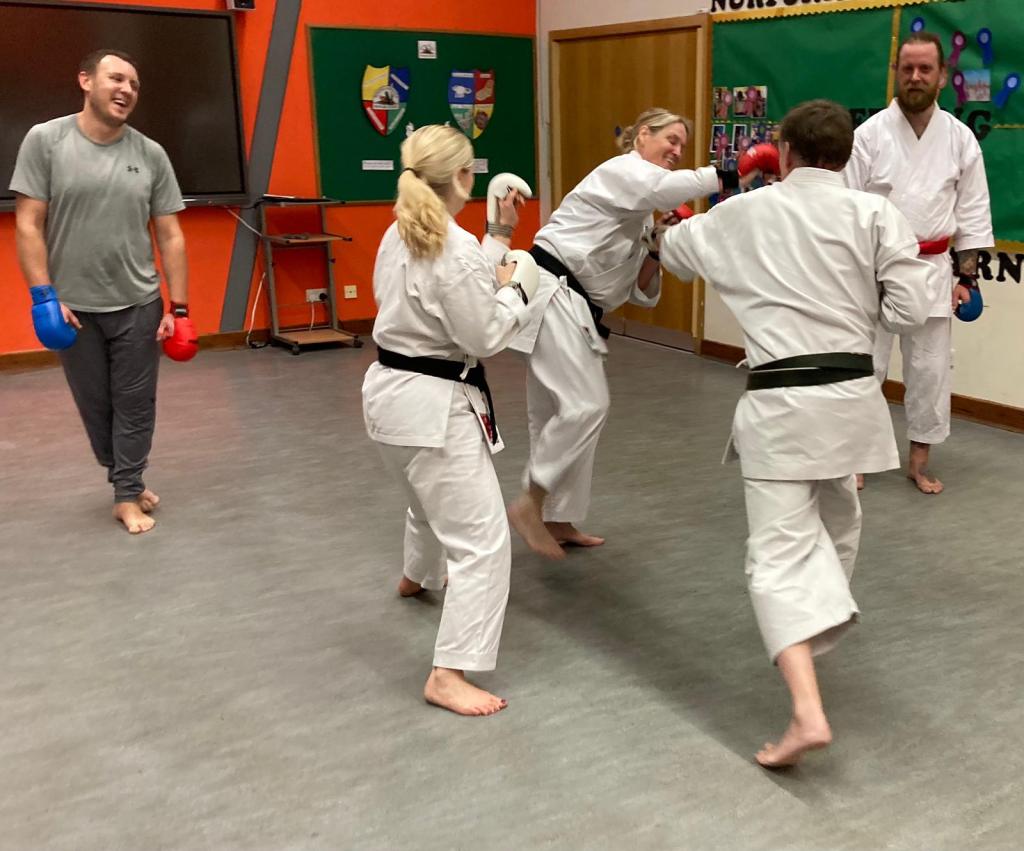
Emerging from the various lock-downs and phased restrictions, what we were really missing were opportunities for sparring, the full range, from drills to Jiyu Kumite. After all, this was what we’d all been brought up on, and, for nearly two years Covid had denied us the chances for free-engagement.
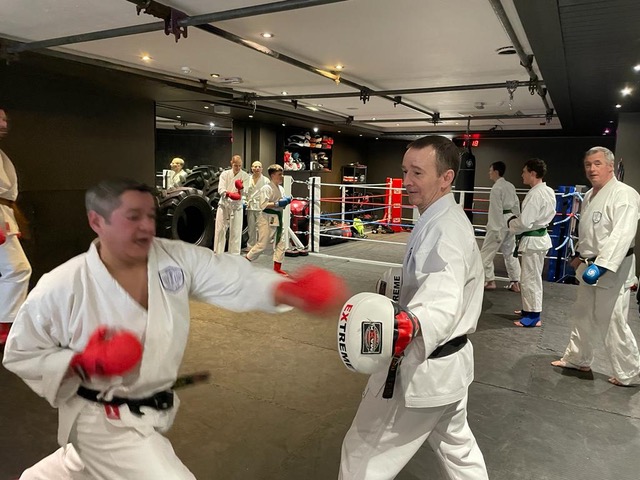
Junior grades, who may have started before or even during the pandemic, had very little opportunity to experience how their techniques would fare in an unrehearsed exchange of punches and kicks.
For many of us this aspect of our training has been sorely missed, and its absence made us realise how much we’d taken it for granted.
Focussing on the positive.
However, there are signs that we may be able to leave this negativity behind us and start to emerge into the daylight.
Within Shikukai, instructors have been galvanised into action with two fresh initiatives specifically related to kumite training, developed independently and born out of the fermentation time forced on us by Covid.
The Shikukai team of instructors refused to allow training to be put into suspended animation during the various lock-downs and isolations and instead crafted new ways of continuing training (e.g. Zoom) which brought about fresh ways of looking at what we do. Which, incidentally, also fed into our current restructuring and modernising initiative within Shikukai as a whole.
Fresh ideas.
The two initiatives are up and running; one in the South West, devised by Steve and Pam Rawson, and the other in Essex, piloted by Steve Thain.
These two projects are refreshingly different in approach, which to my mind underlines the diversity available in this aspect of training. Fight training supplies opportunities for some really creative thinking; a contrast to syllabus work and the focus on minutiae associated with high technical demands.
Weymouth.
Steve and Pam’s ideas sprang out of their focussed Zoom sessions geared towards fighting drills – a regular weekly event over the last few months. It was almost inevitable that they would want to transfer this into live, face-to-face training, and an opportunity opened up in Weymouth.
A new business appeared in the town centre called ‘The Combat Lab’, a multi-disciplinary martial arts initiative/business project. Steve and Pam approached the owner and arranged dates and times for their proposed workshops, the first of which occurred in January 2022.
They planned to take full advantage of the space and the facilities. The workshop was designed with the use of equipment (bags etc.) in mind. Training was thoughtfully constructed and featured a broad range of fighting skills, including drills and take-downs.
For this first workshop Ken Bu Jyuku students were well supported by Shikukai members from Exmouth and Chippenham. With a new date set for March and a revised format creating separate space and time for women only training, followed by men’s training. Places are limited, so contact Steve and Pam if you are interested (Full details on the main Shikukai website).
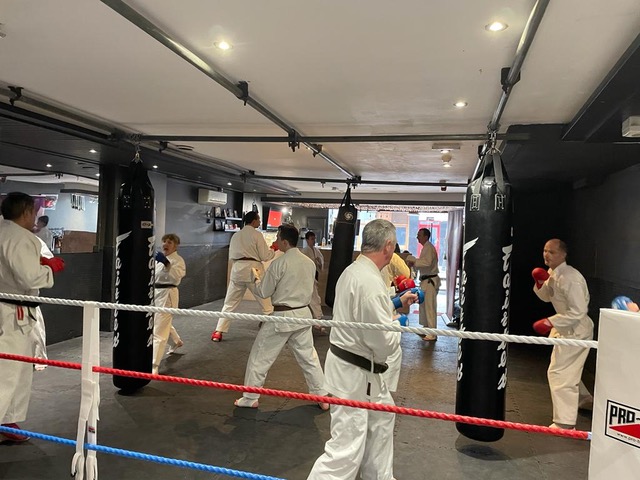
Essex.
The project in Essex took on a different form. The springboard for this came from Steve Thain’s initiative to organise ‘Pop-Up’ workshops during gaps in pandemic restrictions. Although these were not exclusively focussed on fighting, they were designed to explore free-form movement. For Steve the inevitable next step was to design ‘fight-based’ versions of the same Pop-Up model.
His approach was to trawl all of the go-to fight training methods developed over the years. He drew up a list of twenty numbered practices.
The lowest numbers related to the most accessible methods; ones suitable for lower graded, least experienced students; while the higher numbers required significantly more skill and experience. Students were then given the choice of which level to work at. This instantly reduced any trepidation the least experienced may have felt.
The modes of fight training included such things as; mirroring, shoulder tapping, one attack one defends, Shiai, Ohyo Henka Dosa, and fifteen others too difficult to explain in a brief blog post.
Having participated in two of these workshops (the last being Feb. 1st) although, by its nature as a ‘pop-up’ it is only for one hour, it’s very intense and hugely enjoyable, whatever level you are at.
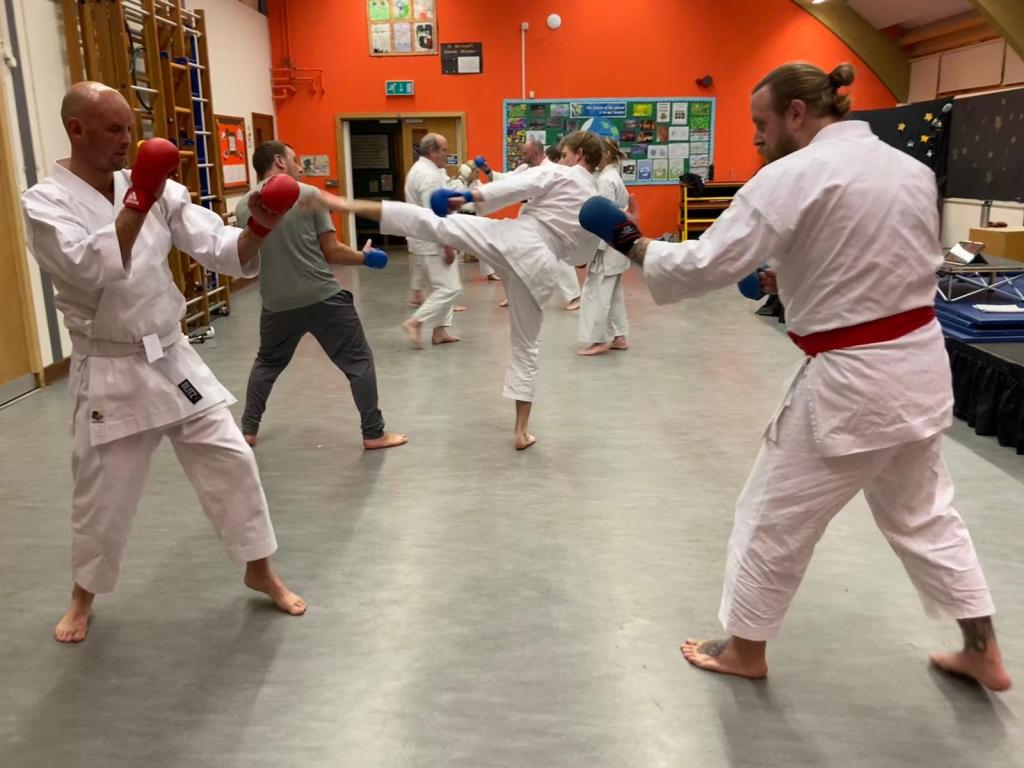
The next one takes place in March (date to be confirmed).
Tim Shaw
Personal Security and Society, a Different Perspective.
On the back of the earlier blog posts about self-protection, I thought I would try and look at the bigger picture; particularly as it relates to society.
While I have no qualifications in sociology, criminology or demography I want to present some different ways of looking at things.
The main thrust of this post will be to put forward a series of models that may well clarify a few points and maybe explode a few myths. I will back this up with examples from various sources.
A few basics.
It goes without saying that the reasons for our success as a species is our ability to collaborate, communicate and work as a group to get stuff done with the minimum of friction [1].
To do this you need agreed sets of rules, which over time solidify into laws that we all have to agree to abide by if we want to live within our tribe/society.
And then there are whole swathes of unwritten social nuances which oil the wheels and involve social protocols, good manners, respectful behaviour and not giving in to the destructive, selfish aspects of our basic impulses. We rein ourselves in because we are mindful of the impact of our behaviour on those around us and how that affects our relationships and status in the group. For humans this is incredibly complex, at both the formal/legal level and the more fluid, unwritten domain.
The Framework.
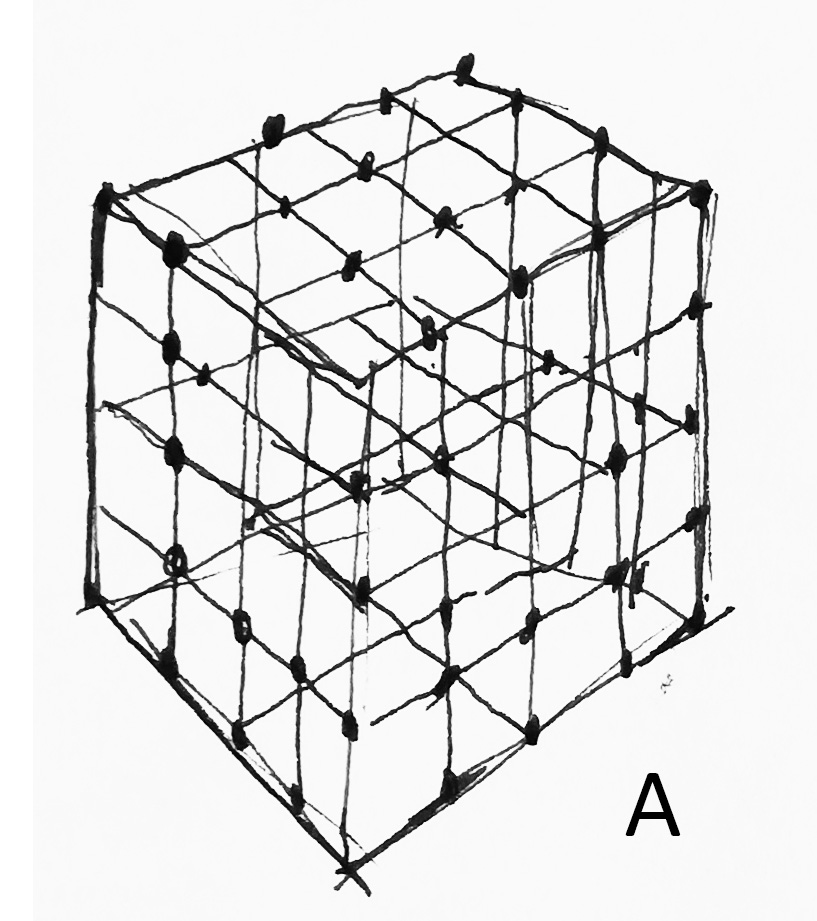
In my mind’s eye I see this as a framework. For me society is like a complex cuboid mesh, of which the strands that hold it together are both our guidelines and our constraints.
Young children grow learning to gradually adopt and navigate this framework. In their very early development it is the parents who construct and manage a world for the child that balances their needs and wants (and freedom of personal expression) and steers them towards what society expects of them.
Gradually these young children become civilised and the process continues to unfold all the way through from their home life to their schooling.
They are expected to create and navigate friendships, as well as stay within the gridlines of first; nursery, then junior school, secondary school and ever onwards. All of these institutions have a secure and complicated framework, which needs to be navigated if they are to survive and thrive. It can be disastrous for a child to fail in this responsibility (for whatever reasons), if they do, they risk being unpopular, ostracised, seen as literally an ‘outsider’ (outside ‘the grid’), which, if left unchecked or unsupported, can breed bitterness and resentment, where any perceived faults are projected outwards onto the big bad world and the people who inhabit it. In its most extreme example, it can lead to events like the Columbine High School shootings of 1999. [2]
Schools as the archetype of ‘the Grid’.
From my experience schools are typical and easily observable examples of this complex gridded cube.
I have seen this first-hand; particularly over the last three years, as a career turn has taken me inside over twenty UK secondary schools, where I have been able to observe them up-close and across all levels.
The ‘framework’ in schools is so very obvious, it even exists as a physical reality – look at the way architects, past and present, design schools. It is manifest in the box-like rooms all stacked on top of each other, connected by corridors and stairwells; even the outdoor spaces tend to be designed to constrict and control; the imagery of the grid is everywhere.
In the last ten years the physical structure of schools has become even more boxed-in; often for what is seen as very good reasons, reasons of ‘safeguarding’ and ‘well-being’, but you have to wonder, has the world become so much more of a dangerous place?
In an ever-escalating arms race of ‘security’, how big is the threat? Does it warrant the explosion of things like; key-coded exterior security gates and fences (are they to keep people out, or to keep people in?); doorways between corridors having to have swipe-card entries; everyone forced to wear lanyards with ID pictures, and (I kid you not) even lock-down zones with metal shutters that grind-down on the press of a panic button, and metal-detector gateways! [3] I have seen all of these.
You have to ask yourself, is this care and kindness geared towards the well-being of children, or is it thinly disguised paranoia that further feeds into the anxiety of young people? What messages are we giving them?
Within the constraints of this tight and complex mesh we are hoping that young people will be able to experience some freedoms and some elements of self-expression, where they can carve out their own unique identity (which, in the UK, is somewhat negated by the contradiction and oddity of the enforced school uniform![4]) I am sure that self-expression happens, but only in the gaps between the gridlines.
Where does the responsibility lie?
It seems to me that headteachers and governors are engaged in a Top Trumps game of who can outdo who in the personal security/safeguarding checklist. I just don’t think they have thought it through.
Safety in the wider world.
What happens to young people when school is no longer part of their lives?
One could suppose that as they have reached adult status the grid is a more open structure, certainly compared to schools.
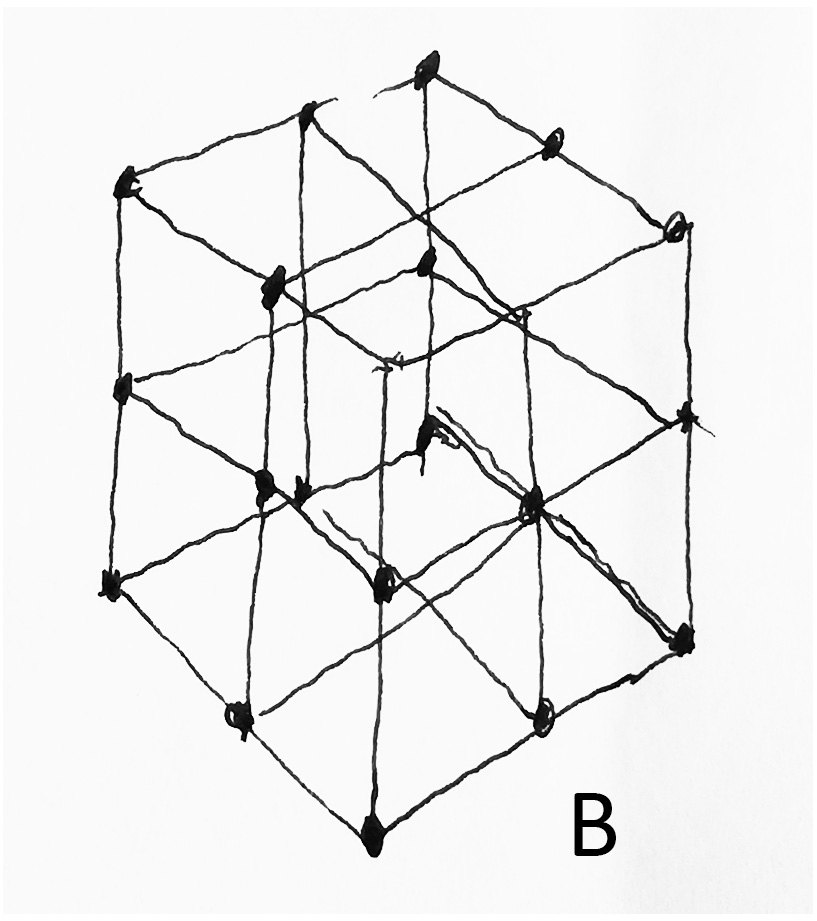
It might be worth considering the example of the recent red flags that have gone up in UK universities where the apparent slackening of the grid has brought about what seems to be an epidemic of sexual predators – what is the truth behind the reported stories? Why has it been proposed that undergraduates have to have ‘consent training’ etc? [5] Is this a failure of the system, or an inevitable malaise unwittingly constructed by the system itself?
On top of this you have to ask yourself, do these young people have everything they need to survive and thrive, to navigate the bigger open-mesh of society and stay out of harm’s way? Has their education and upbringing given them the necessary tools?
They seem to lurch forward into the adult world with their parent’s words of warning ringing in their ears; but the irony for parents is that a mother’s advice to her teenage daughter as to how to stay safe on a Friday night out with friends is often based on what it was like in the 1990’s, so unless she’s got a time machine, it’s not going to be very helpful. The world changes at a phenomenal rate.
Not all grids are the same.
The societal structures (the grid patterns) are not the same all over the world; yes, they deal with the same basic issues of safety and rules but, for example, the gridlines in Birmingham UK are very different from Tijuana Mexico. (Or even Sarasota Florida).
A cautionary tale about grids.
In 2011 two young British men, James Cooper 25 and James Kouzaris 24, while visiting Mr Cooper’s parents in Sarasota Florida decided to cut out on their own after an evening meal out. They were more than a little drunk, and wandered into a run-down part of Sarasota, a place called Newtown. It appears that Newtown is where the gridlines run out of road.
To cut a long story short, Cooper and Kouzaris were found dead at the side of the road. They had been shot by local boy Shawn Tyson 17, there was no sign of robbery, they both had wallets with money and phones; they just strayed into a blind spot on the grid, one which the locals of Sarasota and Newtown would have surely known about. [6]
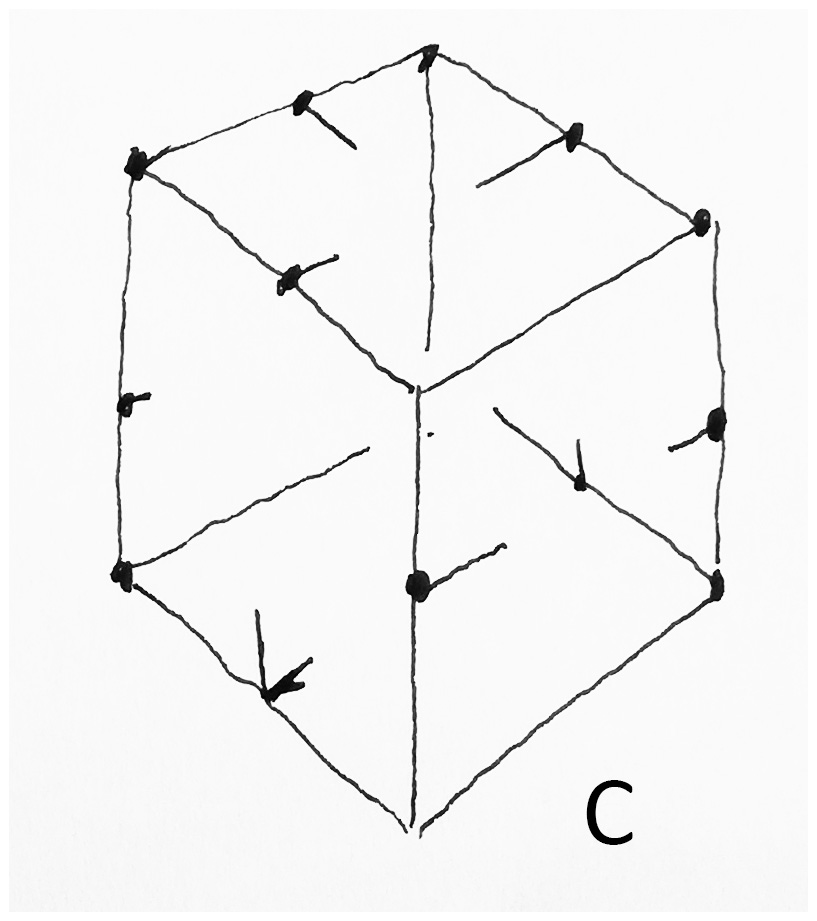
This scenario would be unlikely to play out the same way if they were stumbling around Surbiton or Guildford at two in the morning, because they’d recognise the situation, understand their options and be able to navigate the gridlines that were available to them, while calculating the potential of threat or risks inherent to that particular scenario.
Sadly, it is unlikely that any amount of martial arts or hands-on self-defence training would have saved James Cooper and James Kouzaris.
Final word on terrorist threats.
This is a classic case of ‘head says one thing, but heart says another’, but statistically you’d have to be pretty unlucky to get caught up in a terrorist attack in the UK. Yuval Noah Harari the Israeli historian describes terrorism as ‘a puny matter’ when compared to what happens in warfare. It is essentially all spectacle and theatre designed to stoke up fear, and it does, just think about the example of the emotional and human after-effects of the Manchester bombing in 2017.
Essentially, governments and media do the terrorist’s work for them, they supply the oxygen to these combustible situations, and unintentionally become the recruiting sergeants for the next generation of terrorists through ill-thought out knee-jerk reactions. But, as they know, you’re damned if you do, and you’re damned if you don’t.
Read Yuval Noah Harari’s piece in the Guardian, for a good description of how this works at a rational level.
Keep safe.
Tim Shaw
[1] As individuals in the animal kingdom we make pretty lousy predators; we are not particularly strong, agile or bulky to survive on our own without the employment of weaponry, and even then we have to operate in packs to achieve any level of success.
[2] Columbine High School Shootings https://en.wikipedia.org/wiki/Columbine_High_School_massacre
[3] Most schools I have visited have ‘lock-down procedures’, some have interior door wedges with the fear of the possibility of an ‘active shooter’, and this is the UK not the USA. The UK has only ever experienced three school shootings and all of the casualties (bar 1) occurred in just one incident. Compare that to the USA, where between the year 1999 and 2012 there have been 31 school shootings.
[4] Radical educationalist professor Guy Claxton said that schools tend to be constructed on one of two models; the are either ‘monasteries’ or ‘factories’. ‘Monasteries’ have; authorities in gowns/robes with other robes/uniforms for novices and are based upon some vague notion of revelation, with a massive worship of ‘tradition’. While ‘factories’ have bells to end shifts and have the intention of turning out identical little ‘products’ and are judged by quality controllers (Ofsted, Performance management etc), they won’t admit it but they are really exam factories. I know this because for a long time I worked in a factory that was built on the ruins of a monastery.
[5] Consent training and even ‘Good Lad workshops’ in universities and colleges. See this link from the University of Cambridge https://www.breakingthesilence.cam.ac.uk/training-and-events/training-students
[6] Murder in Florida, https://www.bbc.co.uk/news/uk-england-17479559
Sample – Part 12, Early days in Leeds.
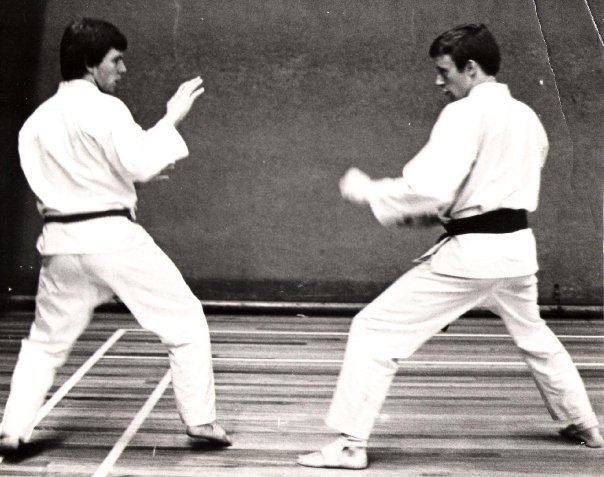
1978 through to 1981. Undergraduate years at Leeds Polytechnic, studying graphic design.
Living in Headingley (and later Harehills) and taking over the running of the Leeds YMCA Wado Dojo under the authority of Suzuki Sensei’s UKKW.
Post Mansfield and my arrival in Leeds had given my karate full licence to develop in its own way – of course within the constraints of mainstream Wado and very much marching to the UKKW/Suzuki drum. In my own head I reckoned that the apprenticeship had been served.
By that time I had pretty much decided that competition karate was not going to give me what I needed. Although I did enter competitions in my early years at Leeds I became disillusioned with how things were run (e.g. Carlisle, Huddersfield, the Nationals). I had no desire to build a team to rival the top teams of the day, it just wasn’t part of my agenda (the same Leeds Dojo became famous only after my departure, after Keith Walker took over and embraced the competition world with his characteristic energy and enthusiasm).
Although I was building a Dojo, it was all geared towards ‘Project Me’. I think I must have figured that if I was going to be running the club with some authority as a twenty-year-old, I had better make sure that I could walk the walk.
Supplementary Training.
For me it was split between Dojo time and supplementary training time; and it was in this supplementary training that I became quite creative; basically, I was willing to try anything.
I started off living in student halls of residence at Beckett Park, Headingley, north of the city centre. While I was there, I gained permission to train in the weights room of the PE college, Carnegie, which was always interesting because you never knew who was going to walk through the door. I hardly saw any of the rugby set in there; the only heavy lifting they were interested in was in the Union bar. It became a bit of a joke, the piss-head rugby crowd were only ever seen in the evening, while the serious athletes were only ever seen at 6am for their morning run – always an early night for those people.
In the weights gym were specialist athletes; like the canoeists, guys with massive shoulders, yet tiny skinny legs. And throwers; lots of throwers, javelin, discus and shot; many of them trained by Wilf Paish, a small man who would drift in and out of the gym and never seemed to smile. Paish had his finest hour in the 1984 Olympics as mentor to Tessa Sanderson and Fatima Whitbread.
I initially tried to connect with the Shotokan group on the campus, but the Shotokan big cheese must have seen me as too much of an outsider and let me know that I just wasn’t welcome. He told me to go and train in a corner; as a result this was a very short-lived experience.
Always looking for a new opportunity to train, I used the gym equipment at the Leeds Playhouse when I was in the city centre, sometimes lunchtimes, sometimes early evenings. This was the ‘Multi-gym’ type equipment, but it was very manageable and I was always able to get a reasonable workout.
I even trained with the Leeds University boxing club, however, it interfered too much with my technique. I didn’t let the trainer know I’d done anything before; he liked how I used my waist, but it wasn’t to be; but it was worth a punt anyway.
On top of this I did an awful lot of running. The Headingley parkland and running track were perfect for that, and with all those PE student-types around, it just seemed to be the done-thing, although I always found the early morning runs a real chore.
Lifestyle.
I never lost the habit of walking everywhere; averaging four times a day from Headingley to the city centre site, back and forth; two miles each way. I enjoyed the walking, then, as now, it gave lots of time for thinking and it never felt like a hardship.
The few times I took the bus I always felt resentful, this was magnified by the lousy attitude of many of the bus drivers, who seemed to think that passengers were an inconvenience to their working day. They hated having to give change and were brutal on the brakes when they realised that people were precariously balanced stuffed into the aisles because the seats were all taken; a quick stamp on the brake pedal and people would tumble like skittles! I suppose it gave them some fun in a working day.
As I didn’t drive at that time, everything was on foot; I never saw the inside of a taxi, they were just too expensive.
Parties and events were just word of mouth, an address, a name, or sometimes a crudely printed ticket with the date and time on it. Pre-Internet days meant holding information and a complex map of the city in your head, and any networking seem to operate at the same telepathic level as Aboriginal ‘Song Lines’, we just ‘knew’ where people were liable to be at any point on any given weekend night; spookily accurate in its psychic predictions.
The Leeds Dojo.
Gradually I had picked up a small group of karate students who were all about the same age as me; some were college kids from various courses. This enabled me to really start to pump the official twice weekly Dojo sessions at the YMCA in the city centre.
I don’t for a minute think that we were very technical – certainly not by today’s standards. We used to joke that half of the class time was dedicated to calisthenics; a bit of an exaggeration, but not far off. After I’d left Leeds, Keith Walker had taken over the Dojo; as he’d started with me as a teenager, he very much followed the tradition I had established, and, a visitor from North Yorkshire, a female karate-ka who trained at the Settle Dojo, commented that when she went to train in Leeds (post 1982) Keith had put her through a session that was mostly boot-camp callisthenics. But, to his credit, he soon found his own way of doing things.
But, being honest, a lot of the content of the training was for me; it sounds a bit selfish but my thinking was that if the students benefitted from it then all well and good. In those early days, I set the pace, I directed the exercises and I enjoyed devising new ways to work the body. We may not have been terrifically technical martial artists but we were really fit.
Eventually, twice a week was not enough for me.
The YMCA were quite happy for us to book the training space for times when things were quiet; so early Friday evening was an additional class; about three hours of extra training. In the first part of the session it was often just me and young Keith Walker and then others turned up as the evening went on.
Saturday mornings at the YMCA.
But the most enjoyable session was the Saturday morning class.
Because nobody wanted the basement gym at the YMCA on Saturday morning, we grabbed it as an extra slot. Although, living a student lifestyle, training on a Saturday morning was a bit of a stretch. It developed into one of our most creative and free-form sessions, and I think those who took part really enjoyed the buzz.
The Saturday class was for two hours. It always started with about 45 minutes of kata, though this was a token, almost a warm up.
We then went into crazy sets of relay runs (it was a long narrow gym) punctuated with circuit training-style intervals; squats, press-ups and every exercise I could throw into the mix. By the time we’d got to the end of that we were a sweaty mess and, crucially, well warmed up for the sparring. This was the ‘light sparring’ I had ‘borrowed’ from the Wolverhampton team. It always started out in the right spirit, but the more we got into it the heavier it got, but nobody seemed to care, it was a total adrenalin rush, and, because we all trusted each other, we knew how to push each other’s boundaries; high energy, yes, but full spirited.
The bonus of the Saturday morning was that we had access to the most wonderful hot water showers after training. Rinsing off the sweat with muscles feeling like mush, the euphoria after the training was better than any massage. You could have poured me into a bucket.
On many occasions the Saturday morning training was the prelude to another bigger training session in the afternoon. We would often grab a quick lunch at the YMCA cafeteria and then catch a train from Leeds to Doncaster to train for a further two or three hours with either a Japanese Sensei or another guest instructor at the Doncaster Dojo, also allied to the UKKW.
This arrangement led to some interesting and intense Saturdays.
An ‘apex’, and not untypical weekend for us, was probably:
Friday; three hours training.
Then leave your sports bag and sweaty gi in a left luggage locker in the railways station.
Go out on a heavy night, including clubbing till about 2am.
Crawl into bed, about 3am.
Up early Saturday, collect the sports bag from the station.
Two hours of hard work in the YMCA gym in a stinky, sweaty gi; no chance to recover.
To Leeds station to catch a train to Doncaster, more training.
Back into Leeds for whatever the night offered; phew!
We didn’t congratulate ourselves that we were doing anything unique; we had nothing to compare it to; it was just what it was, we just plunged in, we had the energy to do it and youth was on our side. It is only in retrospect that I realise how bonkers it was. But, it was really about being young and pushing at any boundaries we could find.
A training diary from the time details how I would sometimes clock up twenty hours a week of training in various forms.
It is often commented on that youth is wasted on the young; I am sure that in those days we were convinced we were indestructible. I suffered relatively few injuries; a niggling lower back problem, a broken toe, broken nose, various hand injuries (thumbs wrenched back) and an unfortunate and very stupid stab injury to my thigh, to which I still have the scar, which (typical of me) I had bandaged up and trained through – because I was indestructible and would let nothing stop me, and hence the stitches wouldn’t hold and the wound opened up and now I carry a bigger and uglier scar than I needed to – fool that I am. (The course on that day was a squad training session under the then England coach Eddie Cox).
Influences and opportunities.
But what about input? Where was I getting my influences from, how was I able to develop?
So much must be credited to the initiative and enthusiasm of the Genery family who ran the Doncaster Dojo. They kept us well-informed about courses they were hosting and never failed to invite us. All of the main Japanese Sensei were invited to run courses and gradings at the Doncaster Judo club; Suzuki Sensei, Shiomitsu, Nishimura, Sugasawa, Sakagami as well as courses with England coach Eddie Cox, Charles Longdon-Hughes and world champion Jeoff Thompson. Add to that the big UKKW courses, Winter and Summer and some particularly iconic courses organised in places like Sheffield and Newcastle; there was so much happening. It is often assumed that the London scene for Wado karate was where it was all happening, but Suzuki Sensei and the other Japanese Sensei were encouraged to go all over the country and the demand was there. It must have been a good way of making a living as there was never a course that was unsupported, and that was quite something in an age that was pre-Internet. All communications took place through mail and phone calls. But, for me, living as a student in Leeds, we didn’t have a phone and had to make any vital calls through payphones, so it was all word of mouth.
As I worked on my body and predominantly my fitness level I probably undervalued the technical world. Not that I taught or practised sloppy techniques; I was very exacting in refining my own skills, but only really to the demands of the time. I had been well-tutored in the syllabus book and knew what was required to pass gradings and perform a fast and sharp kata; but there were other fish that needed frying.
Fight training.
In retrospect I enjoyed exploring creativity through fighting. Sparring was a crucible for me, as I chased ideas and explored new emphasis. I remember that at one time I got really excited about rhythm and setting up tempo patterns and then breaking them; a kind of ‘leading’, a disruptive interplay.
We tried to engage with contact work, but we were always short of equipment – I think that must have been where the boxing experiment happened.
It must be said that all of this did not happen in a vacuum. We developed some useful contacts through other martial artists, other karate styles. We met some of them through competitions; although, as I have said, our competition experiences were not always fruitful.
Other courses.
I attended most of the major courses and encouraged my students to do the same. I think I only missed the 1979 summer course, a landmark course because this was Sugasawa Sensei’s first summer course in the UK. I had seen him before at the 1978 Nationals, with moustache and long hair; but the 79 summer course changed all of that for him, as it was there that he reverted back to the shaven-headed look he’d had in Japan and has subsequently stuck with ever since.
The summer and winter courses from the Leeds days followed the same pattern as previous years; though the venue of the summer course changed to Great Yarmouth and then Torquay.
But, to return the focus to the training.
These courses were marked by their large numbers. Nowadays big courses across Wado organisations are boosted by huge contingents from abroad; this was not the case in the late 70’s and early 80’s, although the winter courses did tend to attract some Scandinavians and a few Dutch. The attendees were primarily UK-based and it was good for networking, and to train with different partners. Which in itself was a bit of a lottery; you could get some really outstanding, hardworking partners or some that were either lazy (too much wanting to talk about or analyse what we were working on) or some that were just clueless. Over the years I did partner Japanese Sensei who were there for the training; Fukazawa Hiroji was new to the Suzuki way of doing things and when I partnered him he asked me to teach him the Suzuki Ohyo Gumite, which I was happy to do. (In later years I partnered Tomiyama Keiji of Shito Ryu on a large course in Guildford; a real pleasure.). These were all great learning experiences.
Grading for 2nd Dan.
I took my 2nd Dan on the Summer Course in Great Yarmouth in 1980. There were a clutch of prospective 1st Dans, and the only ones above that were myself for 2nd Dan; one of a bunch of brothers who had emigrated to Australia for 3rd Dan, and another British emigree from Sweden who was going for 4th Dan; which made fighting all the more interesting. The most senior, the Swedish/English guy had a tough time in the fighting and the Australian gave him a real drubbing, I felt quite sorry for him, he never really got started, the Aussie was all over him like a rash. Then came the time for me to fight Mr Sweden, but he’d had all the fight knocked out of him; so, it was a bit of a non-event. Then I had to spar with the Australian… I admit it here, it was a tough fight, I went with the idea that attack was the best form of defence, I was definitely outclassed, it was almost impossible to stifle his aggression, but I felt that I held my own, I certainly didn’t disgrace myself – one of my most memorable fights.
Suzuki Sensei.
On these courses the majority of my time was under Suzuki Sensei. He insisted on taking the black belts for himself, as befitting of the senior man. Shiomitsu and Sakagami had to be content with switching the brown and green belts between themselves.
Suzuki Sensei was gruff in manner and thought nothing of kicking your leg from under you and growling at you if it wasn’t up to his measure. He also had no restraint in showing his amusement when someone screwed up. His humour had a cruel side to it. He had a favoured take-down which involved grasping your collar from the back and pulling you backwards at great speed. Tokaido gis at that time had a particular weakness; although they were expensive, they used to tear at the back of the collar, near the shoulder. I think he knew this and when he needed to demonstrate the take-down I’m sure he looked for the Tokaido label, and, sure enough, ‘rip!!’ an expensive gi top split all the way down, and he would just walk away chuckling to himself.
When Suzuki Sensei was teaching kata it was all ‘Ichi, Ni, San, Shi…’ but when Shiomitsu taught kata he would start out like that and then become impatient and say, ‘practice by yourself’. I actually found this quite useful as I could really dig into repetitions and try to get under the skin of what I was doing, with the added bonus of Japanese Sensei prowling round to correct your form and maybe field questions – although the ‘fielding of questions’ was very much a later development, Suzuki Sensei did not encourage questions.
Suzuki taught by physical example; ‘like this!’ he would say, and snap sharply into position. He was very ‘hands-on’ and demanded that you mirror his moves; he almost wanted you to ‘be him’, which was a challenge for me as we were physically quite different. I make no bones about it and stick by my theory that karate was designed by shorter guys, for shorter guys. I first realised this through experiencing Suzuki’s physicality, but it was further reinforced by having to train alongside Clive Wright and Frank Johnson. These two were physical carbon copies of each other body-wise. Quite short and light in build, closer to the Suzuki ideal. I remember training alongside Clive in Yarmouth and being puzzled as to how we were both doing the same move to the same count but he was getting to the end of the motion half a beat before I was? And then I realised what the answer was, ‘short levers’; because of my limb length being longer than Clive’s (or Frank’s) I had to cover twenty inches of distance to their twelve! No wonder I was behind!
I have often pondered this conundrum; the challenge for the taller person is to aim for the same speed as the shorter person, at the same time being aware that with the longer levers there is going to be a bigger challenge to move as an integrated whole – put simply; the ends of the limbs may have the advantage of creating a longer reach but this leads to the extreme ends of the movement being significantly divorced from the body’s central core; and it is this relationship that is integral to efficient movement in Wado.
Training methods and instruction.
On these summer and winter courses there was still the emphasis on going up and down in lines; which is a very efficient way of managing the large numbers. You would think that it was very easy to get lost in the crowd, but there were so many Japanese instructors to oversee proceedings that you always felt eyes upon you. But I am sure that these large numbers hindered the opportunity for the more bespoke coaching that is needed to progress – particularly post-Dan grade. I can’t think of any course that I went on in those years where the numbers were so few that you were able to enjoy a unique access to Japanese instruction. The only instances that came close was when Sakagami Sensei was teaching at the Doncaster Dojo; but this coaching didn’t happen in the Dojo, it happened in the changing rooms afterwards. Sakagami on his own was always friendly and talkative, though always earnest and enthusiastic, once you got him on a favoured theme. But in those changing room chats he used to get carried away and we were stuck in there for ages; so much so that the organisers seemed to be frustrated in their efforts to clear up and lock up. He just went on and on, but it was so interesting and so informative.
Tim Shaw
Featured image: Mark Harland and Tim Shaw in the Leeds YMCA basement gym, circa 1979.
You’d better hope you never have to use it – Part 2.
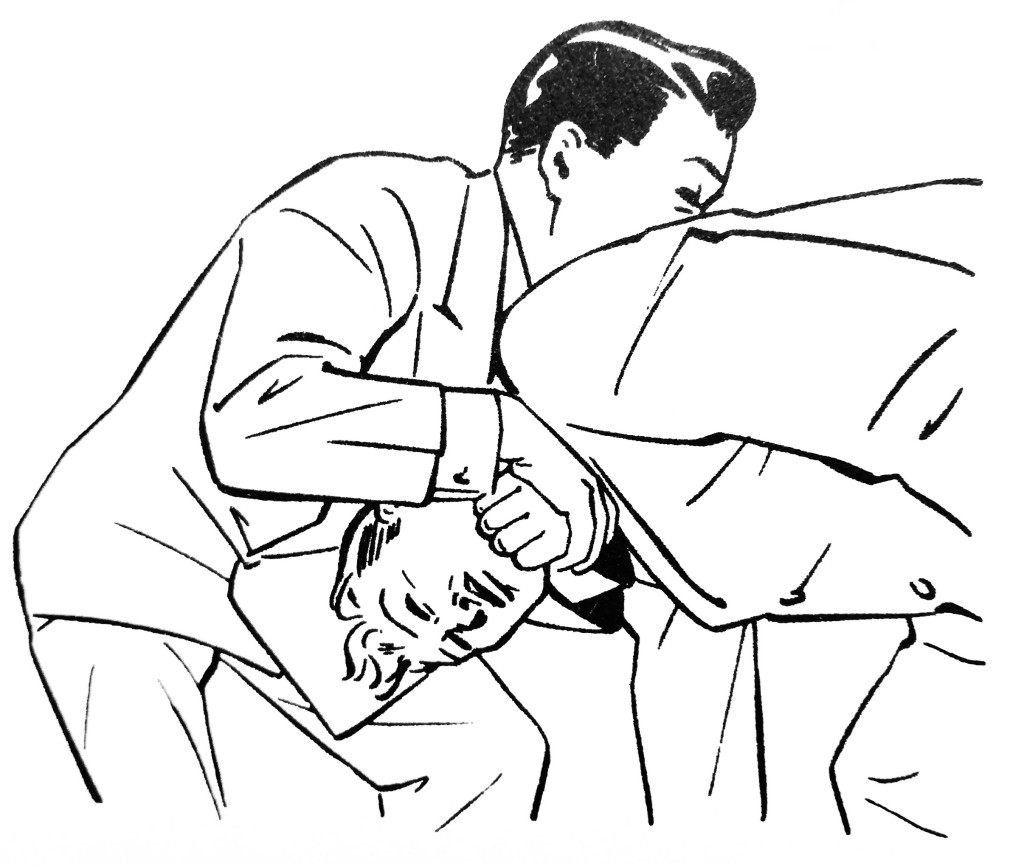
“Smash the elbow”, “tear the throat out”, “snap the arm like a twig”, “gouge the eyes with your thumbs”. I have heard these things said by martial artists during classes. But I find myself asking, how do you know? and have you ever done that? Have you ever used your thumbs to gouge out somebody’s eyeballs? And on top of that, how do you know you won’t freeze like a rabbit in the headlights? Or, how do you know if you have enough resilience (or lived experience) to be able to suffer a terrible beating before you get a chance to put in that one decisive game-changing shot?
Empirical evidence versus anecdotes.
Effectiveness, can you prove it? Can it be quantified in a scientific way? Is the data available?
Every martial artist probably has a dozen stories as to why their martial arts method is effective as a fighting system and none of these incidents ever happen inside the Dojo – how could they, it’s supposed to be a safe training environment?
I have my own ‘go-to’ anecdotes, but equally I have another set of anecdotes where martial arts practitioners have come unstuck – but nobody talks about those, least of all the people who it has happened to (understandably). [1].
Anecdotes may be fun to recount but all they do is muddy the water, they are too random to qualify as evidence. And, if you look at some of these stories in the cold light of day you often have to wonder about (a) their veracity, (b) which way the odds were stacked, (c) whether elements of luck or chance were involved; but one thing is clear, they cannot really be used as definitive proof that your system works, after all, the system is the system and You are not the system.
The anecdotes may suggest that in certain circumstances your chances of coming out on top in a violent attack might be slightly higher – but they could also suggest that you might come out worse (probably because of over-confidence, or an unrealistic evaluation of your own ability).
The problem with fantasy.
Now compare that to movie fantasies of physical confrontations. I cite two examples that come to mind.
The first being Tom Cruise as Jack Reacher, where Reacher takes a bunch of guys on after they offer him out from a bar ( link: https://www.youtube.com/watch?v=hu1MtT_S3bc
The thing is, deep down, we all want it to be like that.
And then Robert Downey Jnr as Sherlock Holmes in a bare knuckles contest (link: https://www.youtube.com/watch?v=u-z5139CW1I
This last one is about as extreme an example as is needed to make my point that fantasy is fantasy. (To paraphrase Mike Tyson, ‘Everybody has a plan until they get a punch in the mouth’.)
The Sherlock Holmes example is akin to treating violence like a chess game – if I plan and think several moves ahead then my plan will bring about the downfall of my opponent…. wrong. When it gets to the ‘trading punches’ stage you have already entered the world of chaos, thus ramping up the unpredictability exponentially.
It is potentially fatal to confuse Complex with Complicated [2] and the zone of chaos is indeed Complex. This is why those who are supremely skilful at navigating the Complex world have to do it without thought, artifice or calculation, they are like expert nautical mariners in a tossing sea, who work on instinct, they have an overarching understanding of Principle, their skills are not a bunch of cobbled together tricks that they have memorised hoping for that moment to happen.
I know that there are critics of the Principle angle in martial arts (particularly Wado), usually they fail to understand it and ask, what is this ‘Principle’ thing anyway? I am tempted to reply with something like the Louis Armstrong quote about the definition of jazz, “Man, if you have to ask what jazz is – you’ll never know”. (See my blog post on ‘Fast Burn, Slow Burn Martial Arts’ for a clue as to how it works). These same people remind me of the ‘Fox with no tail’ a moral story from Aesop].
When people talk about ‘functionality’, ‘functional combative skills’, this has to be about effectiveness, surely? But You can’t talk about that without some form of measure, if there is no measure then it’s all opinion and as such, we can take it or leave it. The person who makes the statement can only hope that we trust their opinion as an ‘expert’, but again, an expert based on what experience; their ability (as proven) to ‘snap someone’s arm like a twig, or gouge their eyes out’? I realise that there are people out in the martial arts world whose whole authority rests on this issue and it’s not my place to call them out, particularly as I also have no experience of ‘snapping arms’ to support any claims I make, but just apply a little logic to it.
Of course, I reckon that if I take my opponent’s elbow over my shoulder and exert a forceful two-handed yank downwards I might be able to ‘snap his elbow like a twig’, but I doubt he’s going to let that happen without a hell of a struggle (unless I am Sherlock Holmes of course). Meanwhile, he has barrelled into me, knocked me on my back and is sat on my chest raining punches into my face, and then his mates join in to kick me in the head for good measure – elementary my dear Watson.
Looking for evidence in history.
I feel I have to address this one. Anyone who looks for evidence in history is on to a sticky wicket. History is notoriously unreliable. We know this because current historical revisionist methods are revealing that many things we thought were true may not be so. For example; everyone knows that it is the victors who write the history.
If we take our history inside Japan and Okinawa and we listen to serious, open-minded researchers, we find that some of the things we took for granted may well not be true.
To give a few examples:
- Zen Buddhism does not have the monopoly in Japanese martial arts, certainly karate is not ‘Moving Zen’.
- The 19th century Samurai were not the apex of Japanese martial valour and skill. Set that two or three hundred years earlier and you might be about right.
- Okinawan martial arts were not the result of a suppression imposed by Japanese Samurai; it was not that simple. Okinawan people were generally peaceful and society was well-structured, it certainly was not the Dodge City that some people like to suggest, it seems that the martial arts of Okinawa reflected this, an extreme martial arts crucible it certainly wasn’t, certainly if you compare it with what was happening in Japan between 1467 and 1615. I don’t point that out to discredit the Okinawan systems, it’s just an observation and there were exceptions, e.g. Motobu Choki, who certainly had his ‘Dodge City’ moments.
As time moves forward all we are left with is the mythologies, hardly something to judge the functional abilities of teachers who are long dead, so all we have available is guesswork, assumptions and opinions; not really scientific or objective. So, anyone who wants to hang their ideas on that particular hook would be wise to keep an open mind.
How would martial arts work in a defence situation? A proposition.
To answer this, I would speculate that there are several high-level outcomes that are possible, and none of them look anything like either the movie fantasy image, or the types of techniques that are, ‘a bunch of cobbled together tricks that have been memorised hoping for that moment to happen’ [3].
- The highest level has to be that nothing happens, because nothing needs to happen. The world calms down and order rules the day; chaos is banished.
- The next highest level is probably where the aggressor just seems to fall down on his own. Here are my two nearest assumptions on this (one anecdotal and the other historical – but after all, I have to pluck my examples from somewhere). The first is a story about Otsuka Sensei dealing with a man who tried to mug him for his wallet in a train station. Otsuka just dealt with the guy in the blink of an eye and when asked what he did, he replied, “I don’t know”. The other is the historical encounter between Kito-Ryu Jujutsu master Kato Ukei and a Sumo wrestler who twice decided to test the master’s Kato’s ability with surprise attacks, and both times seemed to just stumble and hit the dirt [4].
- Anything below those two levels would probably involve one single clean technique, nothing prolonged, maybe appearing as nothing more than a muscle spasm, nothing ‘John Wick’, certainly nothing spectacular – job done.
- Then you might plunge down the evolutionary scale and have two guys smashing each other in the face to see who gives up first.
Conclusions:
The original objectives of these two blog posts were to challenge the assumptions we seem have made about the nature of self-defence (in its broadest interpretation) and to put forward some different angles, explode a few myths and to present the idea that all that glitters is not gold.
I don’t have the answers, but then it seems, neither does anyone else. But we shouldn’t just throw our hands up in the air. Keep on with the focus on defending ourselves and refining our technique and by all means teach self-defence as a supporting disciple or on dedicated courses, it is a brilliant way for martial arts instructors to engage with the community in a positive and confidence building way; however, keep it realistic and not just fearful.
For those who claim that their approach has more ‘functionality’ I would humbly suggest that that you might want to look towards the key questions; objectively, how can you prove that? Maybe what you are asking for is a leap of faith? My view is that the data is not there and that it is just lazy logic. [5]
There are people who want to claim their authority from the ‘short game’, while I would suggest that there is another game in town; the ‘long game’. Targets really need to be aspirational and ambitious, not ducking towards the lowest common denominator, i.e. the ‘fear factor’ of the anxious urbanite. Your authority is not derived from your ability to ring the metropolitan angst bell; or to yank the chain of the frustrated metrosexual male who feels he is cut adrift and fretful about his role in contemporary society and lost in a maelstrom of surging confusion.
The bottom line is; get real and dare to think differently.
As a last word, these posts are not meant to be definitive, or to cover all aspects of self-protection. I could have included comments about how the law views self-defence, or how much mental attitude is a part of self-defence, or adrenalin, fight and flight etc, without even mentioning the number of young men in the UK who die through stab injuries. But maybe another day.
Tim Shaw
[1] One event happened fairly recently where I had bumped into a martial artist from another system, an acquaintance, in a nightclub. He’d had a drink or two and proceeded to bend my ear about how ‘the trouble with most martial artists is they have never been in a real fight, never trained for it, etc.’ And, as if the God of Irony was looking down upon him; within seconds of him waving me goodbye, he crossed paths with the wrong person and ended up as a victim, laid out and bleeding. I guess he didn’t get the chance to ‘snap the arm like a twig’.
Be careful what you wish for.
[2] See my blog post on Systems. https://wadoryu.org.uk/2020/01/29/is-your-martial-art-complicated-or-complex/
[3] These methods often assume that the opponent is going to present themselves like a bag of sand and allow you to engage in an ever-complex string of funky locks, take-downs, arm-bars etc. etc. Sherlock Holmes would definitely approve.
[4] Source: ‘Famous Budoka of Japan: Mujushin Kenjutsu and Kito-ryu’. Kono, Yoshinori, Aikido Journal 111 (1997). According to Ellis Amdur in his book ‘Hidden in Plain Sight’ this is pure Principle and Movement in practice (my paraphrase).
[5] Similar to the way people talk out about ‘life after death’, i.e. how do you know? Conveniently, nobody has ever come back to tell us. Ergo; you never have to validate your claims.
Image credit: Kiyose Nakae ‘Jiu Jitsu Complete’ 1958.
You’d better hope you never have to use it – Part 1.
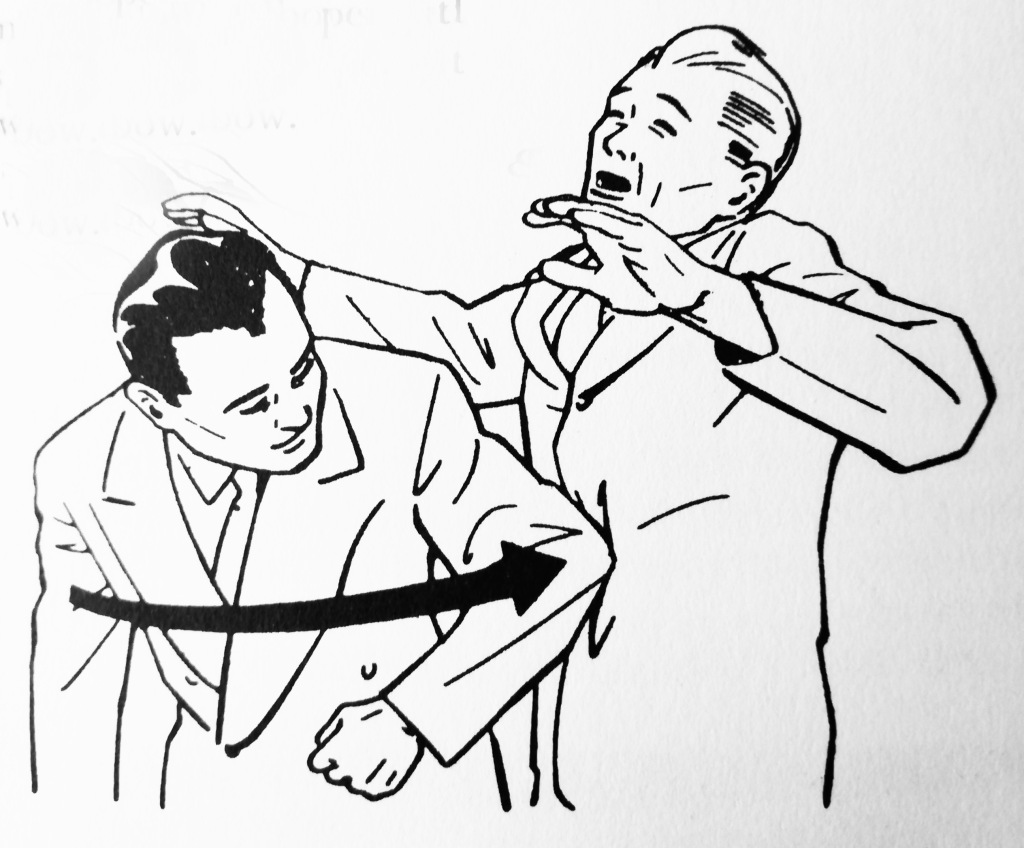
An alternative view on self-defence and ‘effectiveness’. I have been thinking about this for a long time now. Every time I see this subject brought up on martial arts forums, I find myself shaking my head; where is the objective clarity? Where is the cold scalpel of logic which is needed to cut through the mythology, pointless tautology and hyperbole? In addition, why doesn’t someone call out those who are too quick to erect a whole forest of straw men; those who set up false equivalents and apply simple answers to complex questions?
Self-defence, what does it even mean?
Taken at face value it’s supposed to be our raison d’être, but we know that Japanese Budo has worked hard to raise itself above primitive pugilism, and the inclusion of firearms into the mix has brought in an element of semi-redundancy, particularly in certain societies around the world. But we still have the hope that we can take the ethical and moral high ground through the philosophies of Budo, which, in itself is not above hyperbole (try, ‘we fight so that we don’t have to fight’, I know what it means, but I suspect I am in a minority).
Real Violence.
We tell ourselves that we are training so that we can protect ourselves against physical attacks by unknown (or even known) aggressors who clearly mean us harm. Realistically, most people have fortunately never really experienced that (here in the UK, despite what the papers want to tell us, we live in quite a peaceful society [1]). Hence, what people do is carry around an image in their heads of what that violence may look like; but, based on what exactly? Mostly, I suspect it’s a mish-mash of choreographed movie violence and random CCTV footage on YouTube; it is highly unlikely it will be based on real experience.
What does real violence look like?
I don’t like doing this but unfortunately, I have to base my proposition on a degree of personal experience, mostly (but not exclusively) from my younger days.
A list of what real violence tends to be:
Random, irrational, devoid of humanity (and often bereft of conscience), chaotic, usually spontaneous, ugly, seldom prolonged (most likely, over in just a couple of seconds), all too often cowardly with any elements of restraint removed by the effects of alcohol or drugs. Not in the least bit glamorous and hardly anybody comes out of it as a hero, and certainly nobody calculates the consequences of their actions.
It is this last one I want to look at in a little more detail. (Here’s where ‘You’d better hope you never have to use it’ comes in). I’ll start with; if you make a decision to punch, kick or elbow someone in the head, you’d better be prepared to live with the consequences.
One thing that tales from news media can tell us quite graphically and accurately, is the results and the aftermath of a physical assault; whether it is initiated by the aggressor or the defender, it doesn’t matter, James Bond or Jason Bourne never have to give a thought to the ‘bad guys’ they ‘take out’ in a fist fight, and neither are we, as an audience, expected to; the plot just rolls on. But that is the fantasy.
Read this account of a 15-year-old boy attacking a man with the so-called ‘superman punch’ resulting in the man’s death https://www.theguardian.com/uk-news/2017/jul/25/polish-man-arkadiusz-jozwik-killed-superman-punch-court-hears
Lives ruined, families traumatised and all for what?
Someone once pointed out to me that all those techniques that are most effective in so-called self-defence situations can result in life-changing injuries and will most likely cause you to end up in court.
Please don’t misunderstand me, I am not advocating passivity or a total abrogation of responsibility, just a balanced grown-up attitude as to whether one is prepared to go for the so-called ‘nuclear option’ or not [2].
Practice and Theory.
As regards teaching self-defence classes; there is a wonderful contradiction worth considering. Nobody in the history of martial arts has EVER argued that theory has value over practice, but maybe in terms of practical, realistic self defence it does?
It is possible that if measured on results alone the value of theoretical knowledge of personal protection may outweigh that of learning hands-on physical skills.
When I designed my own self-defence courses (outside of the Dojo environment) I always factored in a theoretical aspect; a sit down and talk and explain. This would cover such things as, threat recognition, de-escalation of aggression, awareness, specific grey areas, psychological indicators and basically heading things off before they became a problem. All of these things I have NEVER taught in the Dojo, mostly because we just don’t have the time, and I suspect I am not alone in making that admission; but how ironic, here we are as martial arts specialists and we don’t have the time to put in these very important elements. [3].
The cynical exploitation of the fear factor (Self-Defence as a business opportunity).
I get it, everybody has to make a living. But maybe we should draw the line at people who feed off the fear of others. In this we find the worst excesses of the self-defence ‘industry’. Please don’t misunderstand me, most people who teach self-defence are well-intentioned and probably do a really good job, but a red flag for me is when they press the ‘fear’ button, because they deliberately feed off the darkest nightmares of the anxious urbanites. For the worried town dwellers, the fear is real, but it may well be a product of a wider malaise, an existential crisis marked by alienation and the decline of community, as well as the cult of the ‘self’; (‘me’ rather than ‘us’).
I am convinced that there is both a male version and a female version of this fear. The female version is of course very real and is wrapped up in the complex world of the politics of the sexes and goes back thousands of years. I wouldn’t even think of beginning to understand that, it’s a real tiptoe through the minefield and seems to be getting worse rather than better.
The male version is easier to understand.
There is a profound identity crisis going on with young males; they just don’t know who they are and this often affects their views on how to respond to aggression or threats from other males [4]. Tradition and history say one thing; a view that is supported by biology; but contemporary society says that there is no need or place for antelope hunters and skinners or people wielding big heavy swords like Conan the Barbarian. I am convinced that a secret desire of most males is for the advent of the zombie apocalypse, just to give them an excuse to use that baseball bat kept near the door ‘just in case’; an adolescent male fantasy. [4]
But, to return to the idea of the ‘cynical exploitation of the fear factor’. I am convinced that some of the people who have found a niche in trading off urban anxiety have been (in part) influenced by Maslow’s Hierarchy of Needs (you might find it mentioned in books on modern marketing). If you can convince people that their fears are justified and that their whole existence is under threat in a decaying society, and your solutions will act as an antidote, they will come flocking to your door and you’ll be laughing all the way to the bank.
Am I arguing against the teaching of self-defence?
The answer to the above question is a resounding ‘No’.
As far as I am concerned, when I have taught self-defence courses it made me feel that I was actually giving something back to society, and feedback received said that some of the knowledge gained actually helped people out of some sticky situations, so another feelgood factor. It is stripped back martial arts, a bit like stripped back First Aid courses, it might give someone the confidence that they need in an emergency, it might save somebody’s life. Every little helps.
The fuller argument will be fleshed out in part 2.
Tim Shaw
[1] It would be much more objective if people would at least consult the statistics.
- Most people are murdered by someone they already know.
- Young men are in greater danger from random stranger attacks than young women.
- Terrorist attacks are so rare that it is inevitable that they hit the headlines and achieve their warped objectives of setting up ripples of fear through the population. As an example; In 2001, road crash deaths in the US were equal to those from a September 11 attack every 26 days.
[2] ‘The Nuclear Option’; a willingness to take things to the most extreme end of the spectrum, even if it means your own destruction. I.E. no serious world leader would ever admit to be willing to press the nuclear button; it’s just admitting to a form of suicide that embroils all the people you are responsible for into your own folly.
[3] Isn’t it odd to think that there are people in the martial arts community who consider kata a waste of time and compare it to the comical practice of ‘land swimming’, as opposed to swimming in water. Yet here we have a ‘land swimming’ example which maybe does work. Or perhaps that in itself is a false equivalent, as this isn’t really ‘land swimming’, it’s more akin to getting advice from a lifeguard about rip tides and safe swimming zones – which will possibly save your life and keep you from drowning?
[4] There is a section in a book I would recommend, ‘The Little Black Book of Violence’ by Kane and Wilder, which asks the question, ‘is it worth dying over a mobile phone?’. The answer is clearly ‘no’, but in the heat of the moment… Also, I do remember, years ago, an ad in martial arts magazines, which featured a photograph of some kind of glamour model with the headline, ‘Could you protect your girlfriend?’.
Image credit: Kiyose Nakae ‘Jiu Jitsu Complete’ 1958.
Please join us for the Winter Course 2022
Shikukai Winter Course 2022 will be the first major face to face course that Shikukai has held post restrictions. Our vision is to create a focused, smaller, boutique course that connects us to our Wado. It will be different to the usual large courses we’ve held in the past, but with Sensei’s guidance it’s sure to be a success.
It is important that we manage the numbers carefully this year. Please contact us to let us know you are coming (or thinking about it) etc. Give us your Mobile number and we will add you to a WhatsApp Group just for this event.
Saturday 12th Feb 11:00 Registration / warm up
11:30am – 3:00pm (3:00pm-3:30pm) personal practice
Sugasawa Sensei & Shikukai Senior Instructors
Danbury Sports Centre, Danbury CM3 4NQ
Sunday 13th February 11:00 Registration / warm up
11:30am – 3:00pm
Sugasawa Sensei & Shikukai Senior Instructors
Danbury Sports Centre, Danbury CM3 4NQ
Sunday 13th will also include:
- Kyu Gradings 3:00pm – One month notice required please
- Dan Grading 4:00pm – Formal handwritten letter to Sensei by 11th January 2022
Free parking – Danbury Sports Centre has an upper and lower car park—————————————————————————————–
Course, Grading and registration fees 2022
- Kyu Grading Fee £14.00 – One month notice required please
- Dan Grading Fee £25.00 – Formal handwritten letter to Sensei by 11th January 2022
Attendance to the course must be booked for and paid in advance
Paypal https://www.paypal.me/StevenThain
2 Day Rate
- Adult member – £50
- Adult Non-member – £60
- Junior (11-17yrs) member – £30
- Junior (11-17yrs) Non- member – £40
1 Day Rate
- Adult member £30
- Adult Non-member £35
- Junior (11-17yrs) member £15
- Junior (11-17yrs) Non- member £20
——————————————————————————————-
Additional Dojo time
- Thursday 10th February. Shouwa Jyuku regular dojo session
7:30pm -9:00pm
Woodham Walter Primary school, The Street, Woodham Walter CM9 6RF
Open to all. £10
- TBC – Friday 11th February. Shouwa Jyuku Instructor led
6:00pm – 8:00pm
This session is TBC and very much subject to demand.
Covid. We will be exercising an upper limit of attendance. We ask that if you aren’t double vaccinated that you carry out a covid test before arrival to the course and do not attend if you have any symptoms. https://www.nhs.uk/conditions/coronavirus-covid-19/symptoms/.
Cancellation due to Covid. If you test positive, we will refund any payments you’ve made to the course.
Social. We won’t be organising the usual large group meal this year. We suggest people organise themselves for meals in the evenings. We will arrange a meet at a couple of central pubs at the time.
Accommodation. There are many options for accommodation in Chelmsford. Sensei will be staying at the Premier Inn Chelmsford City Hotel. CM1 1NY
Money. We intend to be cash free this year. You will need to pre-book your place onto the course with payment made in full one month prior to the course, this will help us in planning to give the most benefit to your training. Paypal https://www.paypal.me/StevenThain
WhatsApp. Please email your attendance and payment along with your mobile phone number, we will add you to a group for the event that will give important information out.
International students. International students please email us for your attendance. Stansted Airport is the closest airport to us. There are regular affordable buses that run to Chelmsford regularly. If you are having difficulty with this, please contact Steve, Tim or Natalie.
Steve. thethains41@gmail.com / 07989 257044
Tim. timshaw499@hotmail.com / 07585 707718
Natalie. natalie.harvey9@gmail.com / 07972 790246
Facebook@chelmsfordshikukai
www.wadoryu.org.uk
www.shikukai.com
Martial Arts, fast burn or slow burn? – A theory.
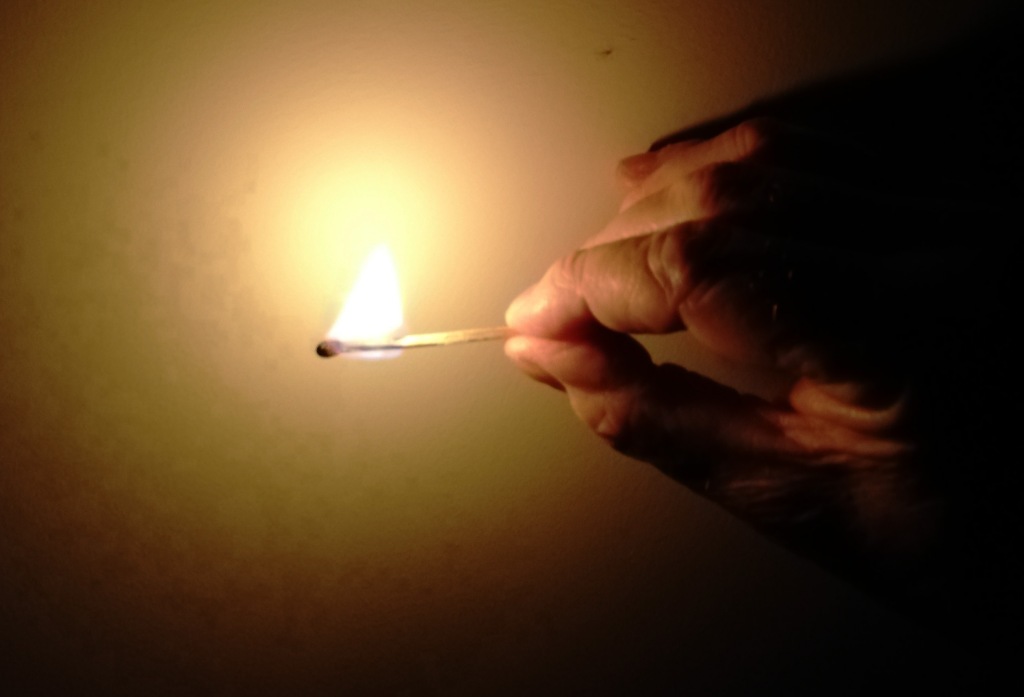
This is something I have been thinking over for some considerable time. I believe that almost all martial arts training systems exist on a spectrum from ‘fast burn’ to ‘slow burn’.
Bear in mind that when boiled down to their absolute basic reasons for existence, all martial arts are about solving the same problem – protection/reaction against human physical aggression.
Fast Burn.
At its extreme end on the spectrum ‘fast burn’ comes out of the need for rapid effectiveness over a very short period of training time.
A good example might be the unarmed combat training at a military academy [1].
There are many advantages to the ‘fast burn’ approach. A slimmed down curriculum gives a more condensed focus on a few key techniques.
As an example of this; I once read an account of a Japanese Wado teacher who had been brought into a wartime military academy to teach karate to elite troops. Very early on he realised that it was impossible to train the troops like he’d been trained and was used to teaching, mainly because he had so little time with them before they were deployed to the battlefield or be dropped behind enemy lines. So, he trimmed his teaching down to just a handful of techniques and worked them really hard to become exceptionally good at those few things that may help them to survive a hand-to-hand encounter.
Another positive aspect of ‘fast burn’ relates to an individual’s physical peak. If you accept the idea that human physicality, (athleticism) in its rawest form rises steadily towards an apex, and then, just as steadily starts to decline, then, if the ‘fast burn’ training curriculum meshes with that rise and enhances the potential of the trainee, that has to be a good thing.
In ‘fast burn’ training, specialism can become a strength. This specialist skill-set might be in a particular zone, like ground fighting and grappling, or systems that specialise in kicking skills.
The down side.
However, over-specialisation can severely limit your ability to get yourself out of a tight spot, particularly where you have to be flexible in your options. Add to that the possibility that displaying your specialism may also reveal your weaknesses to a canny opponent.
It has to be said that a limited number of techniques whose training objectives are just based upon ‘harder’, ‘faster’, ‘stronger’ may suffer from the boredom factor, but, by definition, as ‘fast burn’ systems they may well top-out before boredom kicks in and just quit training altogether. They may well be the physical example of what the motor industry would call ‘built-in obsolescence’. [2]
Not that a martial art should be judged by its level of variety.
As a footnote; it is a known fact that in some traditional Japanese Budo systems students were charged by the number of techniques presented to them, so it was in the master’s interest to pile on a growing catalogue of techniques. I am not saying this was standard practice, but it certainly existed.
Slow Burn.
Turning my attention now to ‘slow burn’.
By definition ‘slow burn’ martial arts systems develop their efficiency over a very long time, or perhaps time as a measure is misleading? Maybe it would be better to describe the work needed to become a master of a ‘slow burn’ system as prolonged and arduous, perhaps beyond the bounds of most individuals.
For me ‘slow burn’ is defined by its complexity and sophistication and is associated with systems that have demanding levels of study, probably involving insane amounts of gruelling and boring repetitions that would test the ability (or willingness) of the average person to endure.
The positive side.
The up-side of this methodology is difficult to map as so few individuals ever get to the level of mastery and all we are left with are martial arts myths, but it would be foolish to dismiss it on these grounds alone. Most myths contain a kernel of truth and if a fraction of the myths told can be effectively proved or verified then really, there is no smoke without fire.
Looked at through the lens of modern sporting achievement, I think we can all appreciate that with the very best elite sportspeople uncanny abilities can be observed, and we know that despite the fact that many of them are blessed with unique genetic and physical disposition, an insane amount of work goes on to achieve these lofty heights (I am thinking of examples in tennis or golf, but really it applies to any top-level human endeavour – think of musicians!).
‘Slow burn’ martial arts systems may not comply with modern sports science used by elite athletes, but they were getting results any way, probably from a form of proto-sports science developed through generations of trial and error.
The ‘slow burn’ systems seem to be characterised by a reprogramming of the body in ways that require great subtlety, so subtle in fact that the practitioner struggles to comprehend the working of it even within their own bodies; it works by revelation and is holistic in nature. Mind and cognition are major components. The determination and grit that fuel the ‘fast burn’ systems are not enough to make ‘slow burn’ work, something more is needed; a reframing and reconfiguring of what we think we are doing.
Weaknesses.
The weaknesses of the ‘slow burn’ systems are pretty obvious.
Who has the time or patience to involve themselves in this level of prolonged study? It certainly doesn’t easily mesh with the demands of modern living; an awful lot of sacrifices would need to be made. It is no exaggeration to say that you would have to live your life as a kind of martial arts monk, casting aside comforts and ambitions outside of martial arts training. I often wonder how it was achieved in the historical past; I guess that beyond just living and surviving they had less distractions on their time than we do now. [3].
We know something of these systems because we can observe how, over time, the surviving examples had a tendency to morph into something altogether different; often taking on a new and reformed purpose, which of course improved their survival rate.
The examples I am thinking of have reinvented themselves as either health preserving exercise or semi-spiritual arbiters of love peace and harmony; all positive objectives in themselves and certainly not something we need less of in these current times.
I am going to duck that particular argument; it is not a rabbit hole I am keen to go down in this current discussion.
‘Slow burn’ dances with the devil when it too eagerly embraces its own mythologies; but in the absence of people who can really ‘do it’ what else have they got left? What always intrigues me is that the luminaries of the current crop of ‘slow burn’ masters are so reluctant to have their skills empirically tested. [4]
It is tempting, but it would be wrong to play these two extremes of the spectrum off against each other; I have deliberately focussed on the polar opposites, but it’s not ‘one or the other’, there are martial arts systems that are scattered along the continuum between these two extremes, and then there are others that have become lost in the weeds and suffer from a kind of identity crisis; aspiring to ‘slow burn’ mythologies while employing solely ‘fast burn’ methodologies. Can a man truly serve two masters? Or is the wisest thing to do to step back and ask some really searching questions? What is this really all about?
And Wado?
And, as this is a Wado blog, where does Wado fit in all this? I’m not so sure that the image of the line or spectrum between the two polar opposite helps us. I suppose it comes down to the vision and understanding of those who teach it – certainly there is a salutary warning illustrated by the weaknesses of both ‘Fast and Slow burn’.
Perhaps the ‘Fast Burn Slow Burn’ theory can be looked at through another lens, particularly as it relates to Wado?
For example, there is the Omote/Ura viewpoint.
To explain:
In some older forms of Japanese Budo/Bujutsu you have the ‘Omote’ aspect – ‘Omote’ suggests ‘exterior’, think of it like your shopfront. But there is also an ‘Ura’ dimension, an insider knowledge, the reverse of the shopfront, more like, ‘under the counter’, ‘what’s kept in the back room’, not for the eyes of the hoi polloi. The Ura is the refined aspect of the system.
I have heard this spoken about by certain Japanese Wado Sensei, and I have seen specific aspects of what are referred to as ‘Ura waza’, but these seem to range from the more simple hidden implications of techniques, to the seemingly rarefied, esoteric dimension; fogged by oblique references and maddening vagaries, to me they seem like pebbles dropped in a pond, hints rather than concrete actualities.
This of course begs the question; what is the real story of the current iterations of Wado as we know it? I will leave that for you to make your mind up about.
Maybe Wado is about layers?
Problems.
If we return to the original statement, “…all martial arts are about solving the same problem – protection/reaction against human physical aggression”. Ideally the success of the system should be judged by that particular measure, but clearly there is a problem with this, in that empirical data is virtually impossible to find. So how do most people create their own way of judging what is successful and efficient and what isn’t? All we are left with is opinion, which tends to be qualitative rather than quantitative. [5].
Outliers.
Let me throw this one in and risk sabotaging my own theory.
To further complicate things; a good friend of mine is a practitioner of a form of traditional Japanese Budo that that arguably and unashamedly has only one single technique in its syllabus! Yes, only one! My friend is now over 70 years old and has been practising his particular art for most of his adult life. I doubt that for one minute he would consider what he does as ‘fast burn’. I will leave you to work out what his system is, but it is no minor activity, (it is reputed to have over 500,000 practitioners worldwide!)
Tim Shaw
[1] I recently read a comment from an ex-military person who said that relying on unarmed combat in a military situation was ‘an indication that you’d f***ed up’. He said that military personnel relied on their weaponry, if you lost that you were extremely compromised. Also, he added that military personnel worked as a unit and that it is unlikely that a solo unarmed combat scenario would happen. Of course, we know that there are outliers and odd exceptions, but, as a rule… well, it’s not my opinion, it’s his.
After seeing the recent demonstration by North Korean ‘special forces’ in front of their ‘glorious leader’, basically the usual rubbish that you see from the ‘Essential Fakir Handbook’, you have to wonder who these people are kidding? https://www.youtube.com/watch?v=Pv3L2knNodU
It’s just an opinion; not necessarily my opinion; other opinions are available.
[2] ‘Built-in Obsolescence’ Collins Dictionary definition = “the policy of deliberately limiting the life of a product in order to encourage the purchaser to replace it”.
[3] The sons and inheritors of the Tai Chi tradition of Yang Lu-ch’an (1799 – 1872) initially struggled to live up to their father’s punishing and prolonged training regime; Yang Pan-hou (1837 – 1892) tried to run away from home and his brother Yang Chien-hou (1839 – 1917) attempted suicide!
‘Tai-chi Touchstones – Yang Family Secret Transmissions’ Wile D. 1983.
[4] There was a ‘Fight Science’ documentary a few years back which looked at the claims of ‘slow burn’ martial systems and it didn’t come out well. The ‘master’ of the system was actually in very weak physical shape (largely due to smoking) although he had some well-organised physical moves and coordinated his operating system well. The truth was, he was a not the best of advocates, and for it to be truly scientific it needed many more contributors.
[5] I have another blog post planned on this theme. I fear it might ruffle a few feathers though.
In Search of the Perfect Gi.
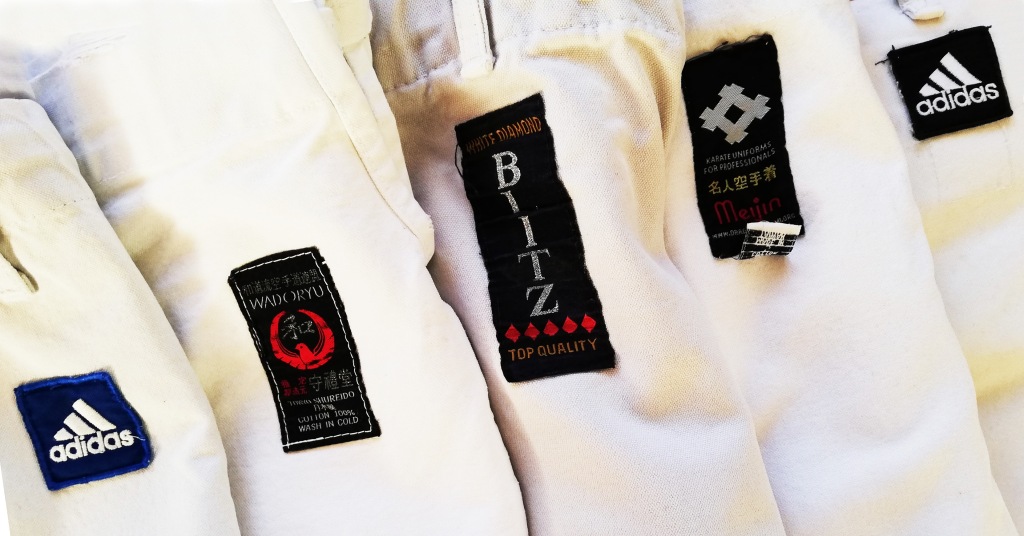
This has been worrying me for a while, and I am sure I am not on my own. It has become a personal crusade for me, and is currently becoming more and more urgent, as I know my favoured Gis are beyond their prime and I have zero chance of replacing them (the preferred model no longer exists).
But this in itself always presents me with a moral dilemma – I mean… does it really matter?
The white karate Keikogi (to give it it’s fuller name) is supposed to be a purely a no-frills, practical item of clothing; it’s not a fashion statement. If it is any kind of statement, it is one that is anti-ego and, like any uniform, a social leveller, as if to say, ‘hey, we’re all the same here!’, ‘check your egos at the door!’. It is also a declaration of community and belonging, which is clearly a good thing.
I know, it’s all about comfort, or durability, or any other excuse we give ourselves for paying out ever larger amounts of cash.
But we do have choices, even if we stick with the plainest white karate Gi.
For example, we have the weight of the fabric and we have, what is often referred to as the ‘cut’, ‘European cut’, Japanese cut’, I often wonder about that; are the Japanese so different in physique that they need their own ‘cut’?
With fabric weight, the kata competitors would go for the heavyweight cotton; the heavier the better; it gives the solid crack in the sleeves with razor-sharp creases and is as rigid as cardboard. Contrast that with the Kumite competitors, who seemed to go for the floppier the better, stopping short of being diaphanous, ‘freedom of movement’ was given as the excuse. I get this, as I have found that on a heavy sweaty kick-based session the Gi bottoms can bind and restrict movement.
How did this all come about? It’s probably more complicated than people think.
A little history.
Let me start with the colour thing.
Historically the white Keikogi probably came out of pure convenience. When cotton uniforms for martial arts training were first introduced in Japan there was no advantage in going to the trouble of dyeing them; they were just in their natural state. You could attach all kinds of symbolism about white being for purity of spirit etc. but that would be stretching a point.
The cut of the jacket is supposed to have originated from the heavy jacket worn by Japanese firemen called Hanten.
The longer sleeves and trouser legs developed out of necessity in the grappling world; as exposed elbows and knees were prone to mat burns. Of course, karateka were behind the curve on the design of the Keikogi. In the early 20th century the frontrunners were the Kodokan Judo people, who, incidentally, also implemented the ‘black belt’. (The idea of coloured belts for kyu grades is said to have originated in Europe).
The non-white Gi.
I remember from my early training days the idea of a black Gi was a bit of a joke, but it didn’t stop some people from the wilder fringes of ‘karotty’ from adopting them; but now, in some circles, black Gis became an unquestionable reality. Recently I listened to a martial arts podcast where a female instructor and founder of her own school justified the decision for adopting a black Gi on the grounds of limiting potential embarrassment for female Dojo members relating to their periods. I can see the sense in that. My guess is that 50% of the adult population would have never have thought of that.
Meanwhile, in Olympic Judo, their cutting-edge approach to all things sartorial seems to me to have gone a step too far.
In 1986 it was proposed the adoption of a blue Gi and a white Gi for opposing competitors, and so it has been ever since. Excuse me for being cynical but am I alone in thinking that maybe this decision was made by people with vested interests in the manufacture and sales of Judo Gis? It was done on the shaky grounds that it was to facilitate the distinction between two opponents for the sake of the judges, referees and the audience…. Really?! The poor Judoka now have to double their wardrobe if they are serious about competing. This same stunt was pulled when karate competitors had to have blue and red fighting mitts – a cheaper outlay, but I wondered whether they had considered blue and red Gis to match?
Elvis – when things got really silly.
For me, the extreme point of where reality snapped was the Gi that Elvis Presley chose to wear in 1974; it was ridiculously over-the-top! Whoever awarded Elvis a 7th Dan should have really had a quiet word in his ear about the decision to wear THAT Gi. If you are a senior grade and are considering buying (or redesigning) your Gi or belt, you need to have that picture at the back of your mind – print it off and stick it on your wardrobe now; just to restrain you from your wildest excesses! [1]
Returning to my problems.
My current favoured Gis are now slightly past their sell-by date; these are/were my Adidas Gis, but annoyingly Adidas have decided to redesign these already rather excellent Gis. The latest models are not hugely different, but they have added one feature that for me steps over a red line and as such makes them irredeemable – they have decided to have their own logo embroidered onto the jacket!
I have a real objection to the assumption by Adidas that I am content to walk around like a human billboard! If a company or brand wants me to advertise or endorse their product, they should pay me! Or at least reduce the price to reward me for the services I am doing for them!
The embroidered brand logo takes us a step further towards the complete anarchy we used to see within modern Jujutsu groups where they seem to have more badges than you’d see in the average scout troop, and twice the size!
Dear Adidas, less is more. You had it right twenty years ago!
I heard about an interesting development; an American company jumped on the ethically sourced and locally made bandwagon for Brazilian Jujutsu Gis. More expensive, but definitely made in America (to support American businesses); I like this model. If the product is intelligently designed and takes into consideration the traditional karateka then I would buy into it.
Drawstring versus elasticated waistband?
For me it’s like the difference between lace-up shoes or ones with Velcro fastenings. Personally, I don’t find it a hardship to tie a drawstring, and I have seldom had the problem of the drawstring disappearing (easily solved with a large safety pin anyway). If you do go elasticated at least it’s only something your closest friends will know about, or the people next to you in the changing rooms.
Still, if you compare the price of a new Keikogi to the price of kit and equipment people have to shell out for in other sports (golf or skiing) it still makes karate training a low-cost activity.
My Influencer pitch.
At this point I would like to issue a challenge to manufacturers of karate Gi. If you think your product is superior and meets the previously mentioned criteria (white, hard wearing, no unnecessary extras, particularly embroidered brand logos), then I will give you an honest review of your product in these blog posts. But there is a catch; you have to send me a free Gi (no import duty or other costs).
Tim Shaw
[1] Image of Elvis Presley in THAT Gi can be found at: https://www.elvis.com.au/presley/elvis-presley-and-karate.shtml
Shizentai.
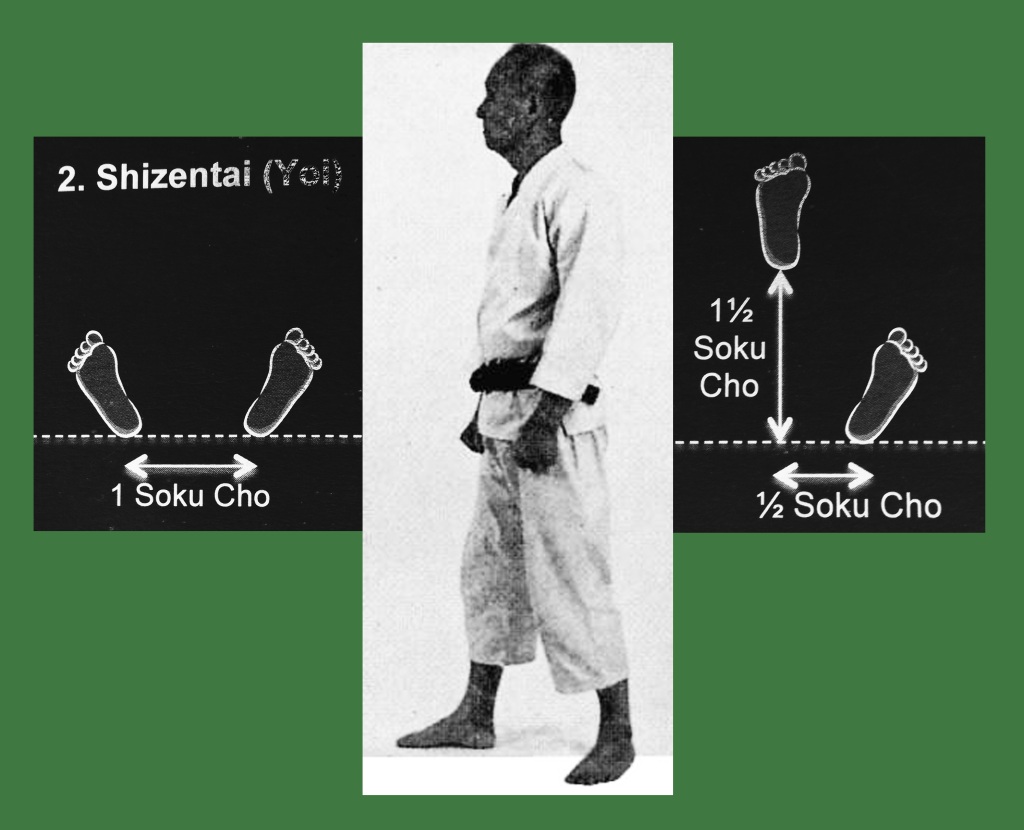
Look through most Wado syllabus books and a few text books and you are bound to see a list of stances used in Wado karate; usually with a helpful diagram showing the foot positions.
One of the most basic positions is Shizentai; a seemingly benign ‘ready’ position with the feet apart and hands hanging naturally, but in fists. It is referred to as ‘natural stance’, mostly out of convenience; but as most of us are aware, the ‘tai’ part, usually indicated ‘body’, so ‘natural body’ would be a more accurate fit. [1].
In this particular post I want to explore Shizentai beyond the idea of it being a mere foot position, or something that signifies ‘ready’ (‘yoi’). There are more dimensions to this than meets the eye.
Let me split this into two factors:
- Firstly, the very practical, physical/martial manifestation and operational aspects.
- Secondly, the philosophical dimension. Shizentai as an aspiration, or a state of Mind.
Practicalities.
The physical manifestation of Shizentai as a stance, posture or attitude seems to suggest a kind of neutrality; this is misleading, because neutrality implies inertia, or being fixed in a kind of no-man’s land. The posture may seem to indicate that the person is switched off, or, at worst, an embodiment of indecisiveness.
No, instead, I would suggest that this ‘neutrality’ is the void out of which all possibilities spring. It is the conduit for all potential action.
Isn’t it interesting that in Wado any obvious tensing to set up Shizentai/Yoi is frowned upon; whereas other styles seem to insist upon a form of clenching and deliberate and very visual energising, particularly of the arms? As Wado observers, if we ever see that happening our inevitable knee-jerk is to say, ‘this is not Wado’, or at least that is my instinct, others may disagree.
Similarly, in the Wado Shizentai; the face gives nothing away, the breathing is calm and natural, nothing is forced.
In addition, I would say that in striking a pose, an attitude, a posture, you are transmitting information to your opponent. But there is a flip-side to this – the attitude or posture you take can also deny the opponent valuable information. You can unsettle your opponent and mentally destabilise him (kuzushi at the mental level, before any physical contact has happened). [2]
Shizentai as a Natural State – the philosophical dimension.
I mentioned above that Shizentai, the natural body goes beyond the corporeal and becomes a high-level aspiration; something we practice and aim to achieve, even though our accumulated habits are always there to trip us up.
In the West we seem to be very hung up on the duality of Mind and Body; but Japanese thinking is much more flexible and often sees the Mind/Body as a single entity, which helps to support the idea that Shizentai is a full-on holistic state, not something segmented and shoved into categories for convenience.
This helps us to understand Shizentai as a ‘Natural State’ rather than just a ‘Natural Body(stance)’.
But what is this naturalness that we should be reaching for?
Sometimes, to pin a term down, it is useful to examine what it is not, what its opposite is. The opposite of this natural state at a human level is something that is ‘artificial’, ‘forced’, ‘affected’, or ‘disingenuous’. To be in a pure Natural State means to be true to your nature; this doesn’t mean just ‘being you’, because, in some ways we are made up of all our accumulated experiences and the consequences of our past actions, both good and bad. Instead, this is another aspect of self-perfection, a stripping away of the unnecessary add-ons and returning to your true, original nature; the type of aspiration that would chime with the objectives of the Taoists, Buddhists and Neo-Confucians.
Although at this point and to give a balanced picture I think it only fair to say that Natural Action also includes the option for inaction. Sometimes the most appropriate and natural thing is to do nothing. [3]
Naturalness as it appears in other systems.
In the early days of the formation of Judo the Japanese pioneers were really keen to hold on to their philosophical principles, which clearly originated in their antecedent systems, the Koryu. Shizentai was a key part of their practical and ethical base. [4] In Judo, at a practical level, Shizentai was the axial position from which all postures, opportunities and techniques emanated. Naturalness was a prerequisite of a kind of formless flow, a poetic and pure spontaneity that was essential for Judo at its highest level.
Within Wado?
When gathering my thought for this post I was reminded of the words of a particular Japanese Wado Sensei. It must have been about 1977 when he told us that at a grading or competition he could tell the quality and skill level of the student by the way they walked on to the performance area, before they even made a move. Now, I don’t think he was talking about the exaggerated formalised striding out you see with modern kata competitors, which again, is the complete opposite of ‘natural’ and is obviously something borrowed from gymnastics. I think what he was referring to was the micro-clues that are the product of a natural and unforced confidence and composure. For him the student’s ability just shone through, even before a punch was thrown or an active stance was taken.
This had me reflecting on the performances of the first and second grandmasters of Wado, particularly in paired kata. On film, what is noticeable is their apparent casualness when facing an opponent. Although both were filmed in their senior years, they each displayed a natural and calm composure with no need for drama. This is particularly noticeable in Tanto Dori (knife defence), where, by necessity, and, as if to emphasise the point, the hands are dropped, which for me belies the very essence of Shizentai. There is no need to turn the volume up to eleven, no stamping of the feet or huffing and puffing; certainly, it is not a crowd pleaser… it just is, as it is.
As a final thought, I would say to those who think that Shizentai has no guard. At the highest level, there is no guard, because everything is ‘guard’.
Tim Shaw
[1] The stance is sometimes called, ‘hachijidachi’, or ‘figure eight stance’, because the shape of the feet position suggests the Japanese character for the number eight, 八.
[2] Japanese swordsmanship has this woven into the practice. At its simplest form the posture can set up a kill zone, which may of may not entice the opponent into it – the problem is his, if he is forced to engage. Or even the posture can hide vital pieces of information, like the length or nature of the weapon he is about to face, making it incredibly difficult to take the correct distance; which may have potentially fatal consequences.
[3] The Chinese philosopher Mencius (372 BCE – 289 BCE) told this story, “Among the people of the state of Song there was one who, concerned lest his grain not grow, pulled on it. Wearily, he returned home, and said to his family, ‘Today I am worn out. I helped the grain to grow.’ His son rushed out and looked at it. The grain was withered”. In the farmer’s enthusiasm to enhance the growth of his crops he went beyond the bounds of Nature. Clearly his best course of action was to do nothing.
[4] See the writings of Koizumi Gunji, particularly, ‘My study of Judo: The principles and the technical fundamentals’ (1960).
Karate in the early 70’s, sample No. 2.
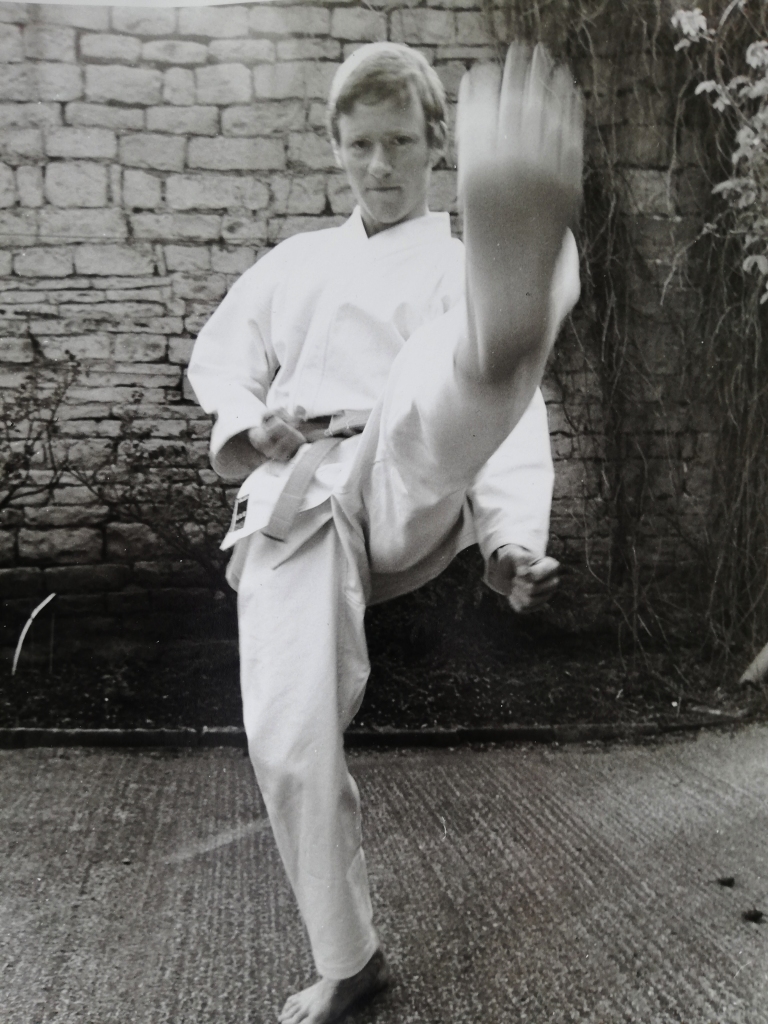
I wasn’t going to do this, but with over 58000 words still to go, why not offer another teaser?
Part 2.
From my house the walk to Mansfield to the karate club was slightly under two miles, and so, initially, twice a week, I did this four-mile round trip on foot, either side of two hours sweaty training.
Thinking back on it, it always surprises me that I never considered taking the bus, even in the foulest of weather. But buses meant money and the karate class fee was fifty pence! It doesn’t sound like much but bear in mind that the average price for a pint of beer in 1974 (always a good fiscal measure) was 14 pence!
This fifty pence fee became a standing joke with my dad. He never understood what I was up to, I think he found it funny. He was of a generation who had no reference to what karate was; he just let me get on with it and watched with casual amusement when I practiced my ‘moves’ on the back yard. The only time he commented was when I came home from training once with a black eye – “How much did you pay for that?”, “Fifty pence” I replied, “Give me fifty pence and I’ll black your eye”, he said. He wasn’t a violent man; he just had a mischievous sense of humour. He then walked away chuckling to himself. Parenting in my house was very laissez faire.
Mansfield karate club was one of the earliest established full-time Dojos in the UK (founded in 1969). It had originally been an old paint warehouse. An unassuming brick-built structure, it stood on West Hill Drive about fifty yards downhill from Mansfield General Hospital. The accident and emergency department was part of the hospital and I remember a few trips there to get myself patched up, or in one case where one of my kicks had split the eyebrow of one of my sparring partners and as such, it was my responsibility to sit with him in the A&E department until he was sewn up by the doctor.
The resident instructor was one of the early pioneers of British karate, David Allsop. By the early 70’s he had established a small team of willing ‘instructors’, at that time brown belts, and had timetabled regular classes that ran six days a week. This was a well-organised set-up.
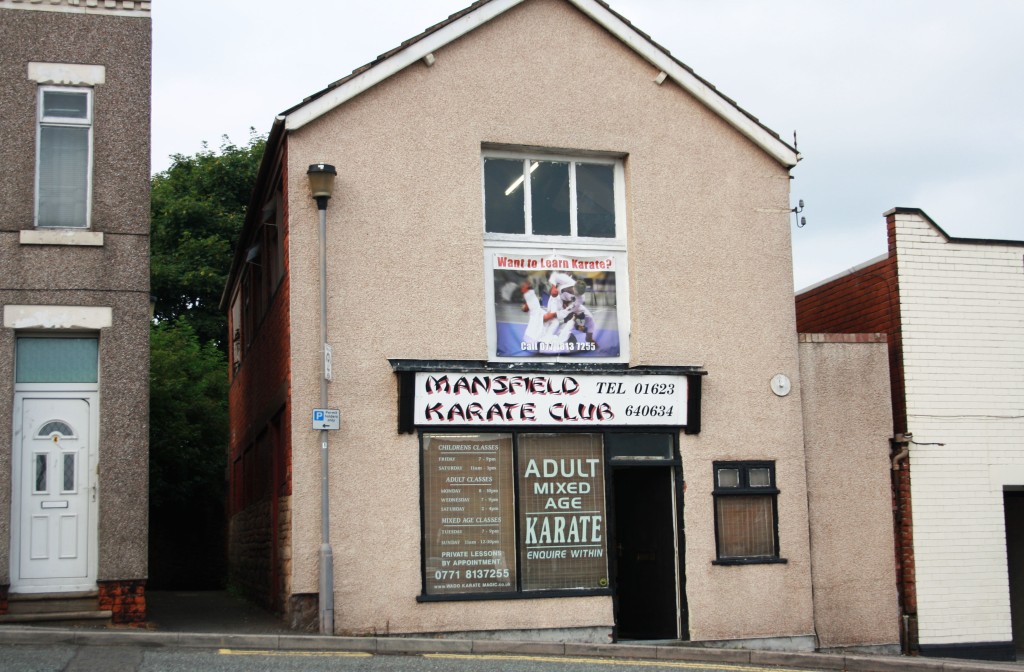
The building was two storey, with its own changing rooms and toilets; male and female, which was really unusual as it is often thought that there were very few women training in karate at that time. While it’s true that men outnumbered women, the Mansfield Dojo bucked the trend; there were some very able women who trained there, who seemed unfazed by training and fighting with the men.
The upper floor was an open space, uncluttered with a wooden floor, which was well-worn, polished by footwork, stained by sweat.
It had windows on three sides, but one aspect just overlooked a brick wall, this was the building opposite an alleyway. Another side looked over the rooftop of the Labour Club next door, and on the other wall the windows were set in a doorway that was never used; the remnants of the warehouse; apparently, an upper floor loading access that was meant to slide open, but never did. The windows in the door were too high to give a panoramic view, but I have distinct memories of being alone in the building, hammering through repetitions of kata while observing snow flurries swirling before the orange glow of sodium street lights outside.
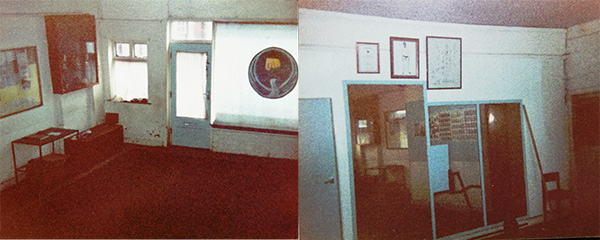
This all sounds very romantic and atmospheric, but the reality was that it was damp and, in winter, cold – oh so cold.
The only available heating was electric fan heaters at ceiling level, they really had zero effect; any heat they produced travelled upwards – this barely removed the chill.
The changing rooms, which for the men was tucked under the stairs, were inclined to be decidedly dank and smelled like the inside of an old fridge, a combination of the fug of sweaty shoes and festering, slightly wet, gis. I remember struggling to wrestle myself into a damp gi top, still pungent from the previous night’s training.
In the winter the floor upstairs was cold enough to split the skin on the soles of your feet. My grandfather had put me on to a salve called Snowfire, a ‘healing balm’, it was a green tablet of greasy overpowering potency. My grandfather was a farmer and out in all weathers, it worked for him and it certainly worked for me. I believe you can still get it, but only from those small independent pharmacies.
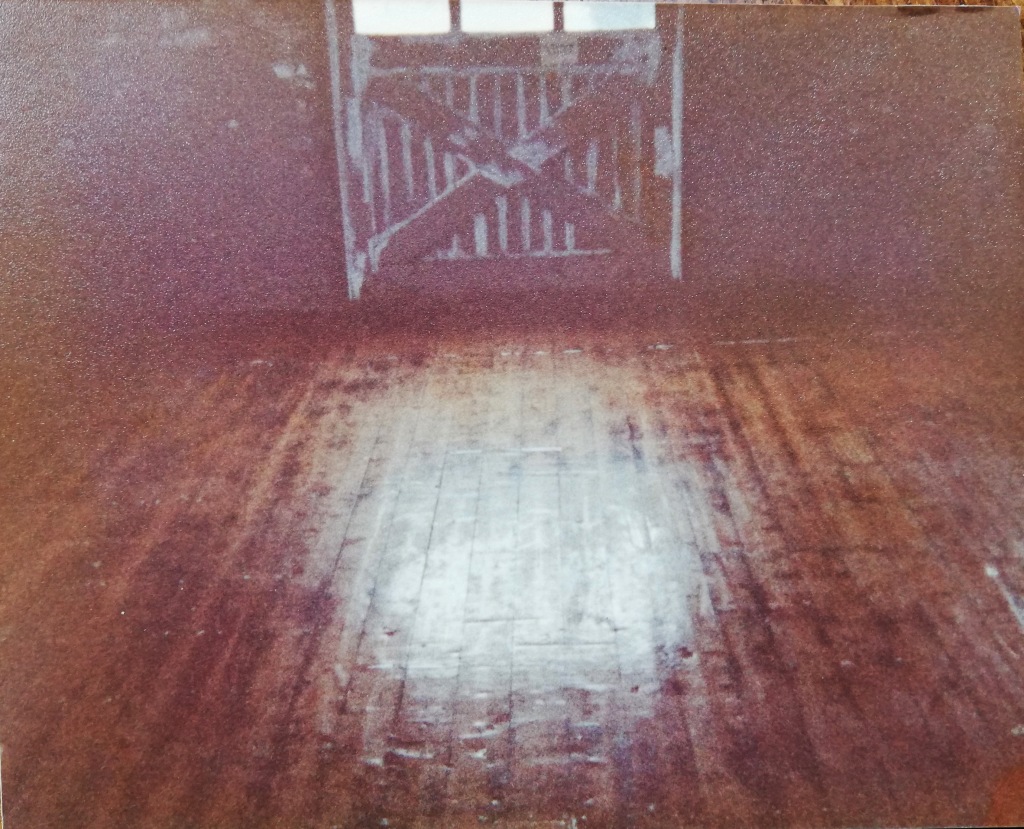
‘The Club’ as we called it was really close to the town centre. Later on, it became a good jumping off point for the pubs of Mansfield.
As I mentioned, next door was the Labour Club, if you wanted a drink in there, on most nights you needed to sign in, or be signed in by a member, but it wasn’t always the case. The Labour Club was big enough to host concerts for minor celebrities. One night I stood outside and heard Millie Small belt out her only hit single ‘My Boy Lollipop’. Such was the club circuit at that time. Although Millie was technically a reggae singer, she sang some soul classics. The Labour Club even managed to put minor American soul singers on the bill, like Edwin Starr, whose hit ‘War’ made a big splash in 1970. (Edwin Starr settled in nearby Nottingham and died there in 2003).
At this point I think I need to describe the 16 year old ‘me’.
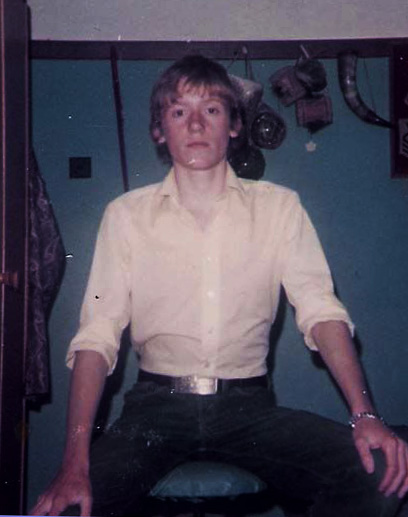
I had stopped growing at five foot eleven inches, I was always disappointed that I never made six foot. I was very thin, I always worried that when standing sideways I would just disappear. My chest was broad and matched my shoulders but it was oh so very shallow, I would try deep breathing exercises, but they had no effect. Physically I felt a little awkward and self-conscious. I never wore shorts, which was fortunate because in those days nobody did. In summertime I tried to tan, believing at that time it would make me look healthier; it didn’t work; I just accumulated more freckles.
Schools sports held no interest for me; it was all about cliques and teamwork. I wasn’t very good at teamwork and I despised cliques. My favoured sports at school were mostly individual activities; field sports in the summer; particularly throwing events (at which I excelled, having a fast arm), and tennis, which didn’t go down well with the rugby crowd, who joyfully told me that tennis was a ‘game for homosexuals’, a view supported by the PE teacher, Welshman and rugby goon Mr Owen; I didn’t let that put me off.
Karate gave me a physical outlet. I didn’t struggle with the exercise, and I enjoyed the learning of new skills. I found fighting initially intimidating. I caught a low kick early on, which slowed me down somewhat and made my eyes water and brought on the type of pain that is generally… indescribable. It was a first, but certainly not the last.
There was no shortage of sparring partners. Make no mistake, this was a busy Dojo, even with a high drop-out rate classes were packed; lots of young guys all wanting to fight. A class of over twenty upstairs and another equally large downstairs was not unusual.
I realised that most of the men there were significantly bulkier and stronger than me; I think that this was because they were either in heavy industry or mining, at that time I struggled to make 57 Kg. This fact came home the one year that we were forced to enter a weight category competition. Out of a big club entry I was the only lightweight on the card. This was the year that the UKKW decided to decamp its National Championships from the regular London venue of Crystal Palace to Burnley in Lancashire. The then general secretary of the UKKW was a Burnley man, and it must have seemed more economical to run the event there, but it was not without its problems.
This weight difference influenced the way I fought; in a very Darwinian way I had to adapt or suffer. I needed to create distance between myself and my opponent and worked on pressurising him so that he would move back into my kicking range.
Attempting body kicks brought me pain, with toes bent back or collisions with elbows, so I worked on my head kicks and tried all kinds of sneaky ways of slotting them in. I was very poor at foot sweeping in those days, and envied people who could do it well. In retrospect the ability to sweep would have been a useful threat to discourage an opponent who was eager to get close.
David Allsop, my instructor, was an outstanding counter-puncher; his timing was superb, but it was the courage to forestall the opponent at the moment he launched his attack that I really admired. I remember watching him battle his way through multiple opponents at Crystal Palace using this kind of ‘stop ‘em dead’ gyakuzuki, only to lose in the final to the then unstoppable Vic Charles (this was 1975).
But this was the thing; there was no structured fight training, no squad sessions, we were just expected to make it up as we went along, learn from each other. In part I am sure it came out of the idea that the basics, pair work and kata training would give you everything you needed to know, and in some magic way you would pick it up. Whoever designed the system made a big assumption about how we would make the transition, because the majority of people just couldn’t do it. I suspect that if there was any surviving film footage of those days it would show a lot of clunky blokes with serious expressions muscling through like badly constructed robots, all convinced that they were really ‘doing it’. This was why the Japanese instructors who came over were treated like gods; they were just so very well trained and many were the cream of the Japanese university system, they were the best of the best.
I do remember an effort at squad training, conducted at a Lincoln sports centre. This was organised/hosted by the then Lincoln instructor, who clearly had his take on how things should happen. Although it didn’t work out too well for him when, at the event we were preparing for, he clashed with Neiman Prince who completely outclassed him despite him trying to execute Judo techniques out of sheer desperation!
But the Japanese learning mentality is not the same as the western model. It is more suited to compliancy, which tended to be a more direct way of learning – cut the verbalisation, bypass over-intellectualisation and just get on with the job. Westerners were more inclined to ask ‘why’, which I think came as a shock to the incoming Japanese Sensei, and they didn’t have an explanation model to fall back on and were significantly hobbled by the language barrier. Nobody spoke about the mismatch between the cultures; the Japanese were too polite to, and the westerners were too much in awe to formulate their questioning in a coherent way.
Tim Shaw
Sample; Early Training.
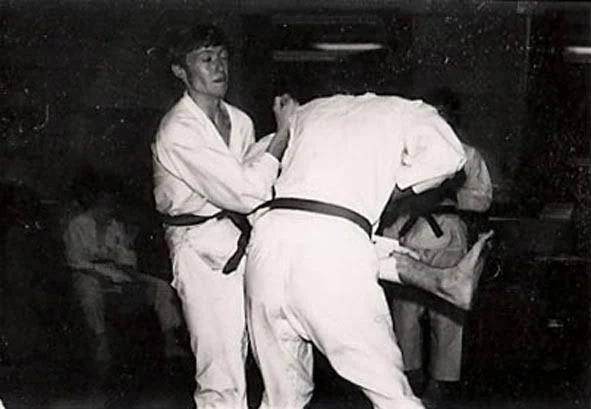
In my previous blog post I mentioned as an afterthought that I had written a chunky type of memoir (to exercise my brain over lock-down). This project grew and ended up being over 60000 words in length. And I joked that nobody would be interested in my obscure ramblings, but it seems I was wrong.
The document I wrote came in two flavours; one part was personal remembrance of what happened between the years 1974 to about 1982; the other part was a reflection on my experiences of how Wado evolved; at least, from my perspective. This sample is of the former flavour.
Here is a taster.
To set the scene; my training began at Sensei David Allsop’s Mansfield Dojo, in 1974, in the years just prior to the Kung-Fu boom [1].
Part 3.
What was training actually like in the early 1970’s?
It took me quite some time to get hold of a Gi, so I trained in jeans and a favoured yellow Adidas t-shirt. Nobody had ‘jogging bottoms’ and nobody wore shorts. Shorts were for football, and that was it!
A karate Gi in 1974 was a rare commodity, the Tokaido Japanese brand was the one to aim for, but they were so expensive. Cheaper Gis could be bought from Milom Company, I think they came from Manchester, but they were remarkably hard wearing. My first Gi was from a nameless company and was very light and badly made, but that was standard for the time.
In the sessions, generally, the warm-up was very callisthenic, low on stretching, high on boot-camp style sit-ups and press-ups, which were nearly always on the knuckles, no exceptions, this was an important part of your training. It made sense to us; it was explained as essential, as it forced you to align your wrist properly in a punch, and it had to be predominantly on the first two larger knuckles; instructors would sometimes check the indents left on your hands and it was very much frowned upon if the indents were in the wrong place.
Different instructors slightly customised their warm-ups.
Dave Nichols was heavily into muscle culture and as such there was a lot of arms and shoulders and heavy repetitions on squatting.
Robert ‘Sam’ Salmon was a lighter build and gave a good general warm-up that really did just prepare you for movement.
Whereas, one brown belt instructor in particular had it in his head that exercise was punishment; he enjoyed the reputation he gained from these ‘warm-ups’. He was often a stand-in instructor and when he appeared in front of the class, he must have seen how people’s faces fell in anticipation of what they were about to go through. It wasn’t rewarding, it wasn’t fulfilling, it wasn’t fun, it was just pain; you ended up standing in a puddle of your own sweat even before training began! This particular brown belt instructor operated a kind of gleeful cruelty. We had our own theories about him; we thought his sadism was a product of him getting too many knock-backs in his attempts to get Dan grade under Suzuki Sensei; incidentally, he never managed it. He eventually left – we didn’t miss him.
The Syllabus.
The bulk of the class was the basics; straight out of the little blue syllabus book with no variation. The book became the source of aspiration; you wanted to get onto the next page, to climb the ladder.
I studied it inside and out, wrote notes and memory aids on each page. I used mnemonics to remember sequences and the order of the pairs work.
Creativity and Japanese Sensei.
What is noticeable in retrospect is that any kind of ‘creativity’ in training was purely the domain of the Japanese instructors. I first experienced this on the early big residential courses. For me, this sealed the reputation of each of the Japanese Sensei, I marvelled at their freedom to create drills and combinations and they were incredibly devious in their exercise routines. The younger Japanese Sensei, fresh from the universities, delighted in showing us how physically inadequate we were – well that’s how it felt anyway. After each major course our instructors came back inspired by new warm-up exercises, not all of them healthy, or even safe.
The Mantra.
But for us, everything was done from the book and by the book. There was a level of correction and guidance going on but it was always about the ‘end position’, how you stood, the positions of your arms and much emphasis on making the correct stance. Nobody ever commented on how you moved. The mantra of ‘more speed, more power’ became a standing joke. In later years when an unsuccessful Dan grade candidate plucked up the courage to get feedback from Suzuki Sensei, the remedy was always the same, “More speed, more power”. And we took it to heart; the measure of our ability was on how fast and powerful we were.
In an early martial arts magazine there was even a cartoon drawn of Suzuki Sensei chiding Sakagami Sensei to execute “More speed, more power”!
If there was any creativity in our own training it was towards nurturing these two qualities and totally self-initiated.
Supplementary training.
For Dave Nichols it was the set of loose weights kept in the corner of the Dojo that supplemented his training. As for me – I went through a crazy period of drinking raw eggs with milk, sweetened with Horlicks powder. If I had access or the money for raw steak, I would have been chewing on that!
I had a chin-ups bar made out of an old TV aerial stretched between two trees. I also had an ex-army kit bag for a punch bag, really heavy, I would do squats with it across my shoulders; I procured a leather belt, from an old threshing machine, I wrapped it around a post and used it for striking. How much success I had is questionable.
The triad of; correct exercise; correct diet and sufficient rest and recovery was all misbalanced. Some of the exercises we were doing were just plain stupid; for example, harsh ballistic stretching, bunny-hopping and duck walking.
With diet; it was protein, protein and more protein; carbs never got a look in. And as for ‘sufficient rest and recovery’, nah, wasn’t going to happen.
It should go without saying, but our information sources were so limited; there was no Internet or YouTube tutorials. The martial arts magazines of the 1970’s were really sparse in their subject matter.
Ramping it up.
By about 1977 I had gradually I upped my training nights and doubled my classes.
In the evening there was an early class starting at 6 and then an overlapping late class which started at 7:30, and then there was time after the late class finished for some of us to get together for some more sparring.
One of the more senior grades; a total fanatic about his own training, used myself and another student as his personal sparring partners. His stamina was seemingly endless and the two of us would just tag team on him; when one of us was burnt out the other one jumped in, allowing recovery time, then rinse and repeat. It seemed to go on for hours, but I’m sure it didn’t.
As time went on, I took on more responsibilities. As a green belt I was sometimes asked to start off the late class, and then I seemed to take on more teaching. I was a little annoyed at first, because I was losing some of my training time, but I soon realised there were advantages; I could direct the training and train alongside – I was in control. I also learned so much by actually having to demonstrate and explain what we were doing, but crucially, once my role was established, I was given a key to the Dojo. This one privilege gave me space and freedom, as well as teaching me so much about personal motivation and self-directed training.
But I am getting ahead of myself.
Tim Shaw
[1] The Mansfield Dojo is still there. It is probably England’s oldest established bricks and mortar Dojo, founded in 1969. David Allsop Sensei still teaches regularly at the Dojo. English Heritage or the National Trust should really slap a preservation order on the building!
Featured image: Myself, indulging in some ugly and ungainly scrapping as a green belt in 1975.
Why are there so few books on Wado karate?

Or, the question might be; why would you want to publish a book on Wado?
I’m sure it’s not just me that’s noticed that if you want to buy a book on Shotokan karate then you are spoiled for choice; there are so many of them! Yet, if you search for books on Wado karate there are very few on offer. In this blogpost I intend to look further into this question.
Types of Wado books.
I am not going to do a critique on the books currently available; largely they occupy a very narrow category. The more recent ones seem to be plush publications that could be described as ‘coffee table books’, a credit to the amount of work put into them (God knows how many hours of editing and photographing have had to have happened to put them into production!). Slick hardbound editions, but still, following the same logic as the Ohgami books published in the 1980’s, or even the Pelham Suzuki book produced in 1967. That is, a picture book approach; step by step guide to Kihon, Kata and Kumite, with a measure of Japanese terminology and a few ‘pointers’ thrown in for good measure. But mostly, a syllabus book with pictures. [1]
I don’t say that disparagingly; where would we be without them?
I think that generally they supply a good set of references, but, in all honesty, probably offer much less than can be found on YouTube.
But why the discrepancy between Shotokan (or Goju Ryu) and Wado in terms of publications?
To shed a little light on this it might be worth going back to the root. From several sources the founder of Wado Ryu Otsuka Hironori is said to have been frustrated with his attempts at publishing books on Wado; an indirect quote from Horikawa Cheiko tells us that when Otsuka Sensei visited her husband Horikawa Kodo a renown Daito Ryu master, Otsuka said, “I’ll never write a book either” the discussion between the two masters continued, but they were in agreement that subtleties are missed and ‘techniques cannot be expressed in books or in words’ and he’s right, how can you convey that level of complexity in the pages of a book? [2]
It is my feeling that the ’catalogue of technique’ type of book, while it works for other styles, does a great disservice to Wado. It reinforces the complete opposite of what we should be aspiring to. It’s nobody’s fault, it was just a convenient medium. I am sure that some authors have already included a disclaimer.
However, it seems to play into the idea that we approach our karate like a picture book, a series of freeze-frames, akin to a flip-book, telling us that what is important is the accuracy of ‘end position’ (something I call ‘making shapes’), whereas we know that Wado is a discipline of movement; it’s not ‘A’ and ‘B’ that count, it’s what happens between ‘A’ and ‘B’ that is really important. Like fishes and water, movement is our medium.
Is it marketable?
It’s not that Japanese martial arts authors have not tried to push the envelope via the printed page, but it’s a really tall order and readers can get lost in the detail.
For me it’s quite telling that more recent sophisticated attempts have had to be published through private sources and ‘limited editions’, I am thinking of one particular well-connected author from within Wado who has been more adventurous and ambitious in his approach. But there are others, and again, they have to be published and financed privately for them ever to see the light of day. [3]
The problem is that the subject matter is so ‘niche’ as to be a complete non-starter in terms of how a publishing company might look at it, ‘How on earth is that going to sell a million copies?’ I can hear them say. It won’t, it’s not even ‘Fly Fishing’ by J. R. Hartley https://www.youtube.com/watch?v=CeicexenTmU (you have to watch the video to understand the reference).
Some martial arts authors have had to avail themselves of on-line publishing, production and sales; for some this may be the way forward, but it has its limitations.
The death of the book.
Is the book as a material phenomena finished?
Did it all start with Kindle? I ask myself.
No, the writing was always on the wall (pun intended); everything is being digitised now. Books are old technology; they are expensive and they take up space (look how many digitised books can be packed onto a device!). The digital archive has expanded to astronomical heights; beyond books, a YouTube channel packed with information and demonstrations costs nothing in real terms and as such becomes available to everyone… for free! This is the democratisation of information.
The audience can become huge.
As an example, Canadian psychology professor Jordan B. Peterson had become a superstar even before he launched into authorship, just through YouTube. He explained that an academic like him could work for years on a profound and meaningful publication only to have it languish on a dusty library shelf, read by very few people; whereas he started putting his lectures on YouTube, over 447 videos, but over a very short period of time his subscribers rocketed to what is currently around 4,060,000! His individual views on YouTube have reached a staggering 258 million!
Another example is American some-time stand-up comic and occasional MMA commentator Joe Rogan who has developed a podcast which attracts a massive audience, much bigger than Peterson’s, making him one of the largest media influencers in the world, as well as supplying him with considerable wealth.
What Rogan does is just podcast interviews, but what is surprising is that they are not just short snappy soundbites, no, these interviews can go on longer than most movies, averaging two and a half hours, some as long as five hours! (And people say that the average span of attention is shrinking – apparently not!).
Peterson and Rogan are not the only ones at it. There are some very ambitious characters within the martial art world that are keen to employ the new technology, all of varying quality. But it’s a buyer’s market. Sometimes it’s wise to employ your filter.
Will this be a good thing for martial artists? Ultimately yes; technology is a tool and has uncountable modes of operation and it is changing all the time. In the hands of the right individuals with the right intentions who knows what possibilities it will open up.
Someone recently asked me if I ever thought of writing a book about Wado? When I was in my mid 30’s I did consider the idea, but it never happened, and I am glad it didn’t, because at that age, even though I had been training since I was sixteen, I actually knew nothing of any value. I am still finding out how limited my knowledge is, even after all these years [4].
Tim Shaw
[1] Recently a couple of new Wado related types of publications have appeared in print; the Wado history book and the Wado autobiography. There may be more of those to come, and they are a welcome addition to knowledge of all things Wado – which ironically seem to be better suited to the printed page.
[2] Source: ‘Daito-ryu Aikijujutsu – Conversations with Daito-ryu Masters’ Interviews conducted and edited by Stanley A. Pranin. 1996 Aiki News.
[3] For me, of one of the best books on explaining Japanese Budo to Westerners, but it had to be published privately in the Netherlands, ‘Budo – ‘Thoughts on Michi’ by Kyudo master Matsui Iwao (2006).
[4] During lock-down I did start typing out the memories of my early training (technical perspective and personal), looked back from the vantage point of age, and I managed 60000 words, and that was just covering the years 1974 to 1982; that was just eight years out of a total of forty-seven years training. But I reckon it would only be of limited (niche) interest and might attract an audience of… two, if that.
It might be long on Marcel Proust ambitions, but would be certainly short on Marcel Proust talent.
The Martial Body.
Physical culture and martial arts have always been inseparable. Your physical properties/qualities have to aspire towards being the nearest match to the tasks you are expected to perform.
For me this throws up several questions:
So, how does that come about?
Are those physical properties a product of the training itself?
Am I perhaps talking about utilitarian strength versus strength for strength’s sake?
How strong do you have to be?
How is ‘strength’ defined within the traditional martial disciplines (is ‘strength’ even the right word, or the right measure)?
I am not going to get into the discussion about the merits of supplementary strength training; instead, I want to explore the subject through a very specific example.
Kuroda Tetsuzan Sensei.
In past posts I have made reference to Kuroda Tetsuzan Sensei, a modern day Japanese martial arts master, very much of the old school. Kuroda has an impeccable reputation amongst martial arts specialist who ‘know’. His ability is astounding.
He is the inheritor of the Shinbukan system which contains five disciplines within its broader curriculum; including the sword and its own Jujutsu system.
Kuroda has been a touchstone for me; the YouTube snippets have me totally spellbound; I have watched them so many times. Published interviews contain amazing insight and his ideas chime very closely to things I have heard in well-informed Wado circles.
This post is inspired by an extensive interview Kuroda Sensei gave in 2010 (published by Leo Tamaki ) and, to develop my theme I will make specific references to points made within the interview.
What really interested me was Kuroda Sensei’s back-story; the environment he was raised in as it related to the martial arts. Starting at the family home. In the interview Kuroda suggests that it was virtually impossible for him to avoid the all-pervading atmosphere of traditional Budo; it was as natural and essential to him as oxygen; in his domestic setting the noises of training were as much a part of his environment as birdsong.
In the interview Leo Tamaki does an excellent job of trying to pin Kuroda down to specifics about the physical side of the training, (I almost get the impression that Tamaki had tried to second guess the answers and that maybe Kuroda’s replies took him by surprise).
Kuroda’s father, grandfather and great uncle were brought up as martial artists of the old school, and, at the family home where they trained, there was only a thin partition between the living area and the small Dojo. In the interview, Kuroda Sensei made a reference to the physical qualities of these men:
“When we look at my grandfather’s body, or his brother’s we are impressed. But it is a body they have developed and acquired by training days and nights since their youngest age, using the principle of not using strength.
They did not develop it by lifting rocks, climbing mountains or carrying branches. (Laughs) It is by relentlessly practising without strength that they developed such thick arms. And this is a truly remarkable work.
Developing such a body without using strength requires unbelievable amount of training. It’s generally something developed only by intensive practice started very early in life. Being born in a martial arts masters’ house, they practised all day while students came and went. At the time, after a day of training without using strength it occurred that my grandfather could not hold his chopsticks any more and needed someone to wrap his fingers around.”
My view is that technique over strength develops its own brand of strength, a purely utilitarian strength. Picture a 19th century blacksmith who earns his daily bread by heating and hammering metal all day, and has done so since he was a boy big enough to hold a hammer, the body fashions itself throughout the craftsman’s lifetime, no artifice, no vanity. I once saw a photograph of a generation of blacksmiths, father, son and grandson, standing proudly outside of the forge, meaty forearms folded across their broad cheats, proud of their labours with probably no concern about their bodies; these were certainly not the same as the contemporary tattooed, preening metrosexuals to be found propping up the bar in your local bistro. This was functional muscle.
With Kuroda’s antecedents it wasn’t the ‘hours’ spent in the Dojo, it was the ‘years’ of day to day training that made the difference.
But it is Kuroda’s description of relaxed strength, a nuanced strength that transforms the body almost by stealth, that caught my attention. He describes his grandfather’s handling of the sword as being ‘light’, but he also tells tales of his grandfather’s ability in cutting, even with a blunt sword!
The interviewer further pursues his theme of practicing with strength, asking, “Can or should beginners then practise with strength and power?”
The answer is:
“In absolute terms, it is not really a problem that they practise like this. But by doing so, it is very difficult to evolve and progress to another practice. In an era where we have less and less time, and where we can only allocate a few hours per week or month, it is impossible to enter another dimension of practice by training like that.
This is why I teach the superior principles to my students, from the beginning. I also require them to absolutely practise without using strength. If we use strength, we are directly in a very limited work. By receiving these teachings from the beginning, it is normal to put them straight into application”.
Effectively he is trying to square the circle of people not having the time to train as people did in the old days but still needing to reach to the higher levels of attainment. The ‘strength’ issue just side-tracks the development. His attitude seems to be to introduce people to the importance of the core principles first, because at least then they can start to work it out with some element of time on their side.
He’s not against strength as such, I just think he’s very careful in his definitions, particularly about the application of strength.
Again, for me this rings bells. Thinking about my own early experiences of Wado, I am fairly sure the cart was placed before the horse, and then subsequently I had to spend an awful lot of time and effort deprogramming myself and learn to appreciate the importance of ‘principle’. To paraphrase a friend of mine, ‘We learned our karate back to front; we learned to punch and kick first and then we learned to use our body; it should have been the other way round!’ [1].
Newcomers to martial arts training, particularly men, have an image in their heads (and in their bodies) of what ‘strength’ looks and feels like. As an instructor, I have to try to unravel this fallacy, and even though they understand it in their heads it is stubbornly hard-wired into their bodies. With time and patience, it can be undone, but it takes a lot of dogged determination on the part of the instructor and the student to do it. Interestingly women do not seem so encumbered by this type of baggage; for me, this makes women easier to teach and gives them greater potential to fast-track their development.
I am certain that there is much more mileage in this area, but I think that Kuroda Sensei’s insights give us a glimpse into the past and the mindset of the Japanese martial artists of the old school.
Tim Shaw
Image of Kuroda Sensei, courtesy of; http://budoinjapantest.blogspot.com/2013/11/kuroda-tetsuzan.html
[1] He won’t mind me mentioning him, but credit for this comment goes to the irrepressible Mark Gallagher. Once met, never forgotten.
Event Report – 26th July 2021
Report by Natalie Harvey (3rd Dan)
26th July 2021 – 2 hours
Led by Steve Thain (4th Dan)
Theme – Ohyo Henka Dousa* (OHD)
Objective – To develop center, energy, connection, flow and sensitivity whilst steadily building towards real fighting utilising the Wado techniques and application you are trying to master.
After some planning we put into action and launched our first pop up course. The concept was a simple one. Design a session with the freedom to work on an aspect of Wado that you really wanted to get into. There is no instructor, everyone trains, small groups, but the session is planned and led by one person. Our first course was planned and led by Steve Thain (4th Dan).
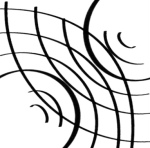
Steve created a methodical structure that built up over two hours. During the session our small group of six immersed ourselves in the practice and development of OHD, and supporting practices. We focused on the awareness of Wado principles, connecting to our centre, body centric movement allowing energy to flow freely within and beyond. Complete awareness of where we are in relation to our external world, and within ourselves internally. When trying to explain how someone should feel during OHD it is almost impossible to nail one way. Relaxed, but not all the time, be strong, but not all the time, use power and tension, but not all the time. I believe that it is all these things so long as you are self aware. If you are carrying unnecessary tension in your body, it will definitely show within this practice. I find myself continuously scanning for tension, my breath, stability on my feet and shifting position from kiru within.
When we connect to a partner in OHD and feel their pressure, depending on how in tune they are to their body, their intent will be felt. Ideally the flow which appears to initiate from them will transfer into the other person into what Wado Practitioners would recognise to be Ten-I, and we essentially become one. Within the cycle of OHD there is no beginning nor end. We shift between Ten-Ei, to Ten-Ei, to Ten-Ei. As the practice develops we may find ourselves naturally shifting and flowing from some or all three Ten-Ei to Ten-Tai to ten-Gi.
The other aspect that I took away from the session was ‘Being in the moment’ and not planning ahead. As soon as it had been pointed out to me, I realised that my mind had disconnected to my own body which meant I had disconnected to the other person’s centre and essentially I was doing my own thing, badly. I think in Japanese the term Mushin (a non-reflective, but mindful state), might be a good term for this explanation. When I brought my attention back to the moment, the chaotic feeling of the interactions with my partner seemed to go. Time felt as though it had slowed enough for me to engage meaningfully.
You don’t often get the opportunity to really get into something you love to do with like minded people chasing a common, personal and group goal . Two hours is never enough, but this is just the first Pop up of many we have planned with various theme focuses. My gut says these focused sessions will elevate all participants’ ability at an expressed rate compared to the regular training format. The regular dojo time is vital to our learning and we continue to attend regular Instructor led sessions in the usual dojo. Time will tell. For now we are enjoying the journey and have already booked our second pop up mini course for September 2021!
*Ohyo Henka Dousa
応用変化動作 (ohyo henka dousa)
“Applying (Practice) the variation of movements (Henkawaza) relating to the opposition’s initiations.”.
The Ten Ox Herding Pictures.
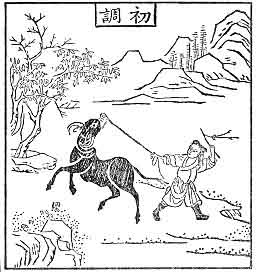
If you have an interest in Zen and the martial arts, you may or may not have come across the allegory of ‘The Ten Ox Herding Pictures’.
I have been meaning to post on this subject for a while now, and although I am not really a committed Zen Buddhist adherent by any significant measure, I have an outsider’s interest.
Before I get into it in any detail, let me say that I don’t see this allegory as uniquely ‘Zen’, I think it has a wider application, particularly for anyone exploring the conundrum of self-realisation and self-actualisation.
The ten images tell a story of a boy, the ox-herd, and his search for the missing ox and is a metaphor of the search for the true self (the original self); in Buddhist terms, the search for Awakening and the True Reality. The Ox-herd is the smaller self, the ego, who gradually realises that the reality is actually not far away and ultimately contained within him.
History.
Although these images developed a considerable following inside Japan, they are definitely Chinese in origin (as is Zen Buddhism actually). The earliest record of this sequence of images as a metaphor date back to the 11th or 12th century in China. There are usually accompanied by poems, but I would argue that you really don’t need them. At a visual level, you fill in the blanks with your imagination – no need for words – so very ‘Zen’.
The key differences between the various versions are usually found in the last three pictures. Some versions are content to just complete the series with a blank circle, (which particularly resonates with me), but, arguably, others have a deeper story to tell, making the final picture one of a Buddha or Boddhisatva in the ‘market place’, as if to say, ‘once enlightenment is complete, return to the world, to the busiest place and just ‘be’, amongst the people’. I like that – nobody disappears up into a mountain cave; that is not the place for the sage or the enlightened one. This is a philosophy that is nearer to the Neo-Confucianists, who I believe, have a closer resonance with the martial arts that we know. [1]
A description.
A boy is out in the countryside clearly looking for something. He is sometimes shown holding a kind of tether in his fist. (The wildness of the landscape increases as the narrative develops, as if to underline the difficulty of the quest).
At first he sees the ‘traces’ of the ox (which is sometimes referred to as a bull). Whether this is tracks, or even other things bulls and oxen tend to leave behind, is not really clear.
He catches a glimpse of the untamed ox. This wild spirit shows him a ‘Way’, it’s a hint, but it gives him direction and purpose. This is the beginning of ‘Do’ or ‘Tao’.
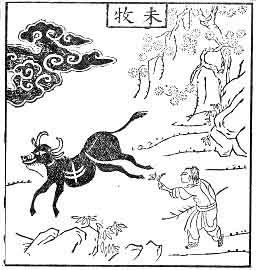
The boy pursues the ox, taking to his task with great determination. He finally connects with the animal and manages to attach the tether to it. The hard work begins. It’s a battle between the raw energy of the ox and the willpower and determination of the boy.
The boy is unaware that he is wrestling with his own true nature and trying to bridge the gulf between his uncultured petty ego and the untainted purity of his elemental self. The Buddhists enjoy the use of metaphor to describe this pure self; they are particularly fond of the image of a lotus flower that rises in its purity from the mud of the pond, perfect and unfouled. This is the true self that resides in all of us that remains pure and clean however much with sully it our own self-inflicted contaminants; which, with discipline, can shine forth again.
This is the discipline of the Dojo and the trials of the martial way; whether you want to describe it as a form of self-transformation (internal alchemy), or the ‘forging’ process of Tanren, it is a deep emersion in the greater process of training.
The disciplining of the ox in the various versions usually seems to take a couple of pictures, as if to accentuate the battles that occur between the boy and the ox. Gradually the creature succumbs to harness and becomes placid and resigned to the process. (In some versions the ox starts out pure black in colour and by degrees changes to white).
Eventually the boy and the ox establish a harmonious union. The boy is shown riding sedately on the ox’s back, playing his flute, without a care or worry in the world. This is sometimes referred to as ‘coming home’.
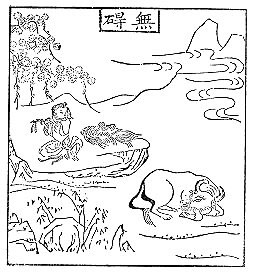
In the next pictures the boy and the ox are unconcerned about each other’s presence, there is no battle any more, there is no division; they exist in the same space because there is nothing to separate them; they are one and the same; this is a state of total harmony.
The next image is often described as ‘all forgotten’. The transition is virtually complete; nothing matters. The boys is there, the ox is there, but it is as if nothing is of consequence to either of them; it is just ‘being’.
The final images plunge deeply into the unknown and the esoteric, I don’t pretend to understand them, this is ‘returning to the origin’, whether you want to call this ‘the Great Tao’ or the ‘Universal Divine’ is up to you.
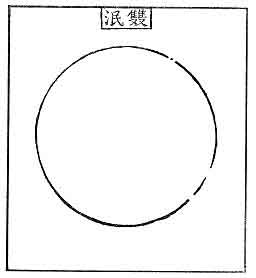
As an aside; many years ago, in my college education, myself and my fellow students were introduced to a retired educationalist, I wish I could remember his name. He was a very strange individual, very calm and patient, he spoke to us as if we were his children, but not in a condescending way. Here was a man who had lived a very full life (I think he’d been in the military during WW2). He encouraged us to ask searching questions, far beyond the limited educational brief. As the discussion opened out we found ourselves questioning the meaning of existence. He talked about ‘answers’ and I asked him, ‘what happens after you find all of the ‘answers?’ He paused slightly and then said, ‘You just… disappear’.
I remember, he smiled and just left that hanging in the air. If I am reading his reply correctly, this was the final message of the ox herding pictures. Here was the blank circle, or the empty landscape.
Leonard Cohen.
This set of pictures had a further reach than most of us realised.
I don’t know how many people are aware of this but singer songwriter Leonard Cohen had a soft spot for the ox herding narrative. I think it is common knowledge that Cohen plunged deeply into the Zen lifestyle, secluding himself in monastic Zen disciplines, indulging in harsh regimes of Zazen (seated meditation).
Some of his most thoughtful and erudite poetry and lyric writing came out of that experience. What ever you think of his vocal style and singing ability there is no getting away from the fact that Cohen was a talent that maybe even eclipsed Dylan. But people seemed not to have noticed a track called ‘The Ballad of the Absent Mare’ which featured on his 1979 album, ‘Recent Songs’.
Canadian singer songwriter Jennifer Warnes recounts how Cohen came over to her house after a meditational retreat, she said, “Leonard had found some old pictures somewhere, they were called ‘The Ten Bulls’, old Japanese woodcuts symbolizing the stages of a monk’s life on the road to enlightenment. These carvings pictured a boy and a bull, the boy losing the bull, the bull hiding, the boy realizing that the bull was nearby all along. There is a struggle, and finally the boy rides the bull into his little village. ‘I thought this would make a great cowboy song,’ he joked.” [2]
Here is a sample of Cohen’s ‘cowboy song’, obviously replace ‘mare’ with ‘ox’ and it’s the same tale:
“Say a prayer for the cowboy, his mare’s run away
And he’ll walk ’til he finds her, his darling, his stray
But the river’s in flood and the roads are awash
And the bridges break up in the panic of loss
And there’s nothing to follow, there’s nowhere to go
She’s gone like the summer, gone like the snow
And the crickets are breaking his heart with their song
As the day caves in and the night is all wrong
Did he dream, was it she who went galloping past?
And bent down the fern, broke open the grass
And printed the mud with the iron and the gold
That he nailed to her feet when he was the lord
And although she goes grazing a minute away
He tracks her all night, he tracks her all day
Oh, blind to her presence, except to compare
His injury here with her punishment there…”
Conclusion.
For this story/allegory to have been around for such a long time says something about its cultural power and its spiritual value. If you take any of the great or iconic stories that have stayed with humanity all the way from antiquity to the present day, their survival is an indication of what they have to teach us, as well as their resonance with the human condition; from the ‘Epic of Gilgamesh’ (2100 BCE) to ‘Moby Dick’, they present models and narratives that touch and inspire us.
The ox herd pictures could be seen as a compressed version of what Joseph Campbell refers to as the ‘Hero’s journey’ [3], but Campbell’s journey has 17 stages rather than 10. Campbell’s idea is so deeply engrained into western culture that we take it for granted; examples are: Homer’s ‘Odyssey’, ‘Star Wars’, ‘The Matrix’ and even ‘Harry Potter’.
The ox herd pictures are more overtly spiritual, but given their transcendent narrative there is much there to tie in to the martial artist’s personal odyssey, after all, martial arts also aspire to a transcendence, a development of character, a personal alchemy. Let us not pretend that our martial arts journey is devoid of spirituality; by that I don’t mean the ‘Spirituality’ that is allied to organised religion; but instead, the more secular brand, associated with pondering things that are outside and beyond yourself and your whole purpose of being alive and conscious and the meaning of your existence. Buddhism sought to address these puzzles without the need to resort to Gods or supernatural deities (although certain forms of Buddhism never quite shook off the shackles of shamanism, adding things that were never part of the original message).
Of course, martial arts people tend to be very pragmatic and deep meditation on spiritual matters are not to everyone’s taste. My thinking is that while I have no desire to become a Zen Buddhist there is something to gain from exploring the wider cultural context.
But that’s my view – to you, it might just be a load of old Bull.
For those of you have an inclination towards trivia; Cat Stevens’ 1972 studio album ‘Catch Bull at Four’ is an obvious reference, which may well have flown right over the head of the average pop music fan of the 1970’s. The album cover makes it very clear.
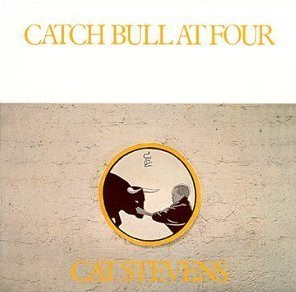
Tim Shaw
[1] Through personal research and correspondence with experts in the field, I have come to the opinion that works related to the Japanese martial arts that have been pegged as coming from the Zen tradition are actually Neo-Confucian in origin, e.g. Takuan Soho ‘The Unfettered Mind’.
[2] Source: https://www.songfacts.com/facts/leonard-cohen/ballad-of-the-absent-mare
[3] See Joseph Campbell’s ‘Hero with a Thousand Faces’. 1949.
If you are interested in the crossovers between far eastern traditions and philosophy and western psychology, I found that this book has some interesting sections relating to the Ox Herding Pictures; ‘Buddhism and Jungian Psychology’, J. Marvin Spiegelman and Mokusen Miyuki, 1994.
Other references and links:
https://en.wikipedia.org/wiki/Ten_Bulls
For an excellent description of the series follow this link: https://jessicadavidson.co.uk/2015/10/02/zen-ox-herding-pictures-introduction/
For the full lyrics by Leonard Cohen’s ‘The Ballad of the Absent Mare’ follow this link: https://www.azlyrics.com/lyrics/leonardcohen/balladoftheabsentmare.html
The image featured for ‘Catch Bull at Four’ is sourced from Wikipedia with the appropriate copyright stipulations cited here: https://upload.wikimedia.org/wikipedia/en/3/3d/Catch_Bull_at_Four.jpg
Ox herding pictures courtesy of: https://www.sacred-texts.com/bud/mzb/oxherd.htm
Wado on Film (Anything on film!) – Part 2.
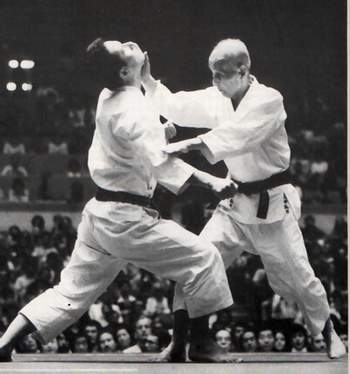
Continued from part 1. What can we possibly gain from these ‘records’ of genius? How do we read the evidence presented to us?
What are we able to judge?
To return to the martial arts (and other arts).
Observing films on YouTube or other sources; shapes and patterns can only give us so much. It’s how we process the information that counts, but usually we cannot help but to attach our own baggage to it; this can cause its own problems.
To expand: If we look at the idea of works of art; it is said that it’s all about relationships:
- The relationship of the artist to their subject – think of landscapes or portraits. The artist must engage and interpret their personalised understanding of the subject.
- The relationship of the artist to their medium – this is the practical depiction of the theme and all of the technical aspects involved. This is the means by which the message is delivered.
- The relationship with the artist through their work to their audience.
Now, extend that to master Otsuka, (whether it is on film or a demonstration in front of an audience):
- His subject is his understanding of Japanese Budo.
- His medium is his performance – what he chooses to show is through the prism of his selected material, be that solo or paired kata or fundamentals.
- Then, ultimately, the connection/relationship between the ‘artefact’ as presented, and the viewer, the audience.
As with all of the above, clearly, the viewer has to be up to the task.
For a viewer in an art gallery, a Joshua Reynolds portrait from 1770 may present less of an intellectual challenge than a Jackson Pollock ‘Action Painting’ from 1948. The crisp clarity of Reynolds gives the viewer more to grasp on to than the mad, seemingly random, spatter of paint that Pollock applied to his canvases. But both have amazing value and depth (to my mind anyway).
It has been said to me on more than one occasion that those demonstrations that master Otsuka did in his later life were actually designed with a particular audience in mind; for the real aficionados, for those who really had the eyes to see what we mere mortals fail to see. They are not quite Jackson Pollock, this is perhaps where the metaphor is a little too far stretched, but sadly they still reside in an area above most of our pay grades.
To understand Otsuka (or Pollock) we would need to have considerable insight into the workings of the artist’s world combined with the ability to grasp the intangible.
With master Otsuka a good starting point would be to understand the world in which he lived, as well being prepared to ditch our western lenses, or at least be aware of how they colour our understanding of Japanese society and culture at that particular time. But even then, if we plunged headlong into that task, it would need to be supported by a huge amount of practical knowledge of Japanese Budo mechanics relevant to that particular stage in its development. You would be hard pressed to find anyone with those credentials.
The comparison with the visual artists and master Otsuka can also be exercised in this way: It is a sad fact that when we encounter an artist’s work in a gallery it is often in isolation; we seldom see the work as part of a continuum, instead it is a snapshot of their development at the particular time it was produced. There are very few examples in the art world where this development can be seen; the only one I can think of is the wonderful Van Gogh Museum in Amsterdam, where it used to be possible to follow the artist’s development as a timeline; Van Gogh’s immature work looks clunky and uncultured, he’s finding his feet, he experiments with different styles (Japanese prints influenced, pointillism, etc) and then his work starts to blossom as it becomes more emotionally charged. What a pity he only worked for about ten years. My guess is that given more time he would have gone pure abstract, what a development that would have been!
What if?
To return to Nijinsky (from part 1) – what if a piece of film was discovered of Nijinsky dancing? What would a modern ballet dancer be able to gain; how would they judge it? Perhaps Nijinsky’s famous ‘gravity defying’ leaps would not look so impressive, in fact, compared to contemporary dancers he might look very ordinary. We will never know.
(Perhaps someone might comment that he has his hand out of position, or that he is looking in the wrong direction?)
But maybe the real power is in the myth of Nijinsky as another form of truth, which allows Nijinsky to become an inspiration, a talisman for modern dancers. [1]
For master Otsuka, as suggested above, the pity would be that his whole reputation and legacy should hang on hastily made judgements of those movies shot in later life.
But who knows; if he did have film of him performing when he was in his early 40’s (say from the mid 1930’s) perhaps he would have hated to have been judged by his movements and technique at that age? I would suggest that early 40’s would have put him at his physical prime, but not necessarily at his technical prime.
It’s a bit like the way great painters would hate to be judged by their early work. [2].
Like anything that is meant to be in a state of continual evolution, its early incarnations probably served some uses, however crude, but it’s never wise to stick around. Creatives like Otsuka weren’t going to allow the grass to grow under their feet. [3]
Anecdotes of Otsuka’s early days told by those close to him inform us that his fertile creativity was a restless reality; his mind was constantly in the Dojo. The truth of this comes from his insistence that Wado was not a finished entity, how can it ever be?
Conclusion.
I’m not saying that it is a completely pointless exercise. In writing this I am still working it out in my own head, trying to remind myself that we are still fortunate to have some form of connection to Otsuka Sensei, however tenuous, and how lucky we are to still have people around who bore witness to the great teacher, although, as we know, that will slip away from us so gradually that we will hardly notice it.
I have to remind myself that we are supposed to be part of a living tradition, a continuing stream of consciousness; a true embodiment of the physical form of what Richard Dawkins called a ‘meme’ [4]. This is why instructors take their responsibilities so seriously to ensure that Wado remains a ‘living tradition’, with emphasis on the ‘living’, not an empty husk of something that ‘used to be’. This is why I am reluctant to describe master Otsuka’s image as an ‘anchor’, because an anchor, by its very nature, impedes progress.
The best we can hope for from these ghostly moving pictures from the past is that they can be seen as some kind of inspirational touchstone. But, like the shadows in Plato’s Cave it would be a mistake to take them for the real thing [5].
Tim Shaw
[1] For anyone interested in Vaslav Nijinsky I recommend Lucy Moore’s book, ‘Nijinsky’. It tells an amazing story of an amazing man in an amazing age. Why nobody has made a movie about Diaghilev, the Ballets Russes and Nijinsky I will never know. I reckon Baz Luhrmann would do a fine job if he was ever let loose on the project.
[2] I have to acknowledge that in most competitive sporting fields the athlete is probably at his/her overall prime in their more youthful days. But, when looked at in the round, karate and other forms of Japanese Budo run to a different agenda. For me, and many others, sport karate is not the end product of what we do – it’s a by-product, an additional bonus for those who choose that path.
Look at the careers of dancers. I heard it said that dancers die twice. The first time happens when by injury or by more gradual natural debilitation they have to stop doing the one thing they love, thrive on and that their whole identity has been wrapped up in. The second time, is obvious. As this BBC article (and link to radio documentary) explains: https://www.bbc.co.uk/programmes/articles/1fkwdll6ZscvQtHMz4HCYYr/why-do-dancers-die-twice
[3] I know that am rather too fond of making references to jazz musician Miles Davis, but I have a memory of reports of Miles refusing to play music from his iconic ‘Kind of Blue’ album in his later years; he would say, ‘Man, those days are gone’ underlining his forever onwards trajectory – just as it should be.
[4] ‘Meme’ NOT the Internet’s interpretation of the word but, like a gene. However, instead of being biological, it refers to traditions passed down through cultural ideas, practices and symbols. https://en.wikipedia.org/wiki/Meme
[5] ‘Plato’s Cave’ https://en.wikipedia.org/wiki/Allegory_of_the_cave
Otsuka picture source: http://www.dojoupdate.com/wado-ryu-karate/master-hironori-otsuka/
Wado on Film (Anything on film!) – Part 1.
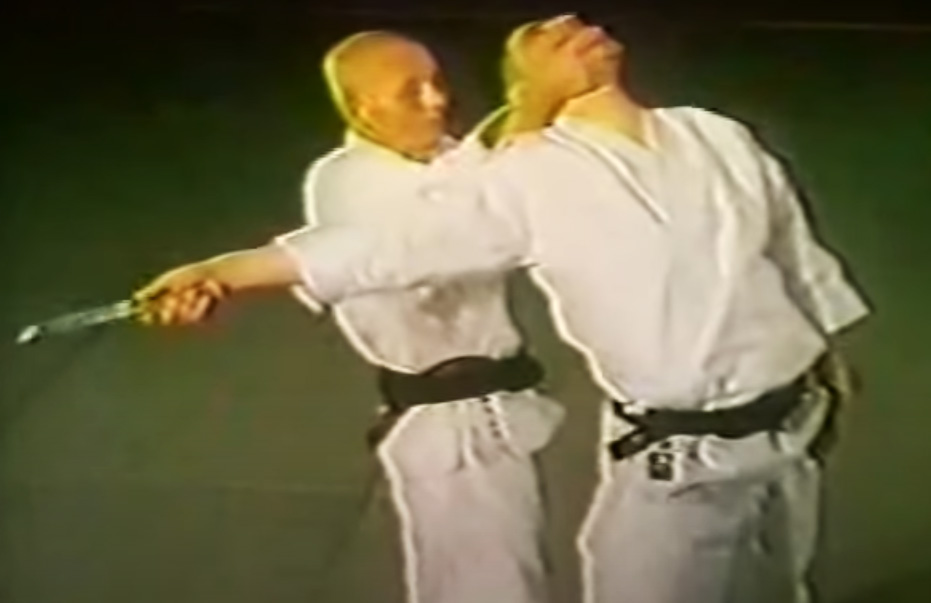
On the surface it would appear that we are blessed to have so much film of the founder of Wado Ryu available to us. It is lucky that Otsuka Hironori was not camera shy and showed enough foresight to actually have himself recorded with the intention of securing the legacy of his techniques and ideas for future generations. I have heard that there is even more unseen material that has been archived away, held secure by his inheritors.
Although it is interesting that there seem to be zero examples of film of Otsuka Sensei as a younger man; while there are photographs a plenty. (Otsuka Sensei was born in 1892 and only passed away in 1982).
He appeared to hit his filmic stride in his mid-seventies. Although a while back, a tiny snippet of footage of the younger Otsuka did appear as almost an afterthought on a JKA Shotokan film. It was a bare couple of seconds, it certainly looked like him – he was demonstrating at some huge martial arts event in Japan; the year is uncertain, but I am guessing some time in the 1950’s. In this film there was an agility and celerity to his movements which is not so evident in his later years. [1]
Historically, it does seem odd that there is so little film available from those years of such a celebrated martial artist.
Ueshiba Morihei, the founder of Aikido has a film legacy that goes back to a significant and detailed movie shot in 1935 at the behest of the Asahi News company. Ueshiba was then a powerful 51-year-old, springing around like a human dynamo, it’s worth watching. [LINK]
On first viewing that particular film it left me scratching my head; initial examination told me that the techniques looked so fake. But the more I watched, there were individual moments where some strange things seemed to happen (at one point his Uke is propelled backwards like an electric shock had gone through him). At times Uke seems to attempt to second-guess him and finds himself spiralling almost out of control. Really interesting.
But for Wado, is this even important? Why does it matter? Afterall, Wado Ryu had already been launched across the world, much of which happened during Otsuka Sensei’s lifetime. Also, the first and second generation instructors were doing the best of a difficult job to channel Otsuka Sensei’s ideas.
So, what can we gain from watching flickering images of master Otsuka showing us the formalised kata or kihon? What value does it have?
I saw Otsuka Sensei in person in 1975. I watched in awe his demonstration on the floor of the National Sports Centre, Crystal Palace in London. I was only seventeen years old. I remember thinking at the time, ‘here is something very special going on in front of my eyes – I know that – but I can’t put my finger on exactly what it is’.
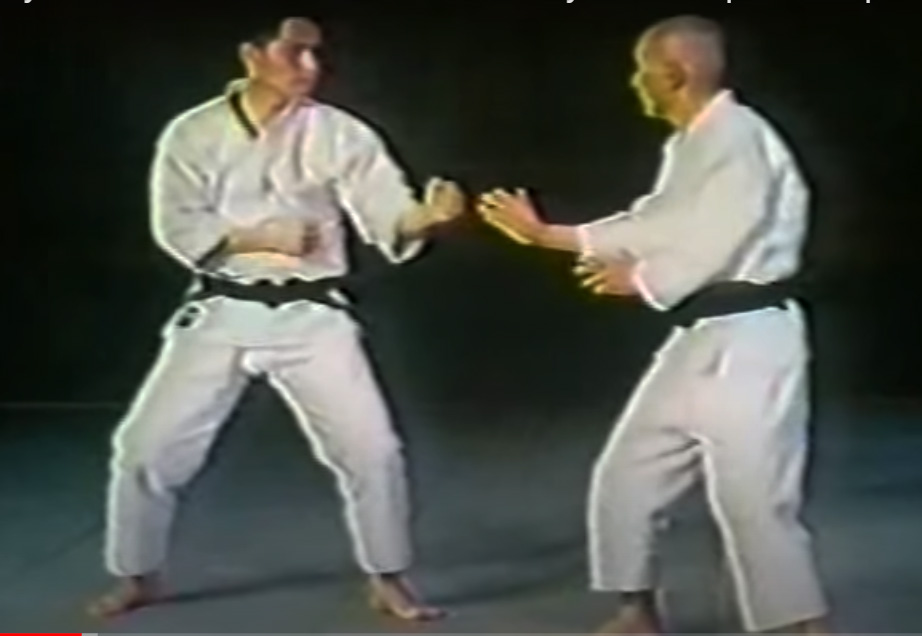
At that age and the particular stage of my development, I had very little to bring to the experience. I lacked the tools. Possibly the only advantage I had at that time was I was carrying no baggage, no preconceptions; maybe that is why the memory has stayed so clear in my mind [2].
Interestingly, Aikido founder master Ueshiba’s own students, in later interviews lamented that they wished they’d paid more attention to exactly what he was doing when he was demonstrating in front of them; even when he laid hands upon them, they still struggled to get it.
Can we ever hope to bridge the gap?
I think it is useful to acknowledge the problem. The reality is that we are THERE but NOT THERE; we are SEEING but not SEEING. I believe that we often lack the refined tools to understand what is really going on and what is really useful to us as developing martial artists. It comes down in part to that old ‘subjectivity’ versus ‘objectivity’ problem; can we ever be truly objective?
But it is the evanescence of the experience; it flickers and then it is gone and all we are left with is a vain attempt to grasp vapour. But isn’t that the essence of everything we do as martial artists?
To explain:
Two forms of artefact.
I read recently that in Japanese cultural circles they acknowledge that there are two forms of artefact; ones with permanence, solidity and material substance, and ones with no material substance, but both of equal value.
The first would include paintings, prints, ceramics and the creations of the iconic swordsmiths. For example, you can actually touch, hold, weigh, admire a 200 year old Mino ware ceramic bowl, or a blade made by Masamune in the early 14th century – if you are lucky enough. These are real objects made to last and to be a reflection of the artist’s search for perfection; they live on beyond the lifetime of their creator.
But the second, only loosely qualifies as an artefact as it has no material substance, or if it does it has a substance that is fleeting. This is part of the Japanese ‘Way of Art’ Geido.
There are many examples of this but the best ones are probably the Tea Ceremony (Sado) and Japanese Flower Arranging (Kado). Even the art of Japanese traditional theatre which is so culturally iconic actually leaves no lasting material artefact.
In the Tea Ceremony the art is in the process and the experience. Beloved of its practitioners is the phrase, ‘Ichi go, Ichi e’ which means ‘[this] one time, one place’.
The martial arts also leave no material permanence behind. Their longevity and survival are based upon their continued tradition (this is the meaning of ‘Ryu’ as a ‘stream’ or ‘tradition’, it seems to work better than ‘school’). The tradition manifests itself through the practitioners and their level of mastery; this is why transmission is so important. But a word of caution; the best traditions survive not in a state of atrophy, but as an evolving improving entity. It is all so very Darwinian. Species that fail to adapt to a changing environment and just keep chugging on and doing what they always do soon become extinct species.
Film (Nijinky, a case history).
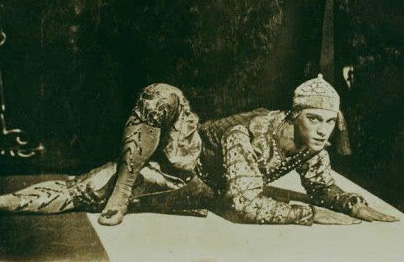
Vaslav Nijinsky (1890 – 1950) was the greatest male ballet dancer of the 20th century. He was probably at his majestic peak around about 1912 as part of Diaghilev’s Ballets Russes. To his contemporaries Nijinsky was a God; he could do things other male dancers could only dream of; he danced on pointe and his leaps almost seemed to defy gravity. As this quote from the time tells us:
“An electric shock passed through the entire audience. Intoxicated, entranced, gasping for breath, we followed this superhuman being… the power, the featherweight lightness, the steel-like strength, the suppleness of his movements…”.
But, there was never any film made of this amazing dancer, so, all we have left are these words. Even though, at the time, movie-making was on the rise (D. W. Griffith was knocking out multiple movies in the USA in 1912 and earlier). At the time the dance establishment distrusted the new medium of moving pictures, they feared that it trivialised their art and turned it into a mere novelty; which clearly proved to be incredibly short-sighted.
If Nijinsky, arch-performer, had anything to teach the world of dance it is lost to us. Incidentally it is said that Nijinsky destroyed his mind through the discipline of his body. He ended his days in and out of asylums and mental hospitals.
We will never know how good Nijinsky was in comparison to modern dancers, or if it was all a big fuss about nothing. But then again, the very same could be said about any famous performer, sportsperson or martial artist born before the invention of moving pictures.
Other forms of recollections or records that act as witnesses.
A writer or composer leaves behind another form of record. For composers before the first sound recordings in 1860 it was in the form of published written music or score. We would assume that this would be enough to contain the genius of past musicians?
But maybe not.
Starting right at the very apex of musical genius, what about Mozart?
Well, maybe those written symphonies, operas etc. were not a faithful reflection of the great man? Certainly, there is some dispute about this. There has been a suggestion that rather like the plays of Shakespeare, all we have left are stage directions, (with Shakespeare the actors slotted in whatever words they thought were appropriate!).
We judge Mozart not only by todays orchestral/musical performances, but also by his completed score on the page, and some may see these pages as a distillation of Mozart’s genius; but perhaps Mozart’s real genius was expressed through something we would never see written down, thus, today, never performed? This was his ability to improvise and elaborate around a stripped-back musical framework. It is reported that he was able to weave his magic spontaneously. As an example, Mozart was known to only write the violin parts for a new premier performance, allowing the piano parts, which he was to play, to come straight out of his head. We have no idea how he did it, or what it might have sounded like.
More on this developing theme in the second part. What point is there to all this chasing of shadows? Are we kidding ourselves? Can we be truly objective to what we are seeing?
Part 2 coming shortly.
Tim Shaw
[1] If anyone is able to track down this piece of film, I would be grateful if they would let me know the URL. It seems to have disappeared from YouTube, or my search skills are not what they used to be.
[2] This was the same year as the IRA bomb scare, as well as Otsuka Sensei getting the back of his hand cut by his attacker’s sword.
Image of Nijinsky (detail). Nijinsky in ‘Les Orientales’ 1911. Image credit: https://www.russianartandculture.com/god-only-knows-tate-modern/
Shikukai in Essex, Shouwa Jyuku – the challenge of returning to the Dojo.
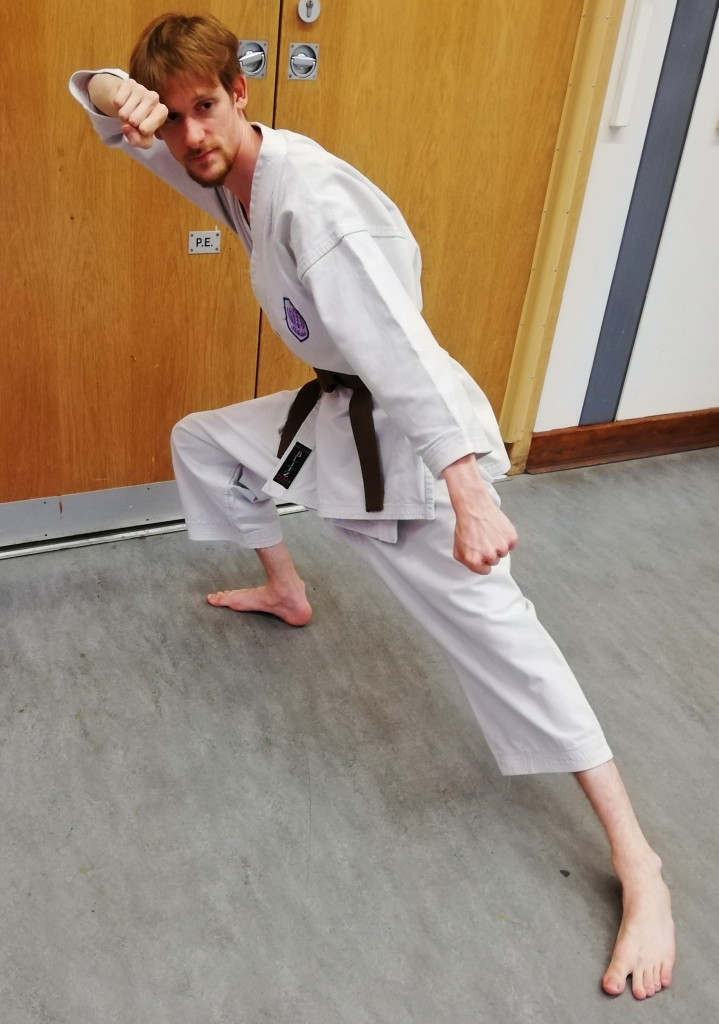
Shikukai in Essex is open for business. Since the middle of May we have been managing and designing an intelligent return to training.
It’s not really realistic to just bounce people straight back into a pre-Covid training regime, it needs to be handled with care and consideration, and we are doing just that.
Over the months of lock-down it gradually dawned on me exactly what the full cost of enforced inactivity was liable to be. I know that many people recognised the problem early on and set about engaging with any form of exercise that was available to them. Running and exercise apps acted as motivators to pound the pavement; anything was better than nothing.
But for some this headlong leap into road running may have been great for the heart and lungs and to burn off those indulgent calories, but the joints were ill-prepared for the amount of sudden pressure and wear and tear. The combination of lack of stretching, no real warm-downs and poor footwear soon slowed some of these runners down, or stopped them dead in their tracks. Hamstrings twanged, cruciate ligaments just gave up and knees went into revolt.
Of course, some people just waved the white flag and were content to watch the weight pile on, unaware of how long these lock-downs were liable to go on for, and assuming that their bodies would just suffer a minor physical drop-off and, after a couple of workouts… back to normal. Not so.
As the situation dragged on, the potential for physical and mental atrophy became very real. When motivation was needed anxiety and uncertainty created a kind of brain fog and the normal pressures and purposes of life morphed into something very unfamiliar.
Of course, everyone’s position was different. While for some Covid was a devastating experience, other were able to flip the world turning upside down into something they could benefit from.
The positive stuff.
One positive aspect of this was that we now had time to contemplate. I know that so much navel-gazing happened over the lock-down periods; which is not a bad thing. Normally this generates some kind of plan; but plan for what exactly? And on what time-scale?
I suspect that many people had the opportunity to recalibrate their lives, unsure of what they want, but certain about what they didn’t want. Forget about those pipe dreams of ‘learning a language’ or ‘buying a cello and turning into the next Jaqueline Du Pré, I don’t know anybody who actually did that.
Maybe, out of all that darkness and depressing TV news the human spirit was able to push beyond and reinvent itself? (This is the optimist in me speaking).
Another positive was that we were able to revaluate the importance of connections to family and friends. However, Skype/Zoom calls only went so far; a poor substitute for being face to face. People started talking about ‘hugging’, something that was hardly ever talked about or valued before, it was just taken as a given.
On top of all this, for me, it made me reframe the importance of the Dojo and training shoulder to shoulder, face to face.
It is said that you only really appreciate something after it has been taken away from you – so true.
Our own ‘return’.
When we did return to the Dojo in May; although nothing was said, smiles on faces and a palpable atmosphere of positivity spoke volumes.
After all, karate training is paradoxically something we do for ourselves, but in a group. Just look at all we gain from our training experience.
Put aside the physical benefits and examine all of those other life-affirming attributes.
For that evening, at that time, pressures melt away, you almost become someone else; but in reality, you are tapping into aspects of your persona that normally lay semi-dormant in your day-to-day life.
The Dojo can be described as a crucible or a hothouse, but there is something about being in that supercharged environment, alongside other people that makes it so special. Add to that all the benefits of being in a Flow State [See previous blog post] and it is everything that is positive and rewarding.
The first sessions back have really been about rehabilitation. I knew that the two areas to work on were; looking at what people’s physical condition was like and also how much of a slip-back had occurred in terms of technical knowledge? More of a memory thing.
In the first area, tightened muscles from so much sitting around was something to tackle. I spent longer on the warm-up and stretch and incorporated fascia and core work throughout, and I have kept that going.
I also knew that hammering up and down the Dojo in lines was going to be too much of a shock to the system; so, kihon work has been interspersed with kata.
For kata it was all about memory work and patterns. The same with paired exercises, although these were hindered by the fact that Covid regulations say that we still cannot work in pairs. We did however work body evasions against Jo; this gave some feeling of responding to a threat.
Speaking generally, there never has been a better time to get in the Dojo; if you are a new beginner, or a lapsed martial artist who has never really shaken off ‘that itch’, now is the time to take positive steps.
Even if you are just curious; come along, watch a session, talk to us. If you are of the mindset whereby you want more from your martial arts training than just making ever-faster shapes, then maybe Wado Ryu, as a form of Japanese Budo is what you are looking for.
Photo: George Krethlow-Shaw 2nd kyu working on Kushanku.
Tim Shaw